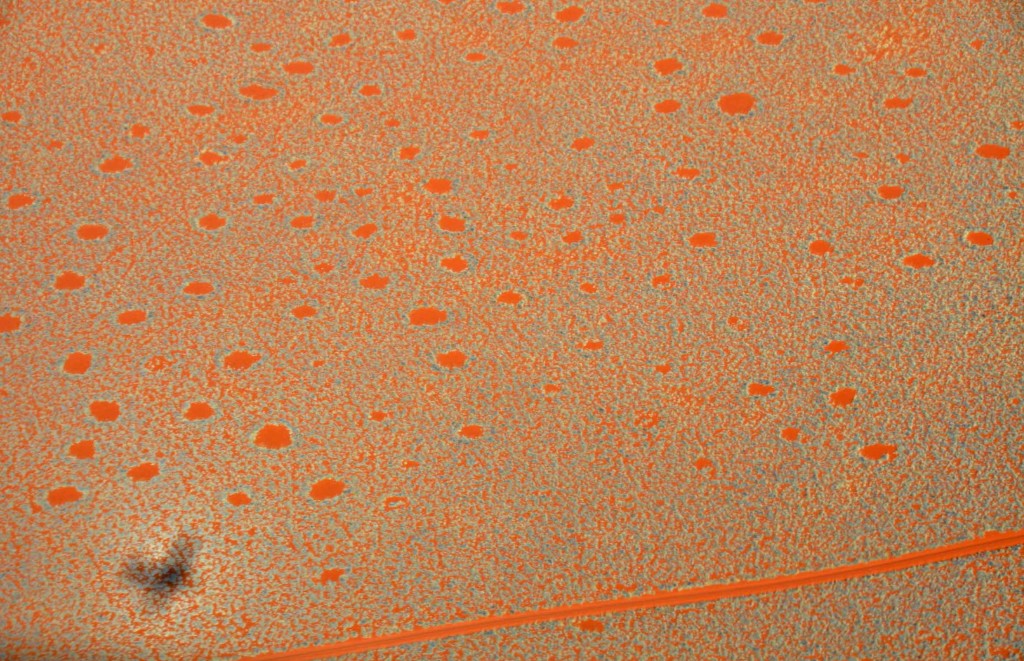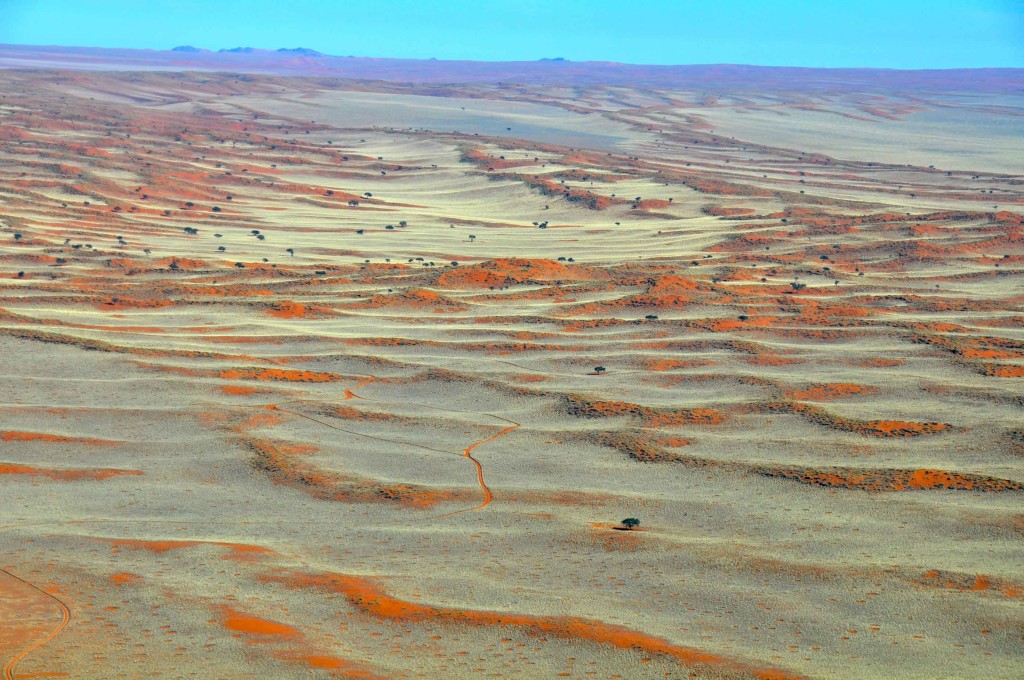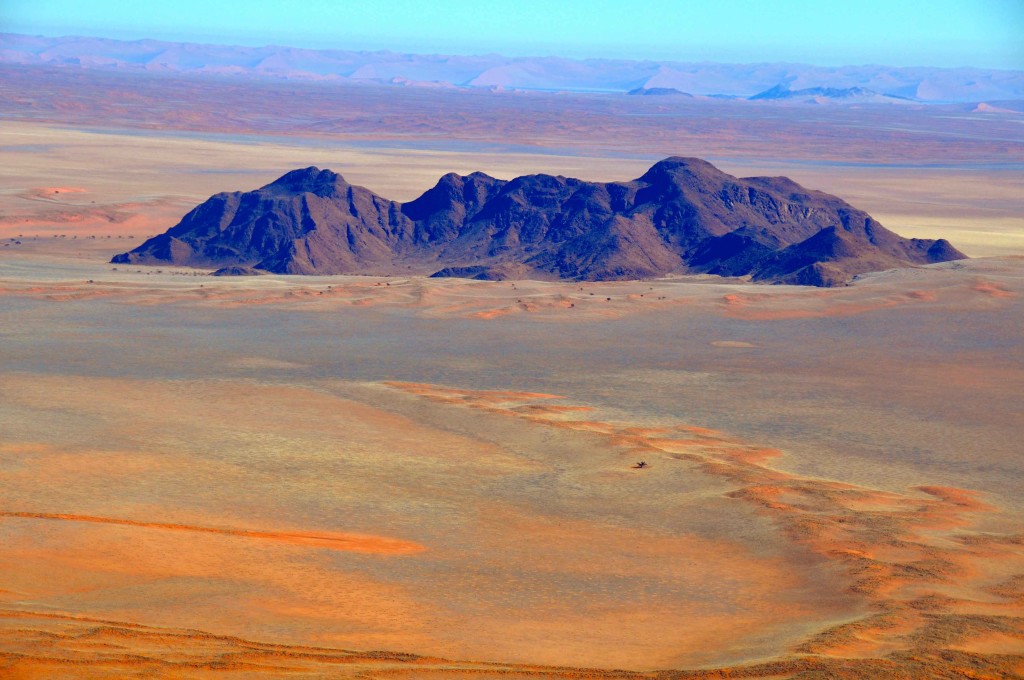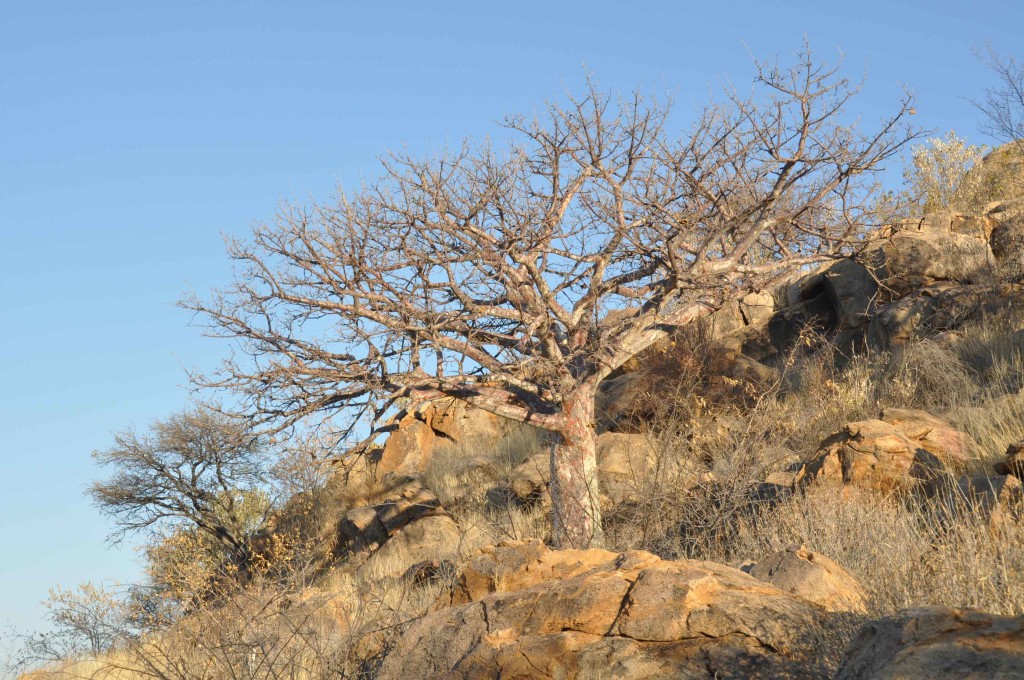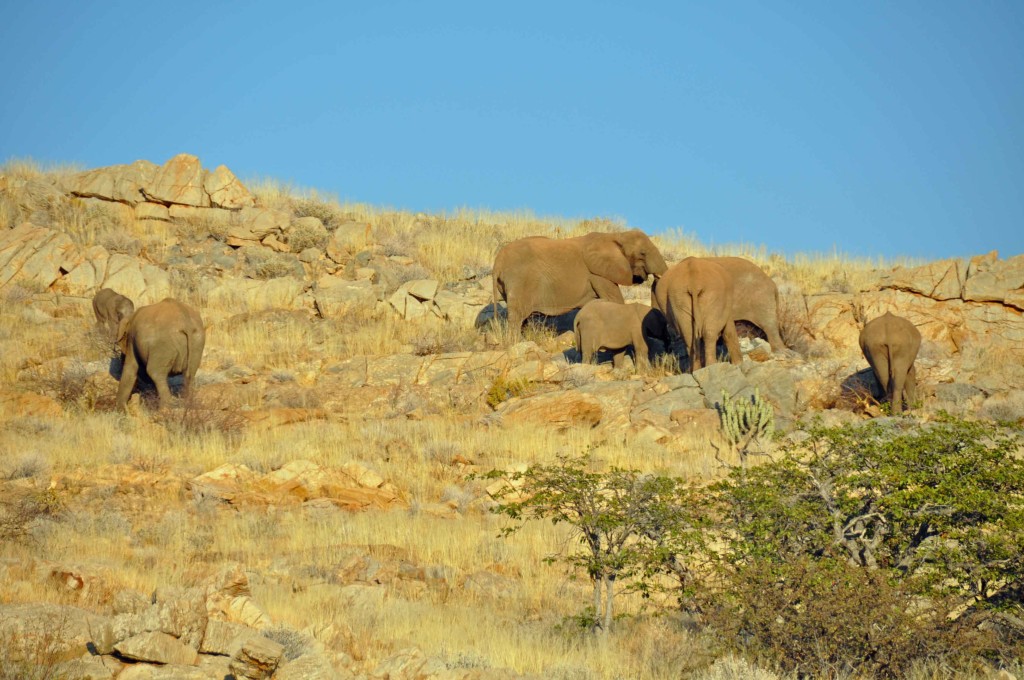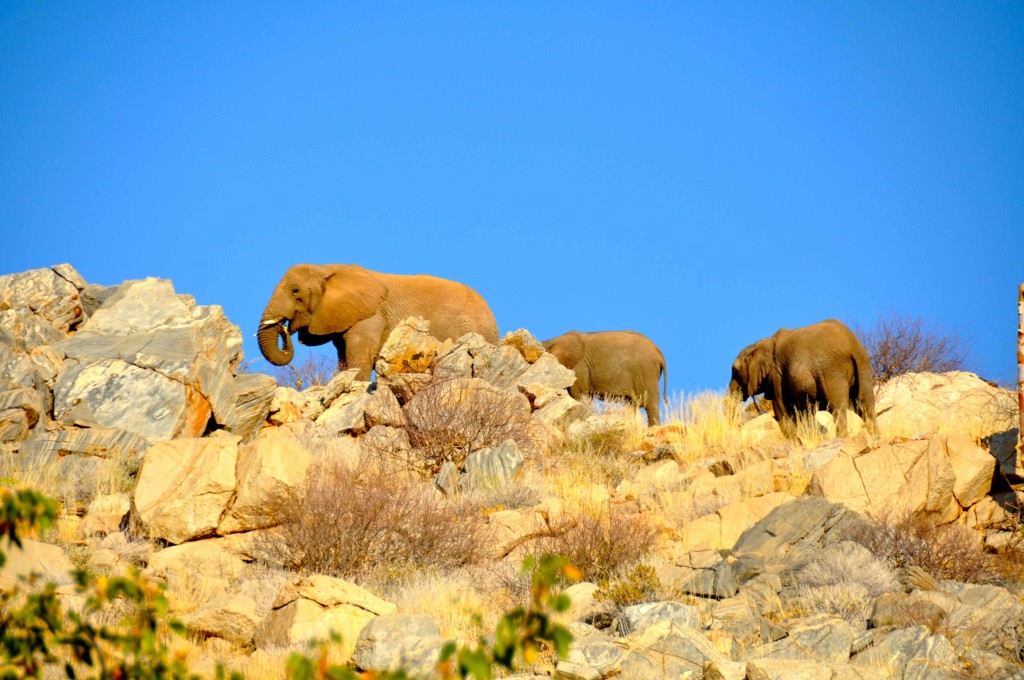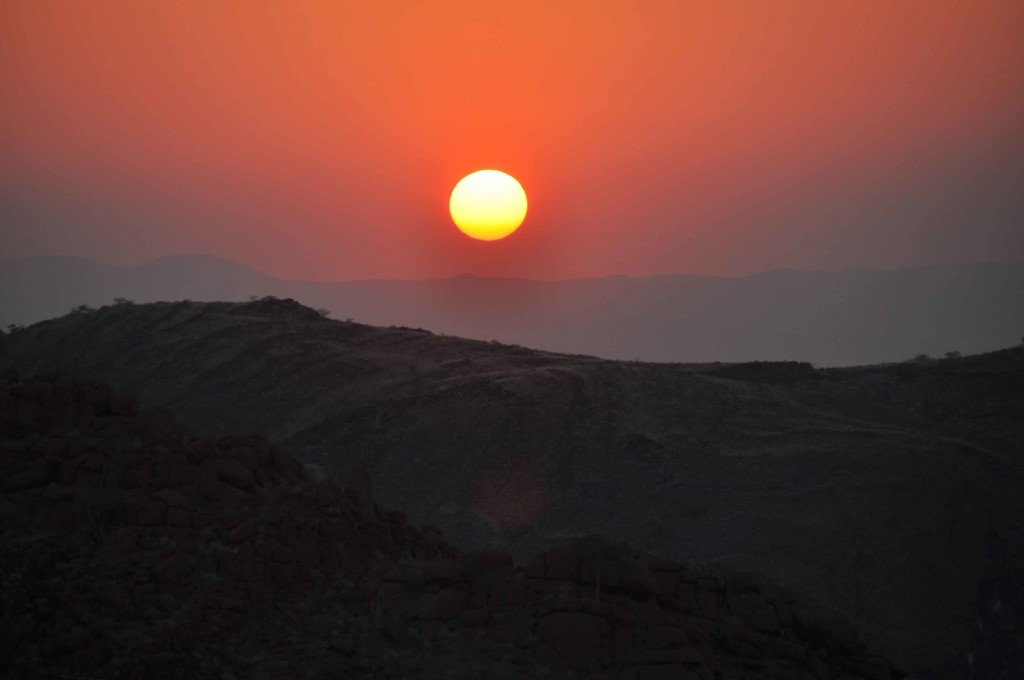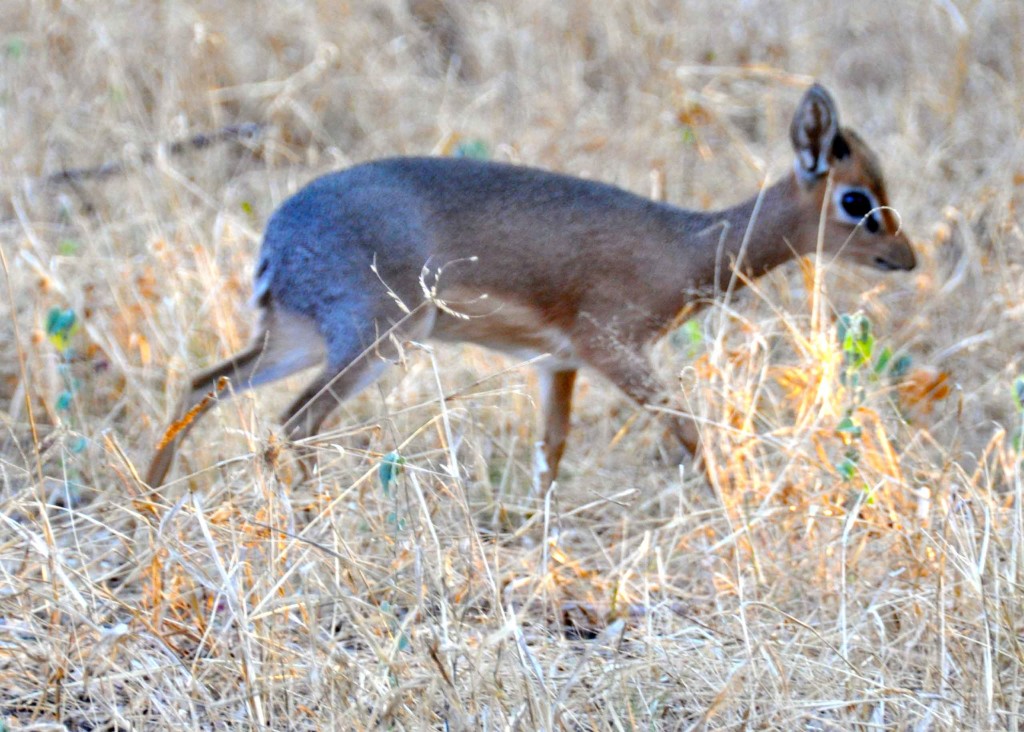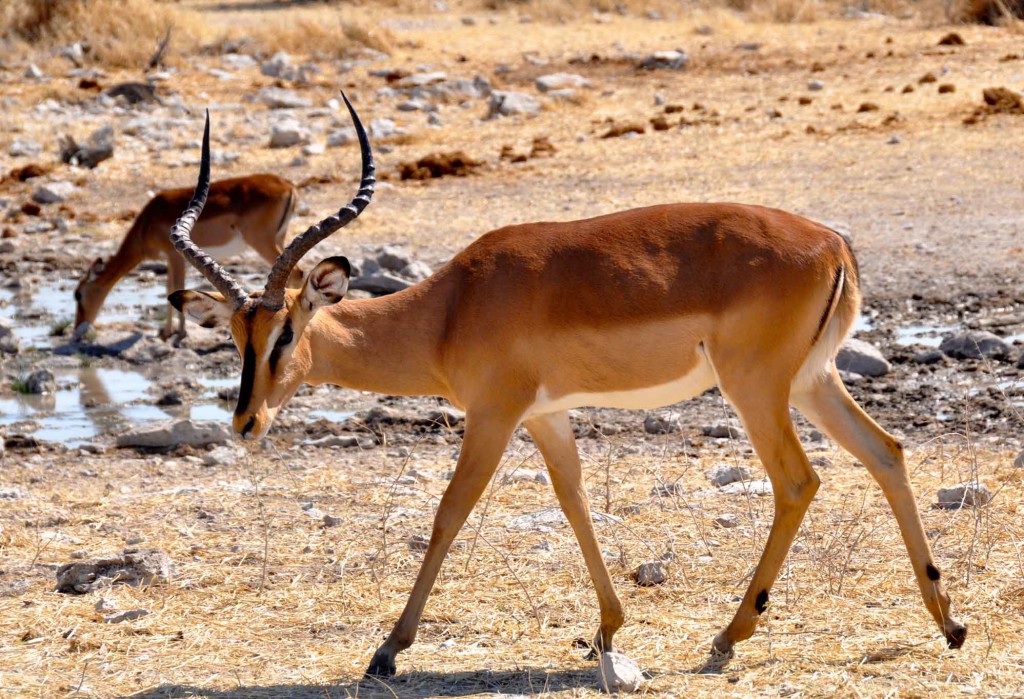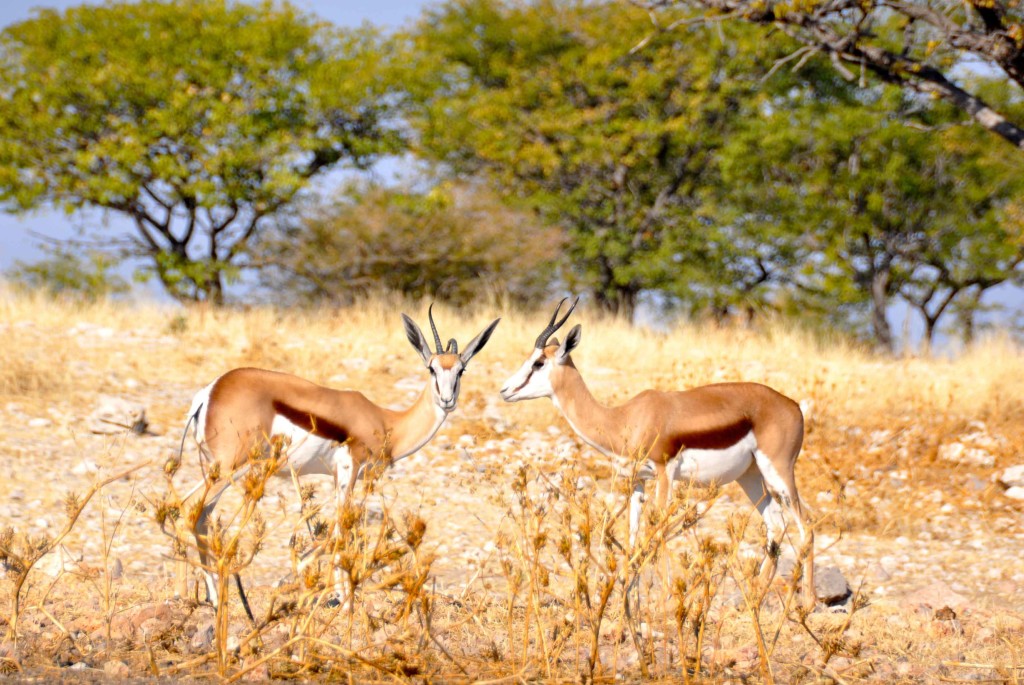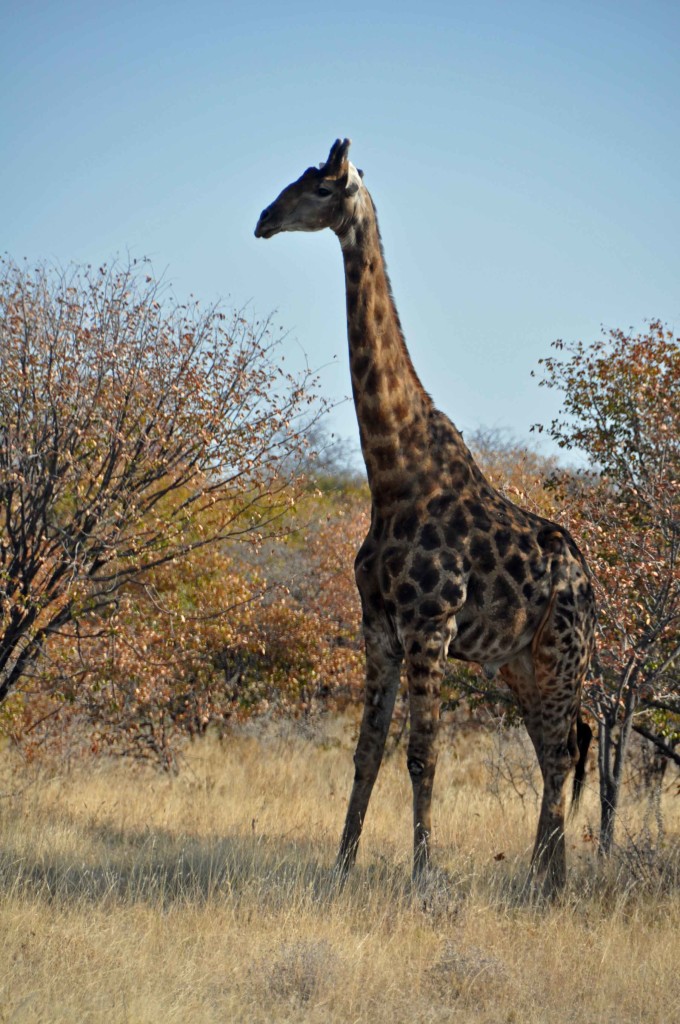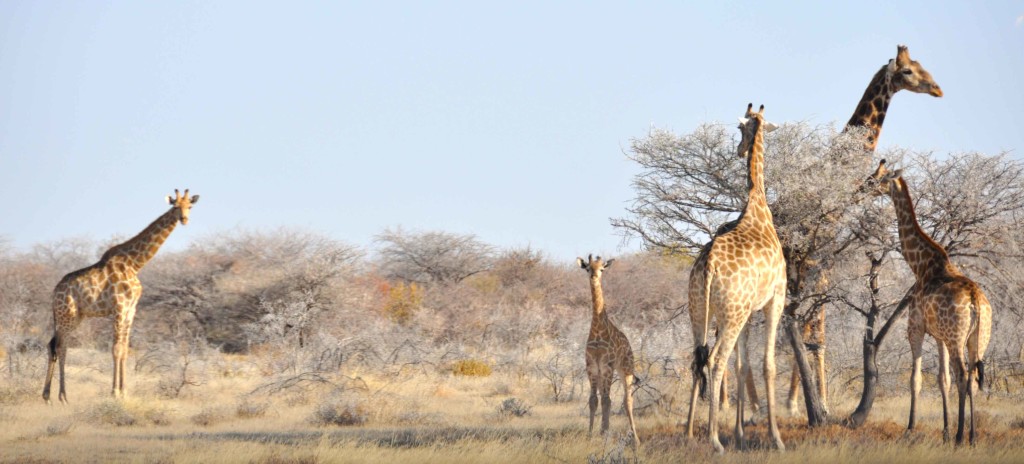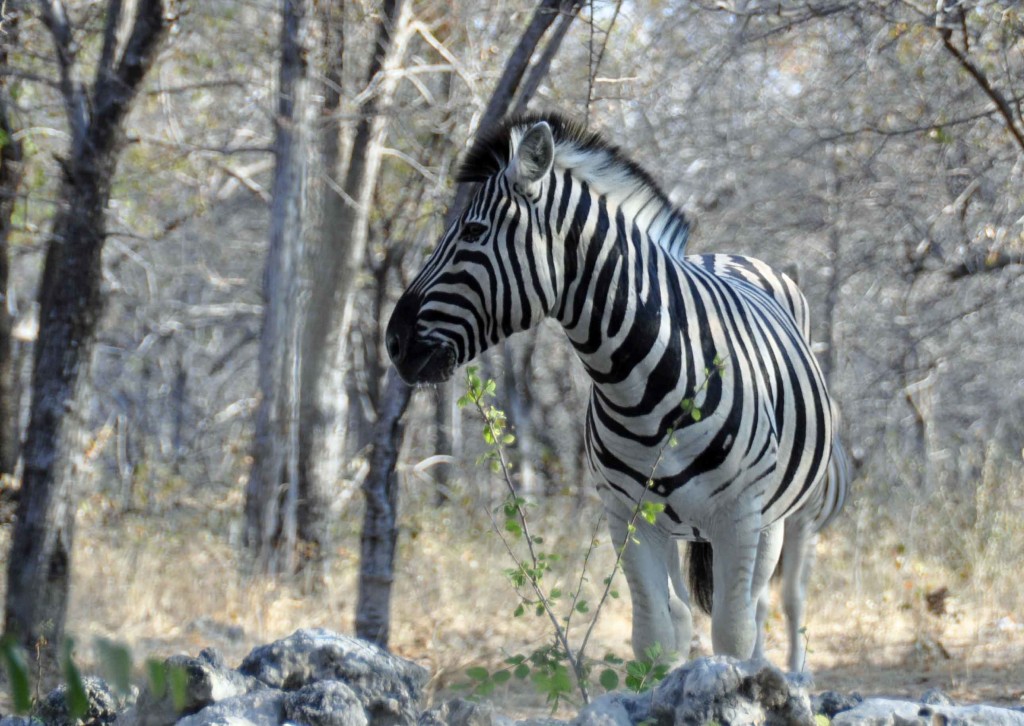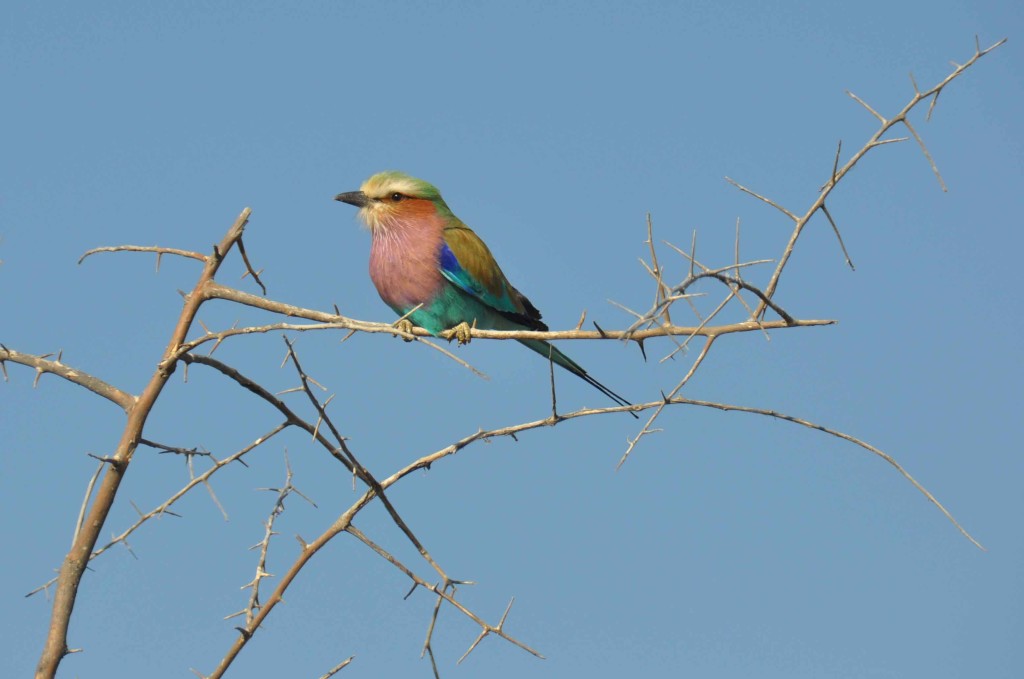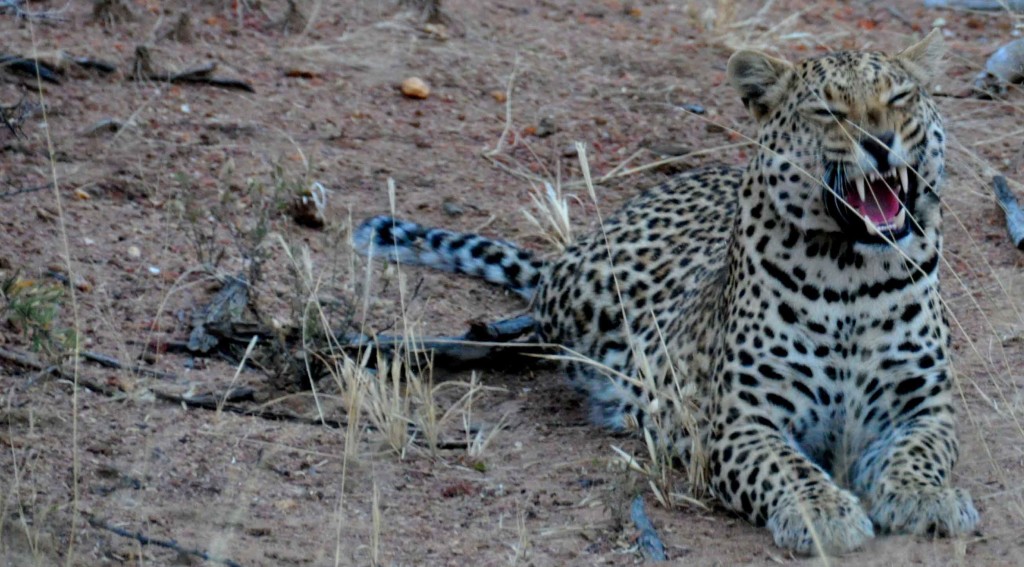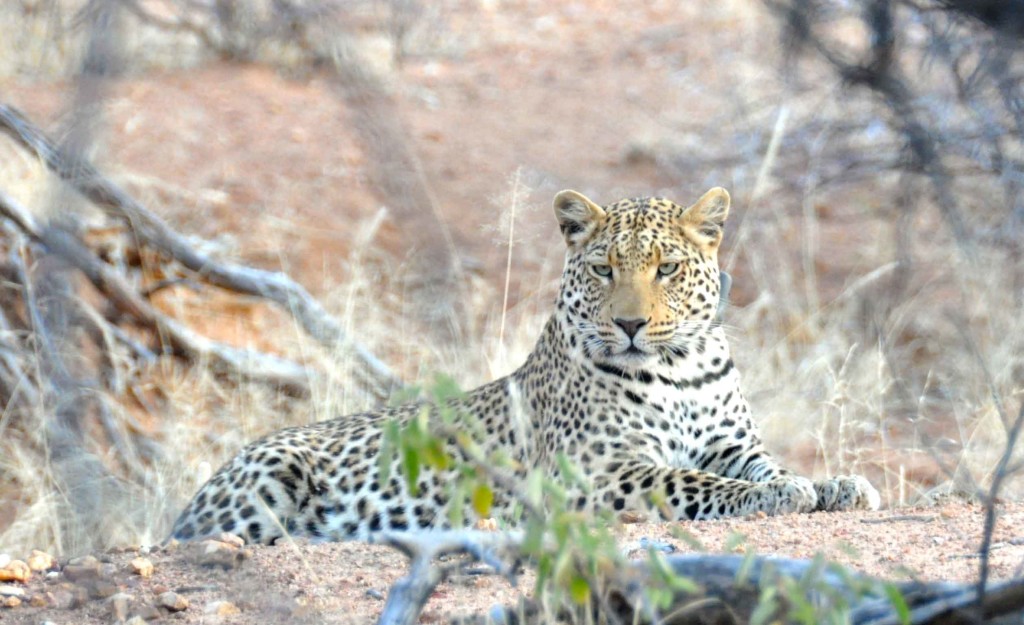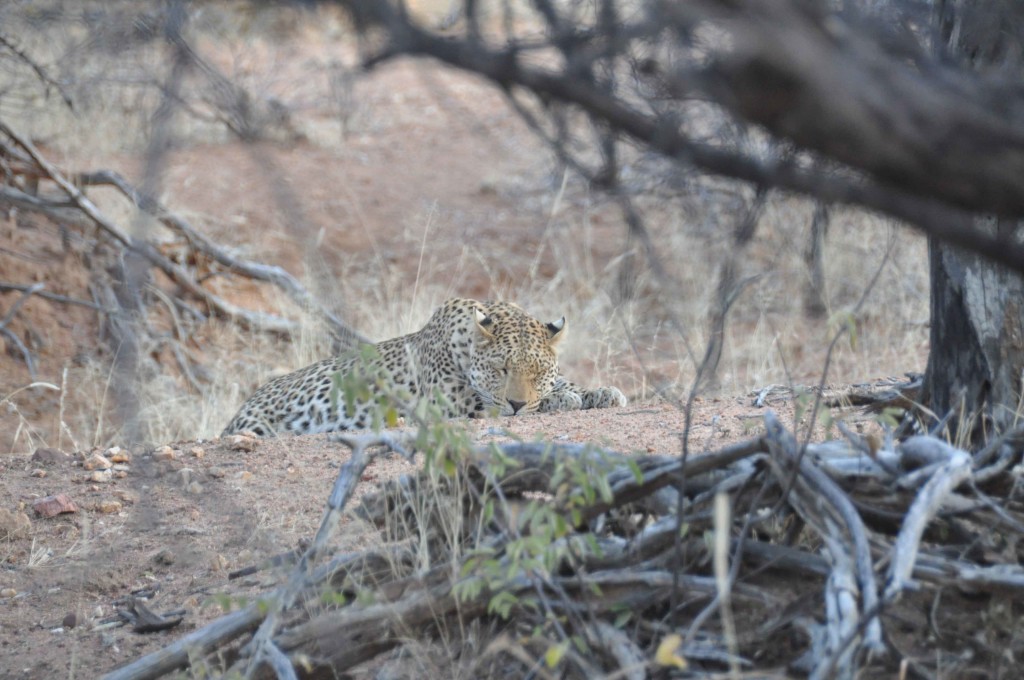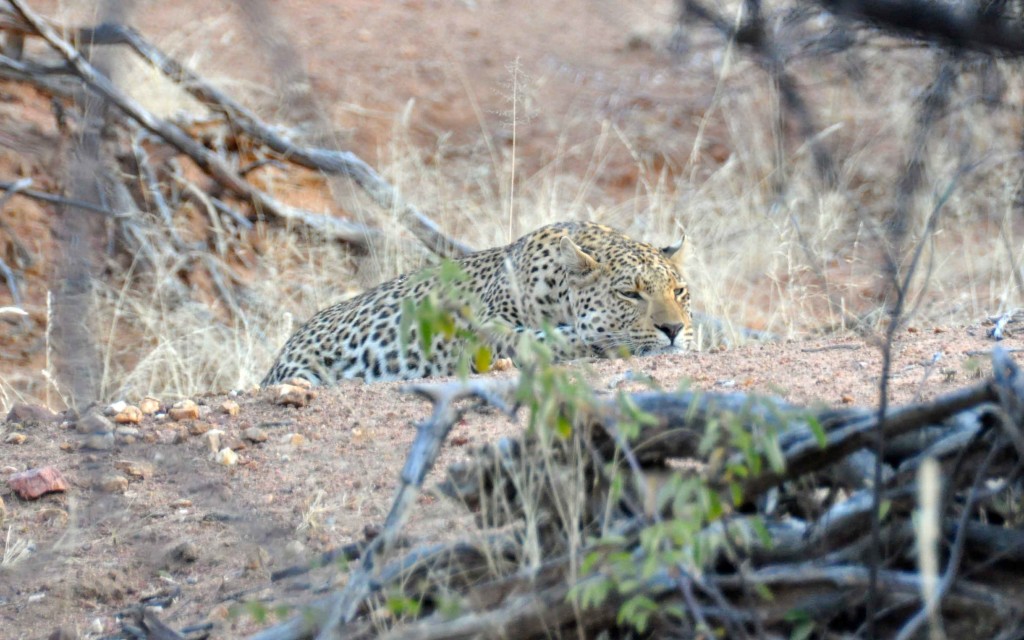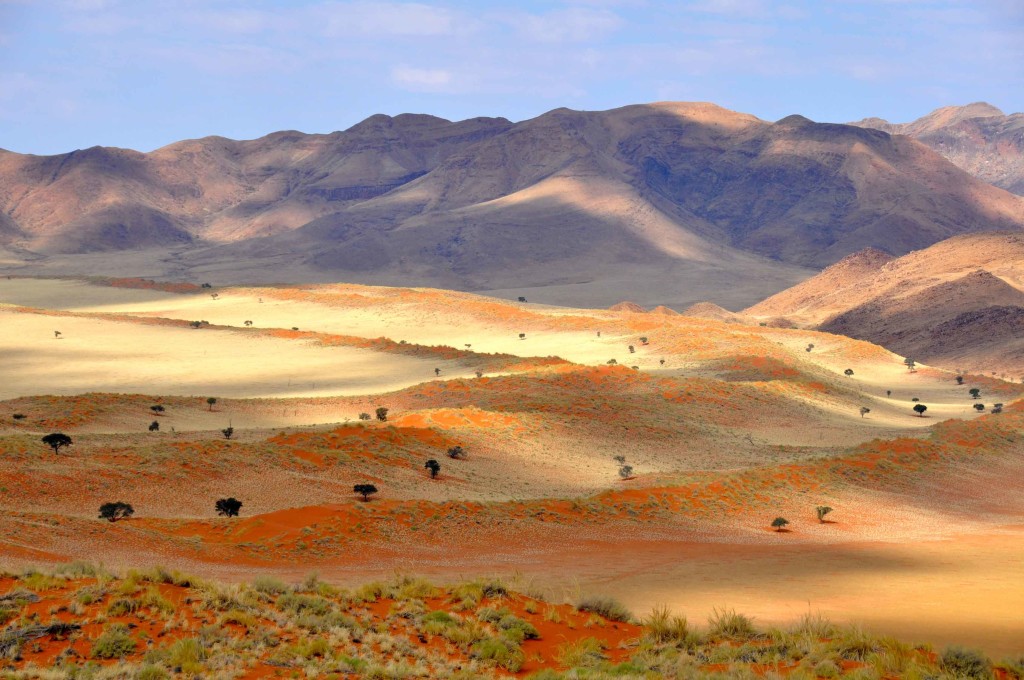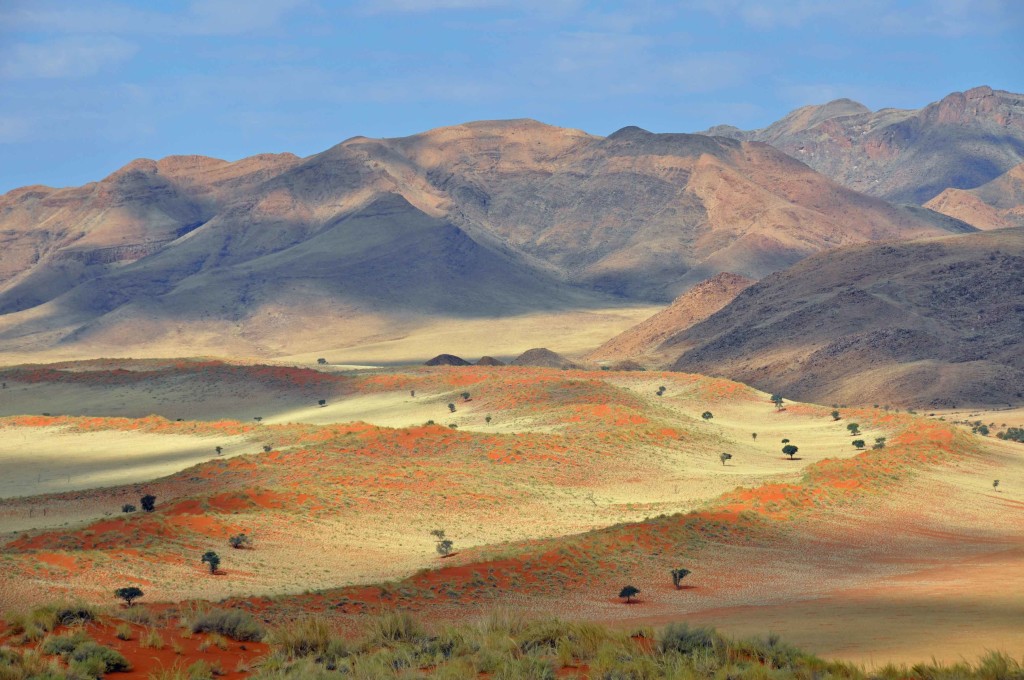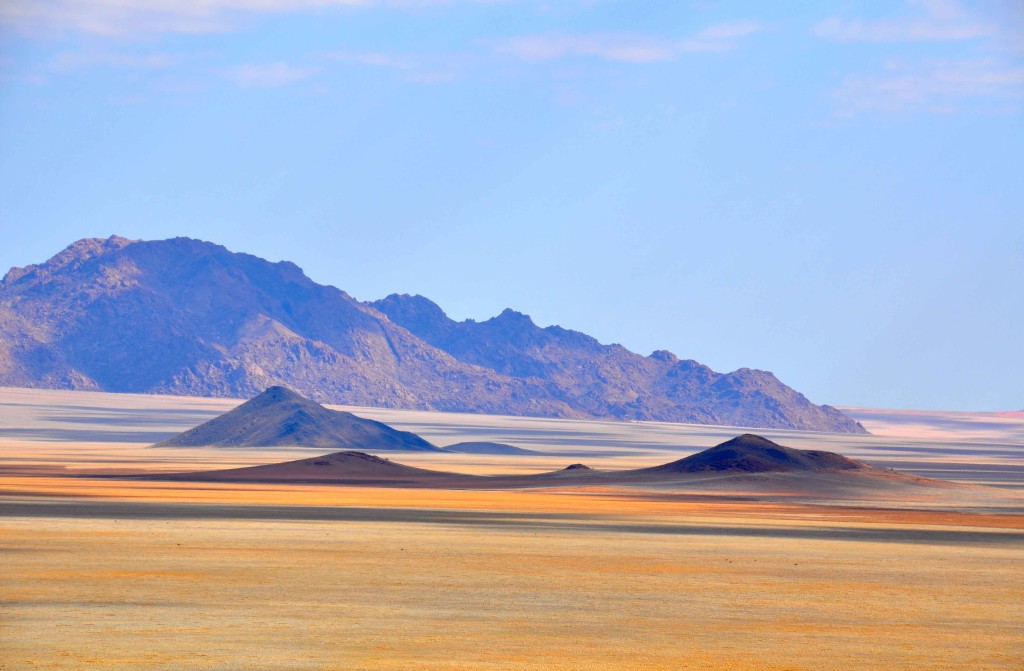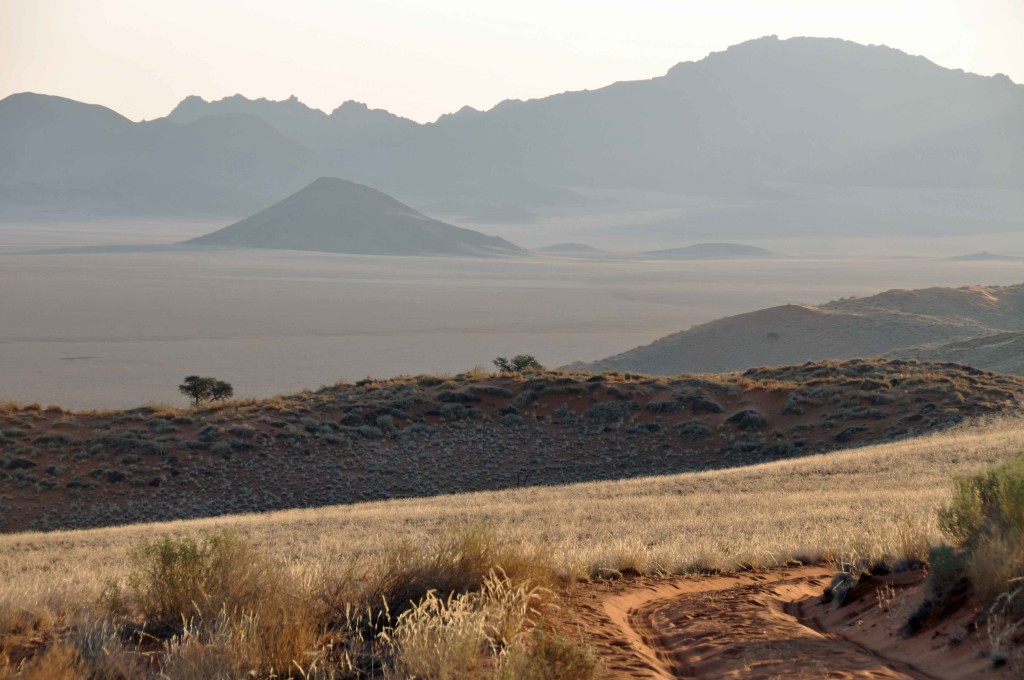Erongo: Our first stop outside of the Namibian capital Windhoek, was at a small lodge in the Erongo Reserve where we had our first introduction to the African sundowner.
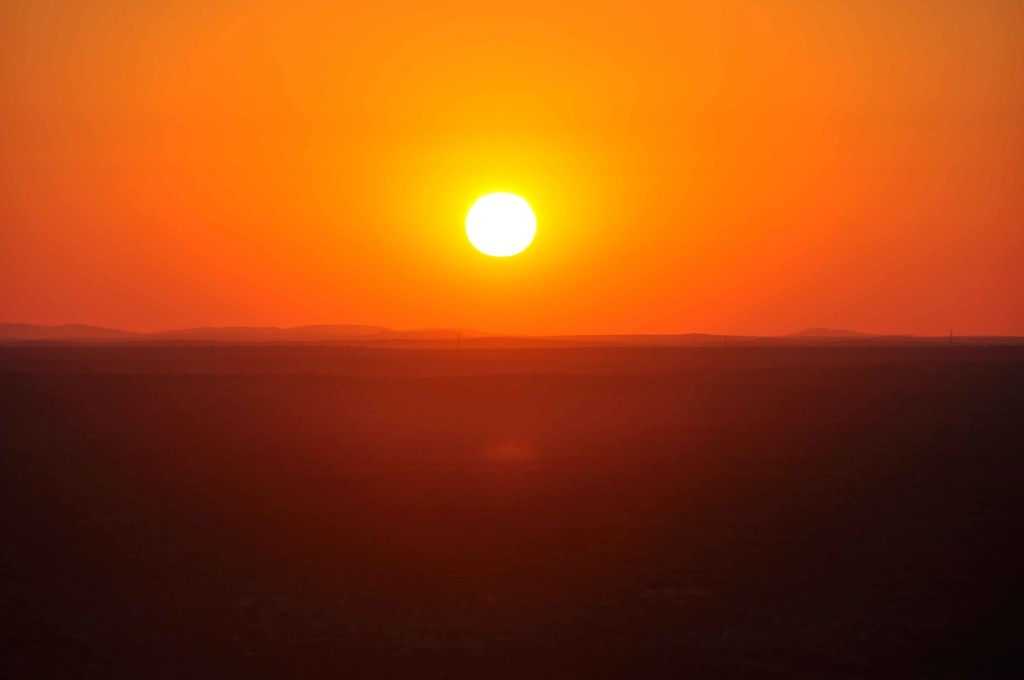
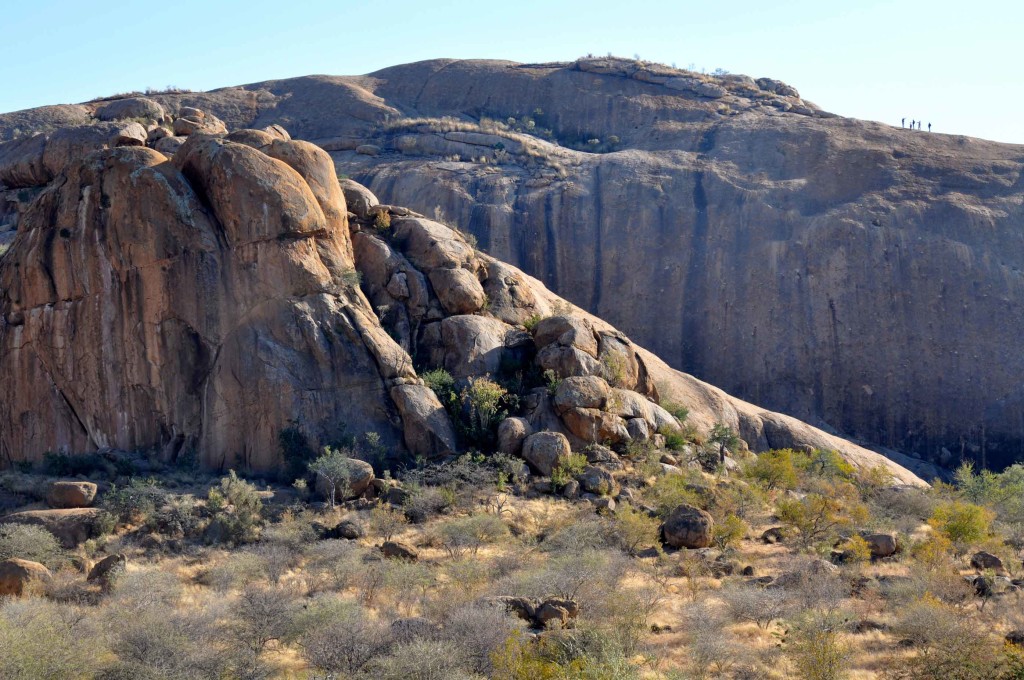
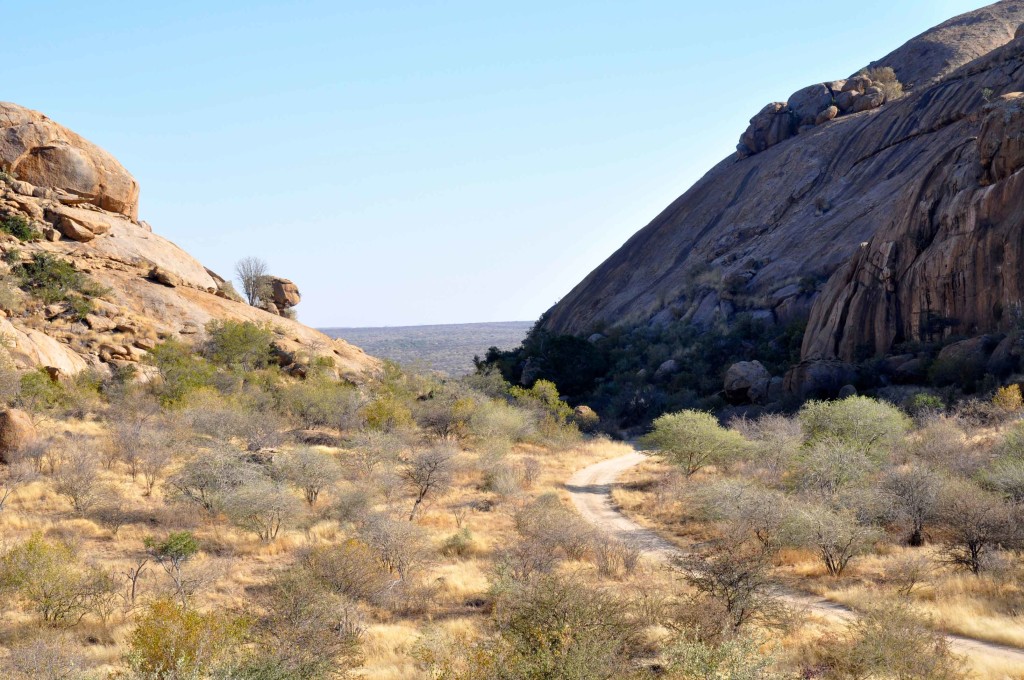
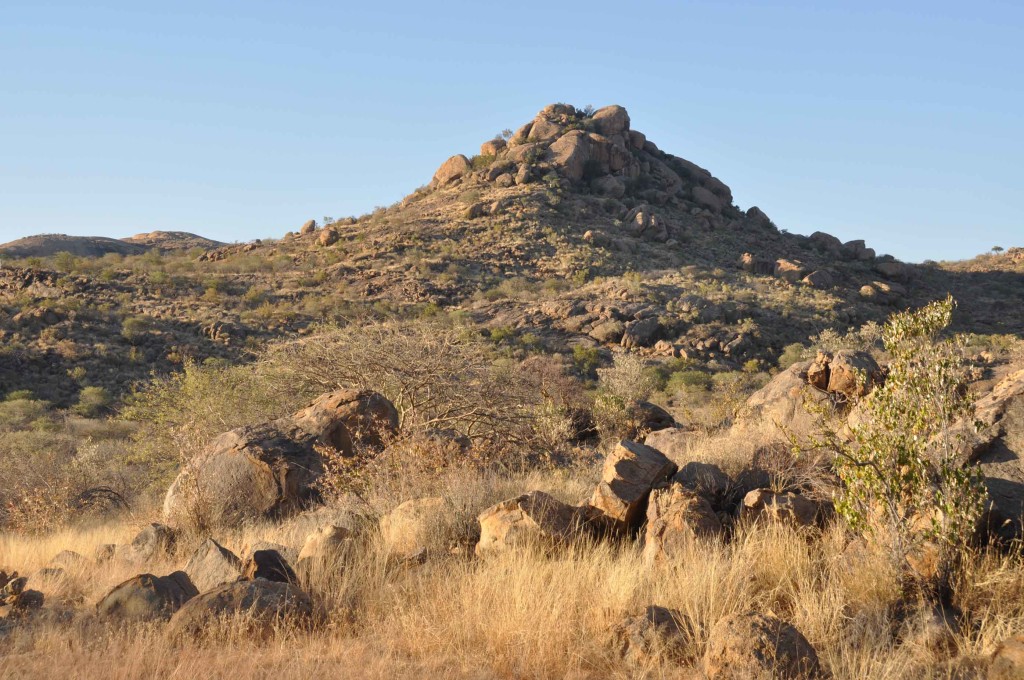
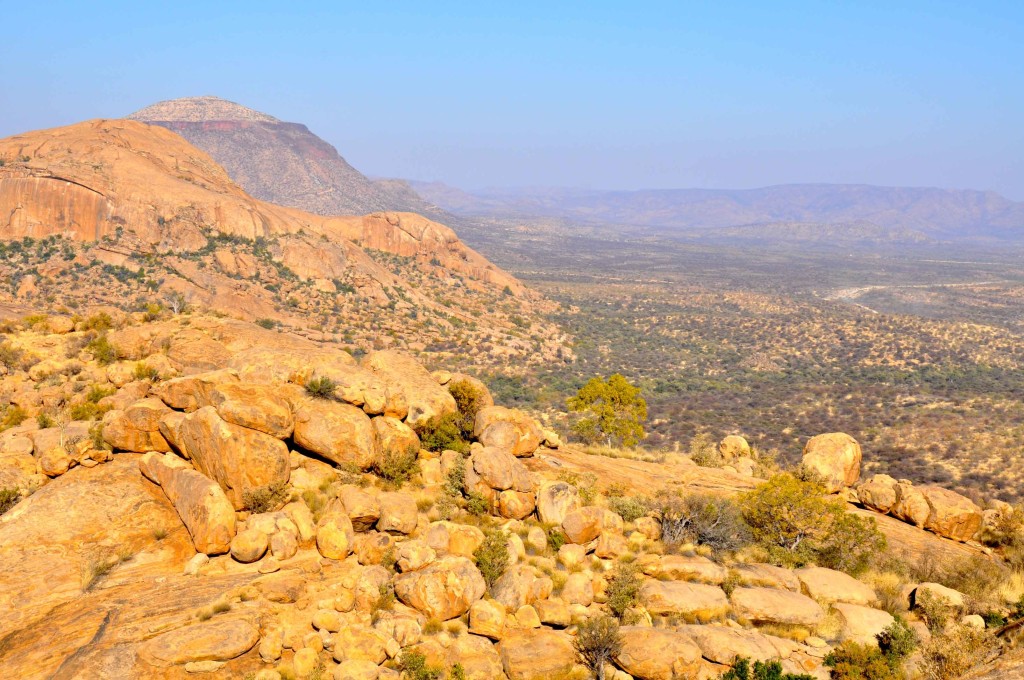
After about an hour and a half’s drive through thebeautiful lodge property we ended up at the foot of the hill where the site of Paula’s Cave can be found. An easy walk up the hill will take you to a National Monument site with some outstanding bushman rock art.
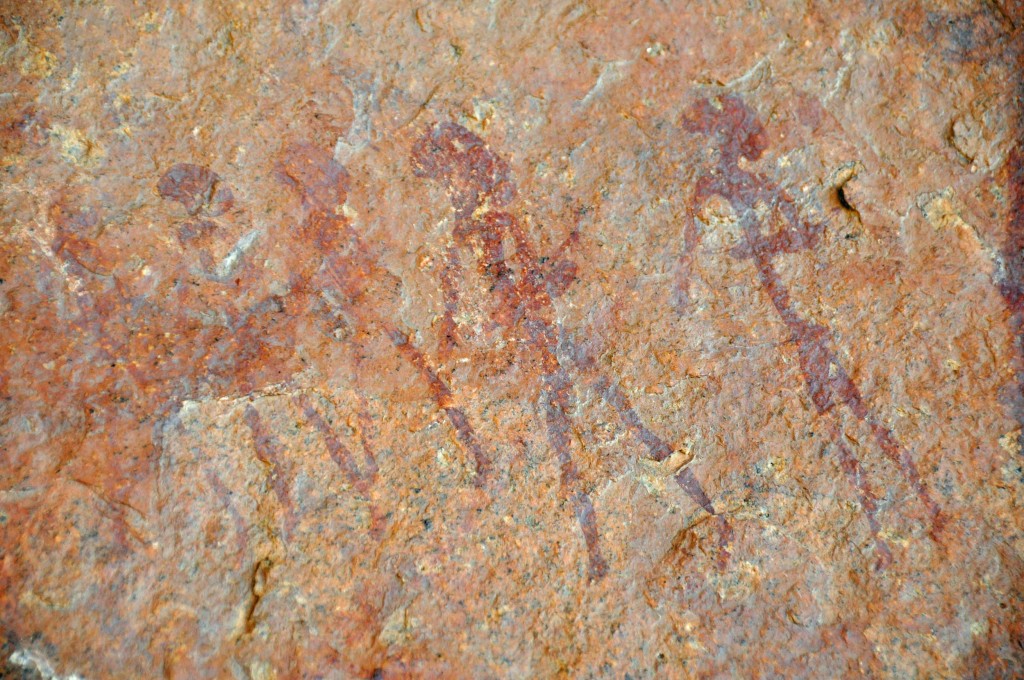
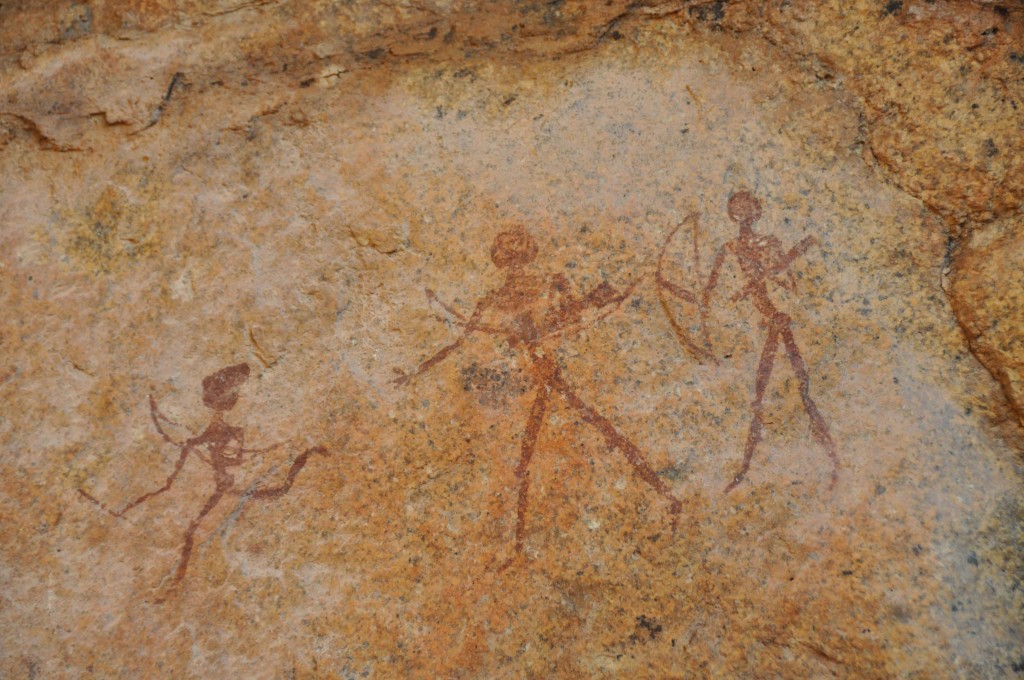
The drawings cover a long period, including some interesting animal portraits, a pregnant woman and both early (arrows) and late (spear) hunting scenes.

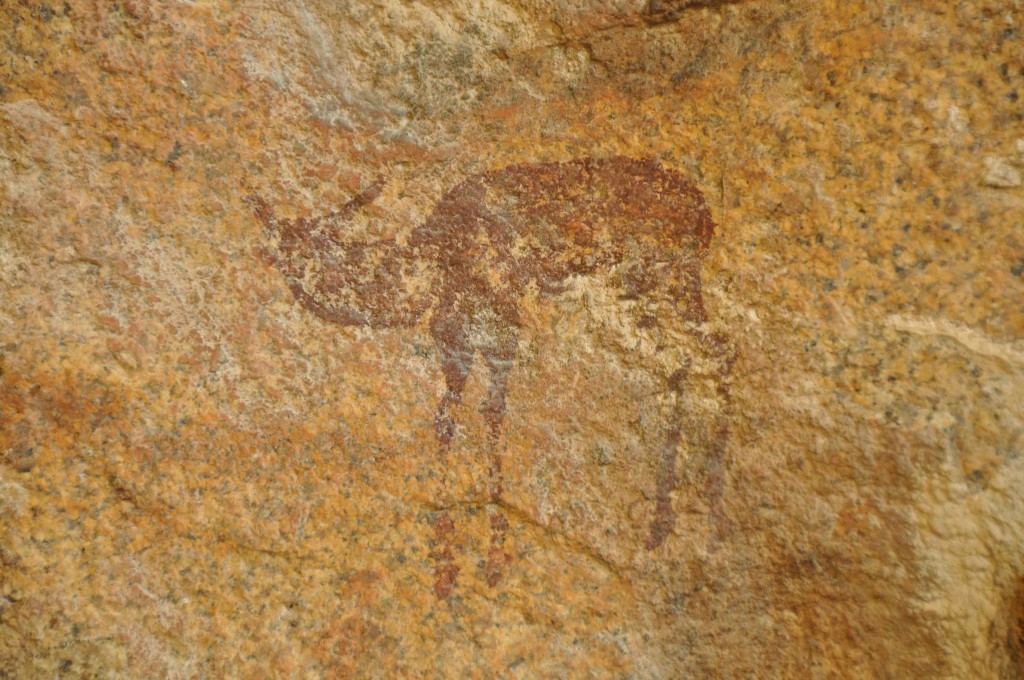
Erongo Cave

It was an astonishing easy and beautiful place to stay

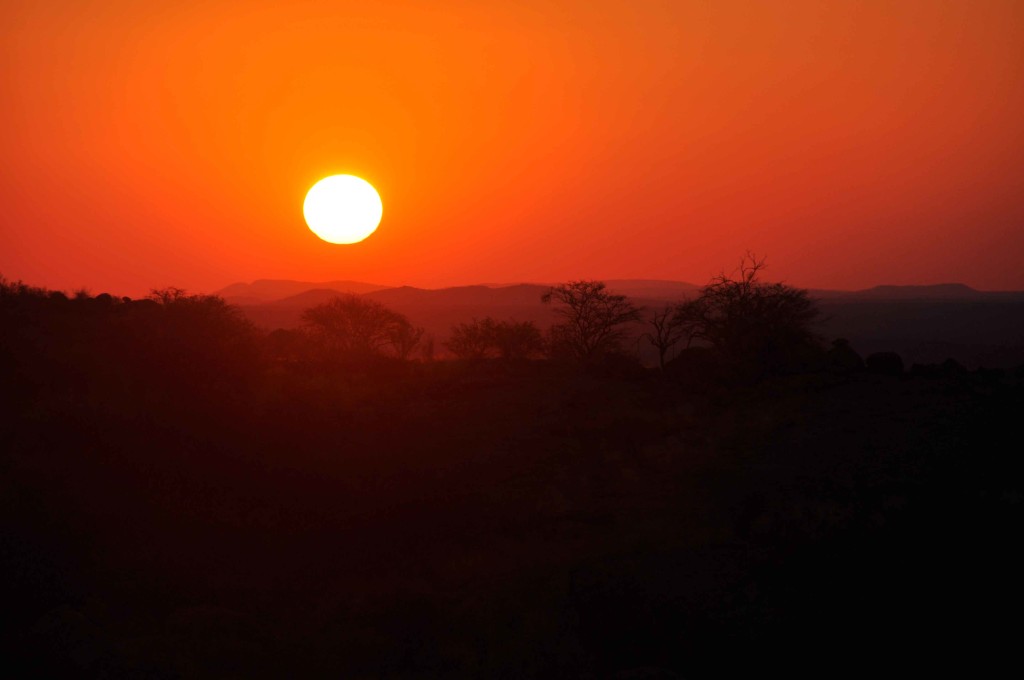
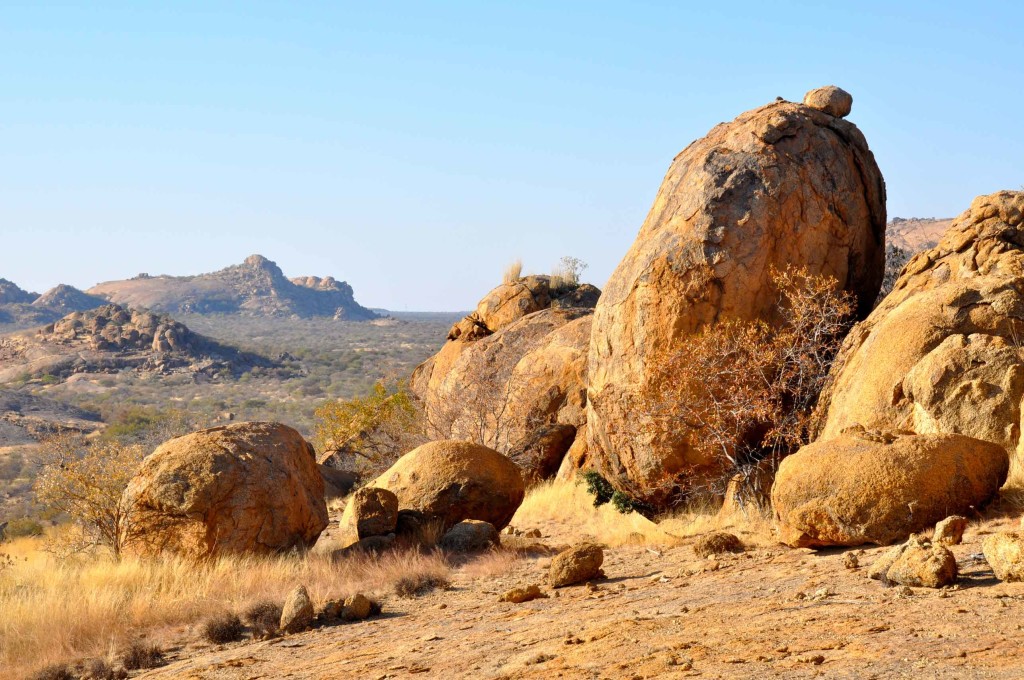
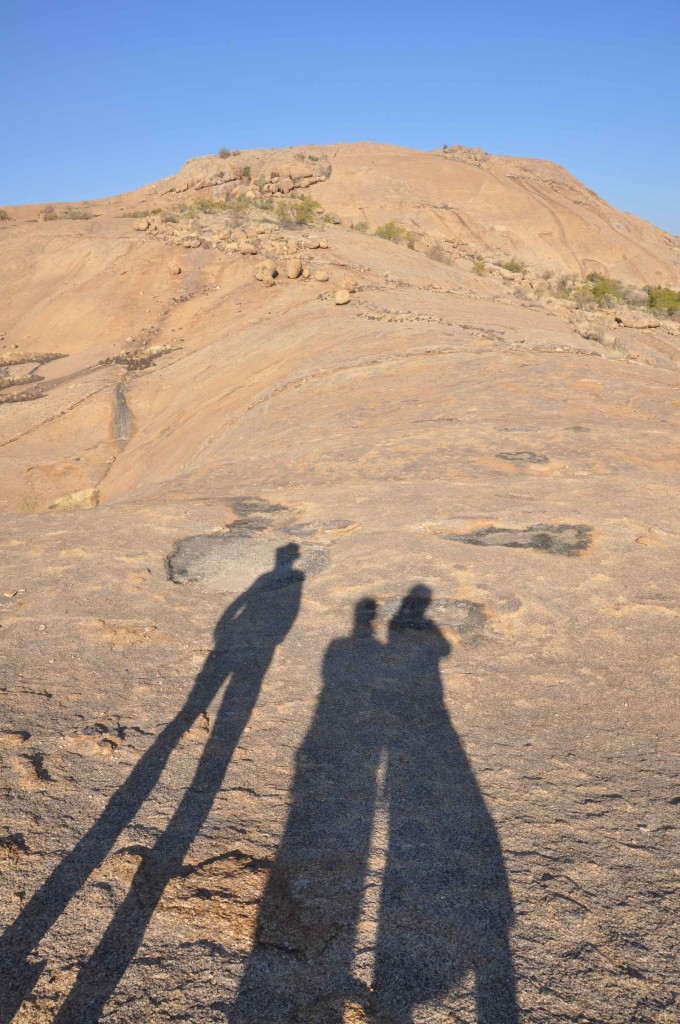
Most of Namibia is desert or, what to my European eyes, appears to be vast dry and unproductive land spreading as far as the eye can see. And yet in the middle of these vast expanses, huge animals, elephants, giraffe etc somehow manage to appear and disappear like magic.
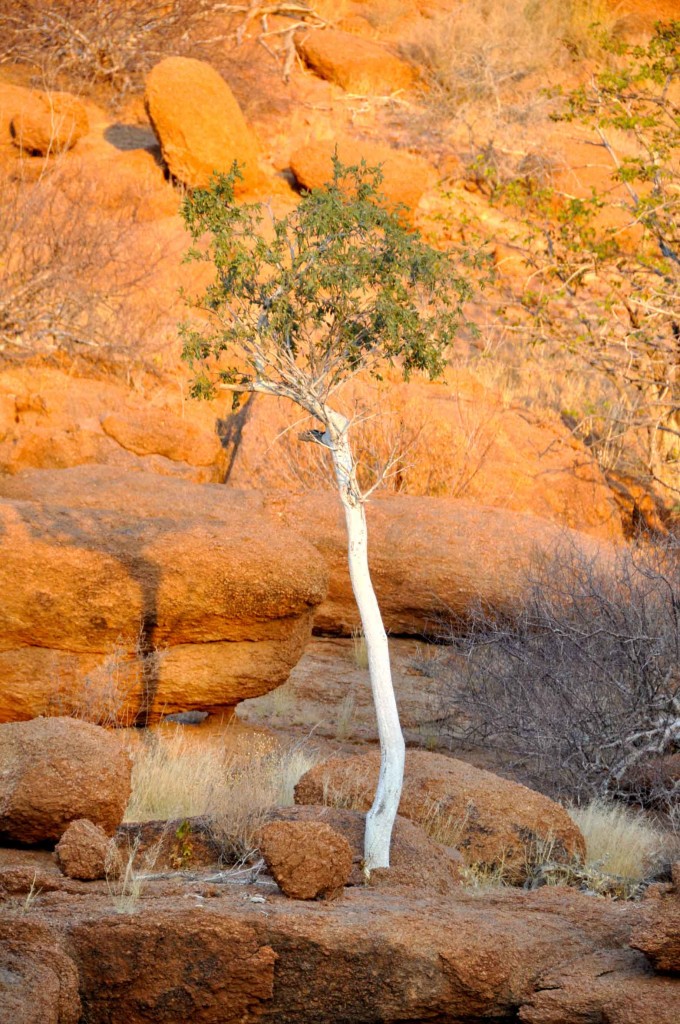
We moved from Erongo to Damaraland, near the Twyfelfontein UNESCO site and as well as seeing the rock art, we went looking for desert elephants.
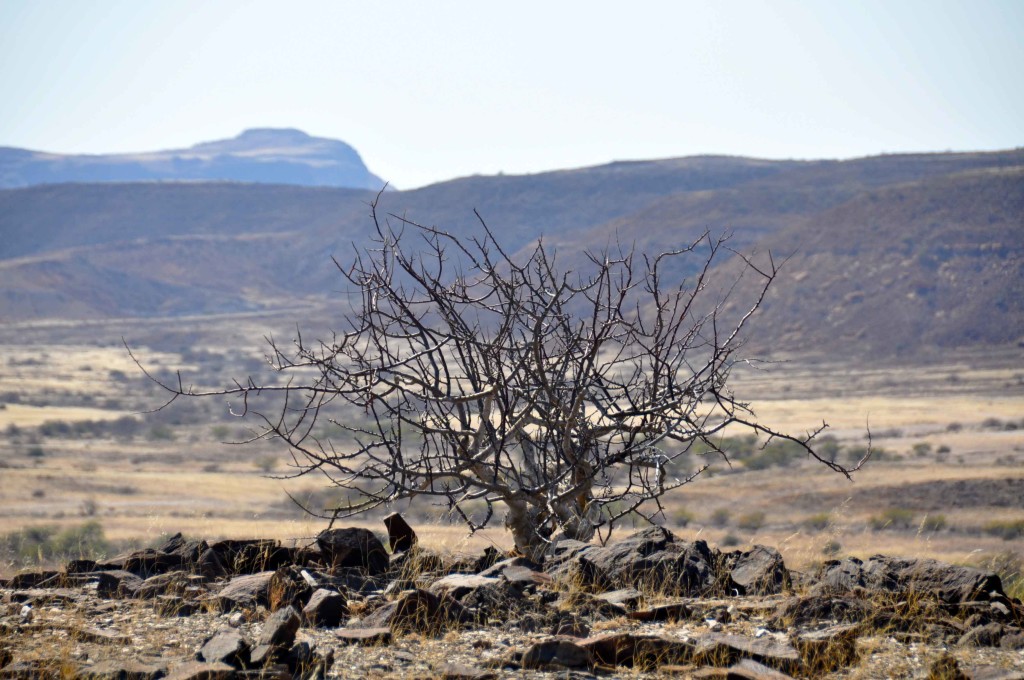
It is the most amazing country, unbelievable colours and vistas open up before your eyes, trailing along the dry river beds.
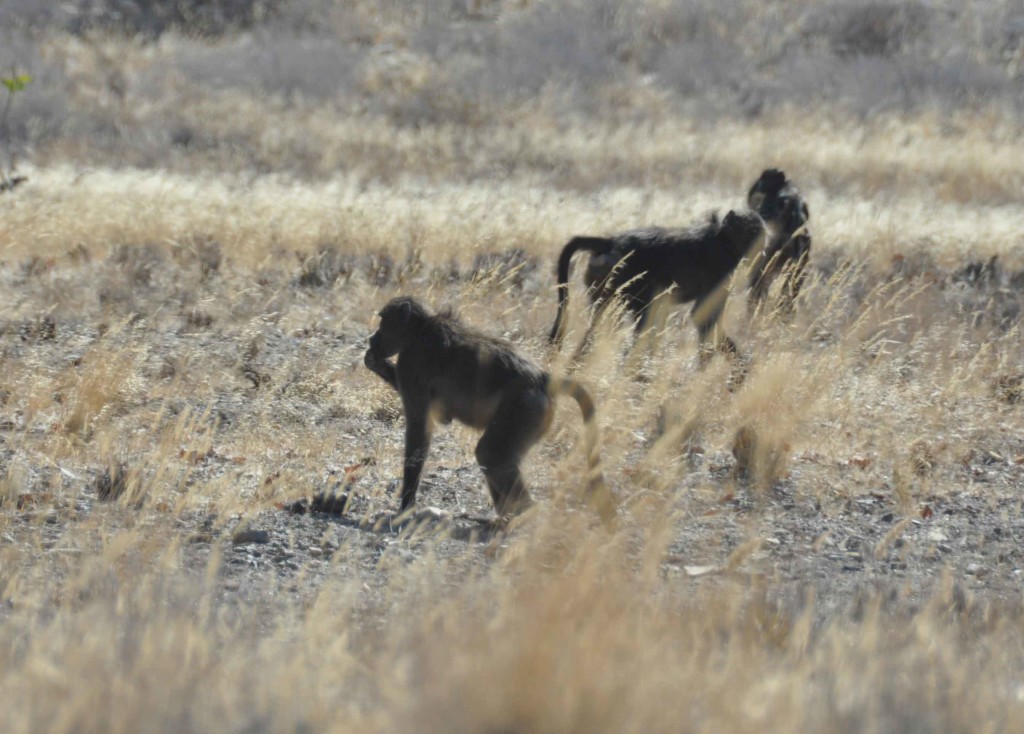
Most of the money seems to come from diamonds, but there are sizable other mineral deposits that turn the land the most amazing shades.
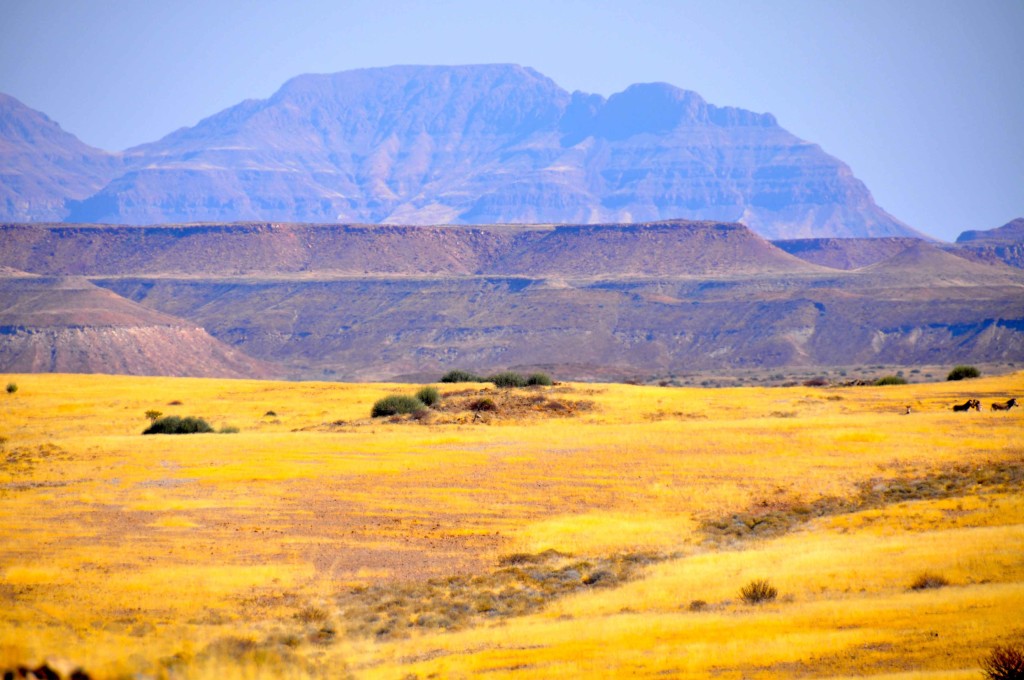
Then suddenly someone spots an elephant apparently climbing rocks in the distance. We’ve found a family group with an old matriarch well-known to the lodge guides, complete with baby elephants.
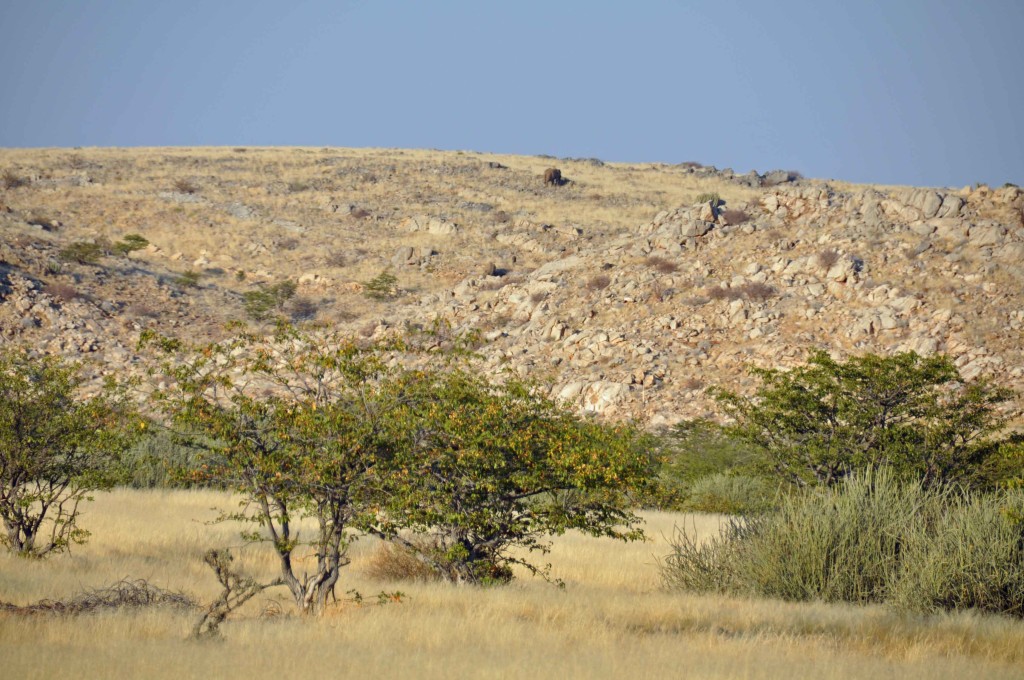
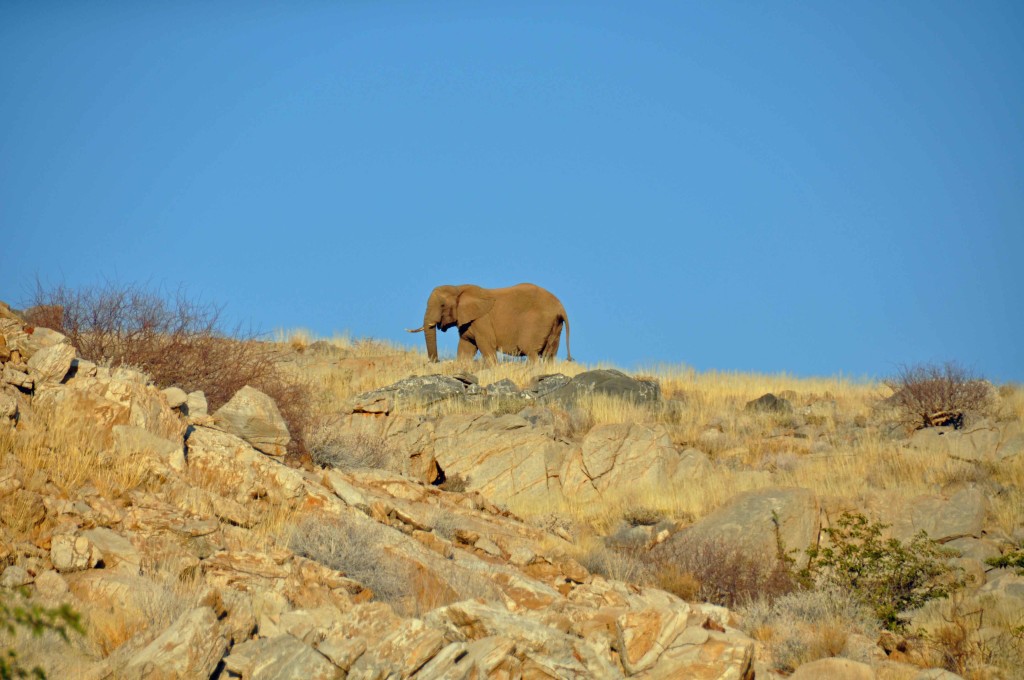
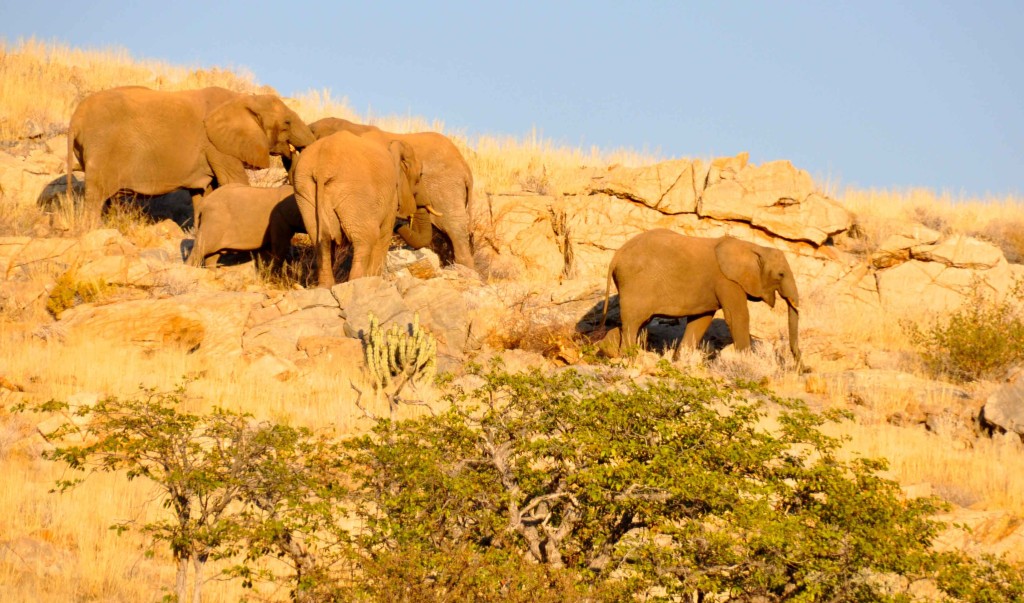
Then driving along we spot a giraffe trailing an old river bed.
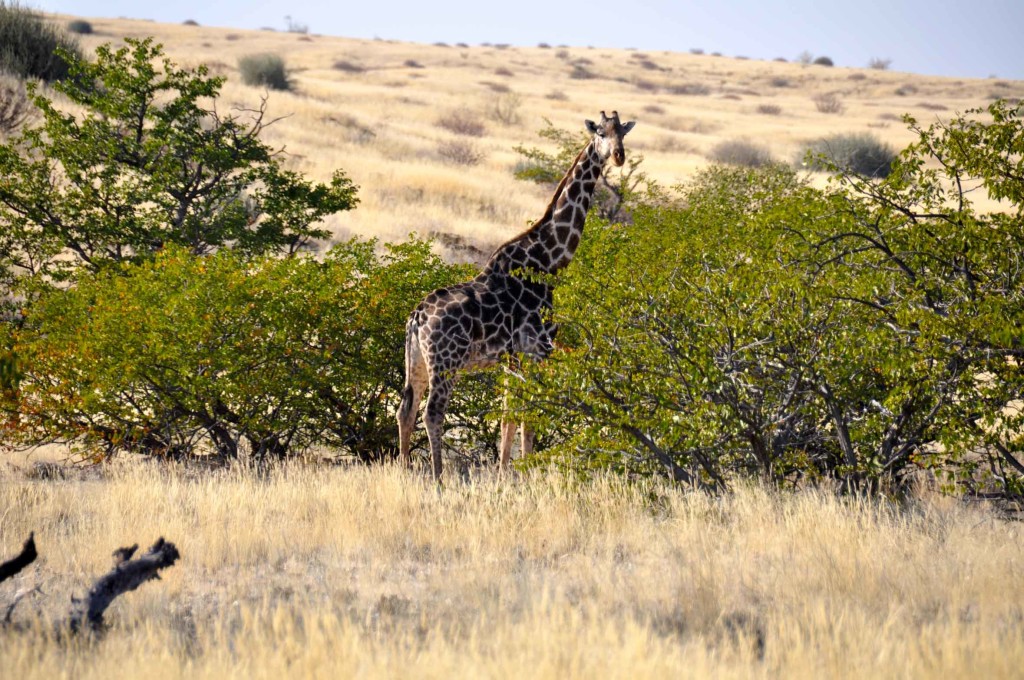
We take a break and go to view the geological features, volcanic pipes created thousands of years ago and on the way back drive over what feels like the back of the landscape.
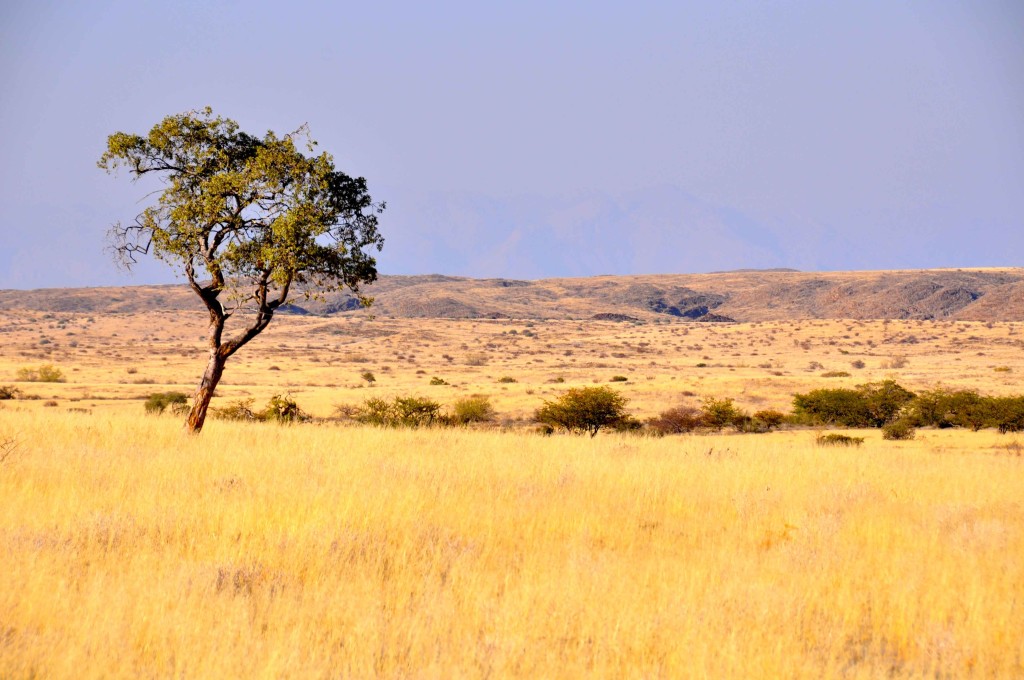
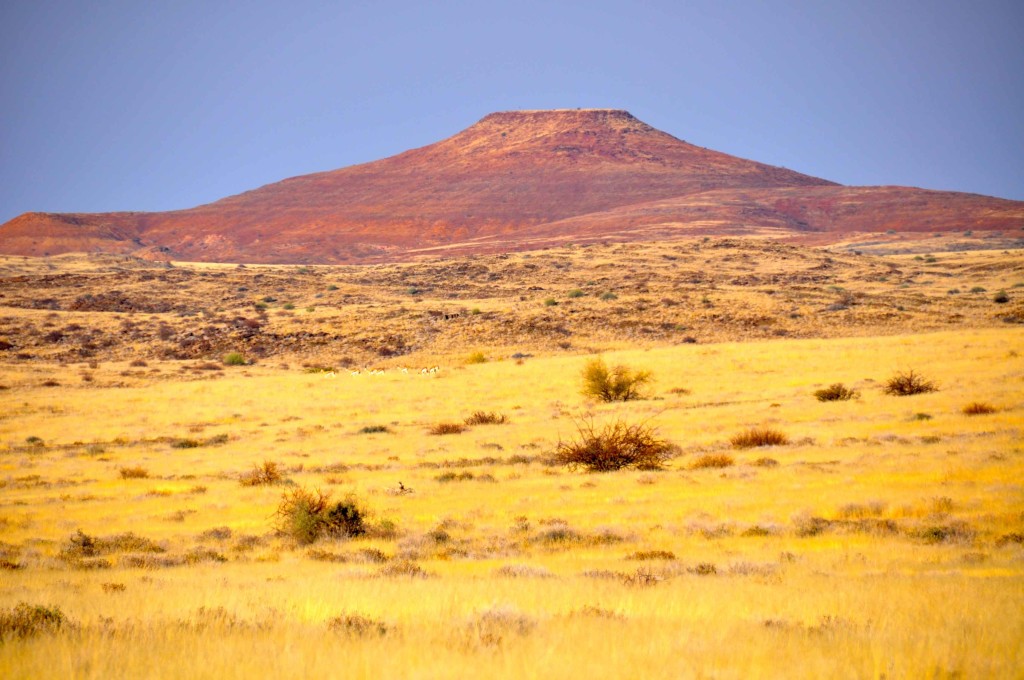
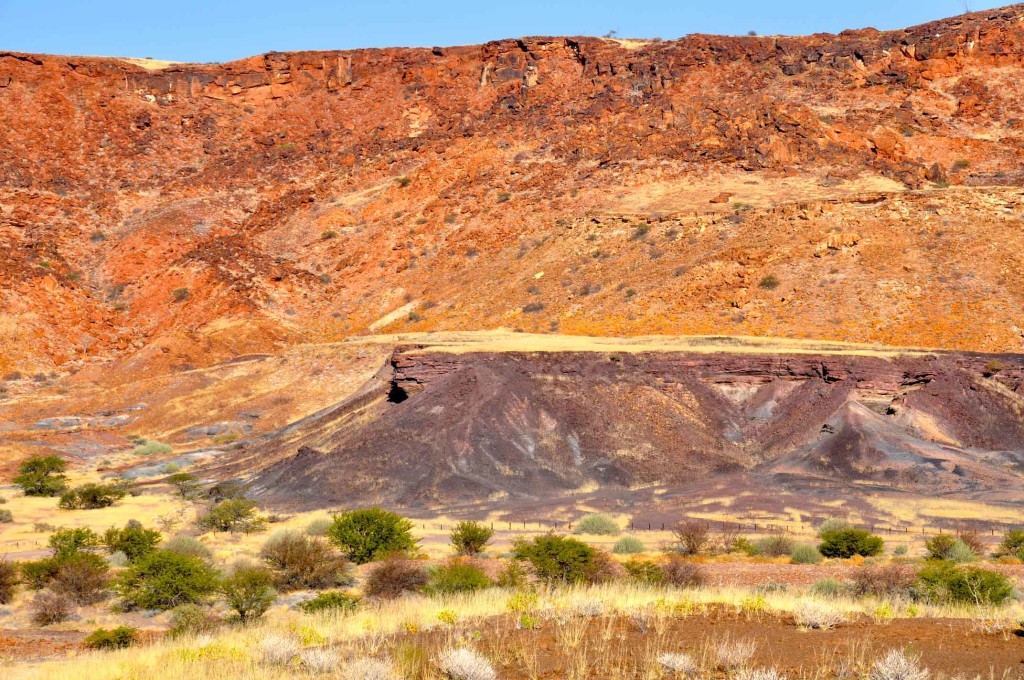
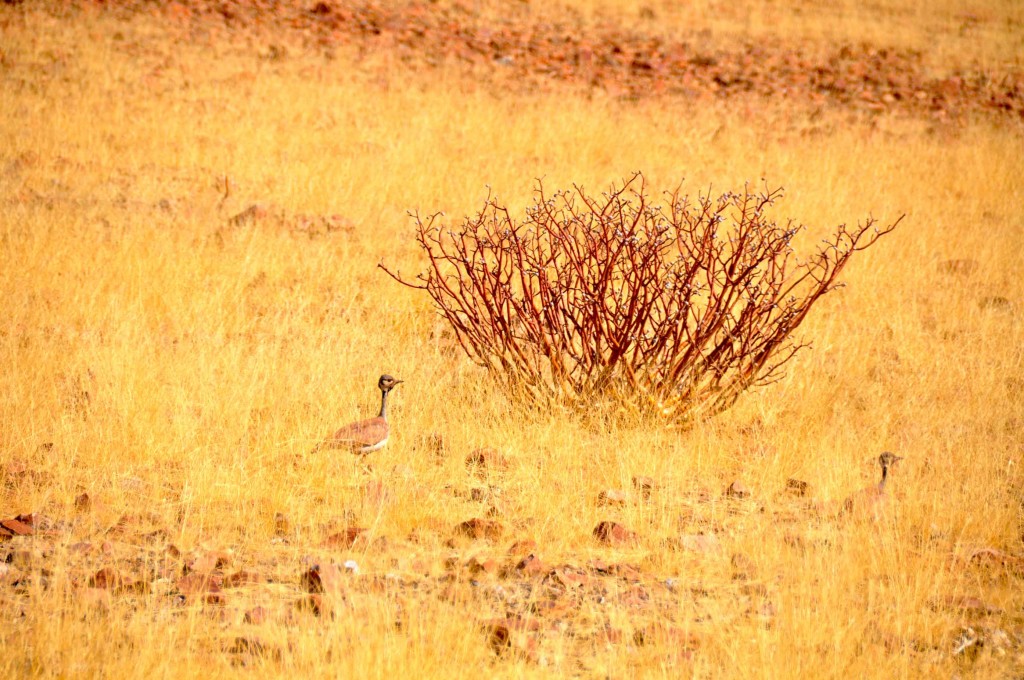
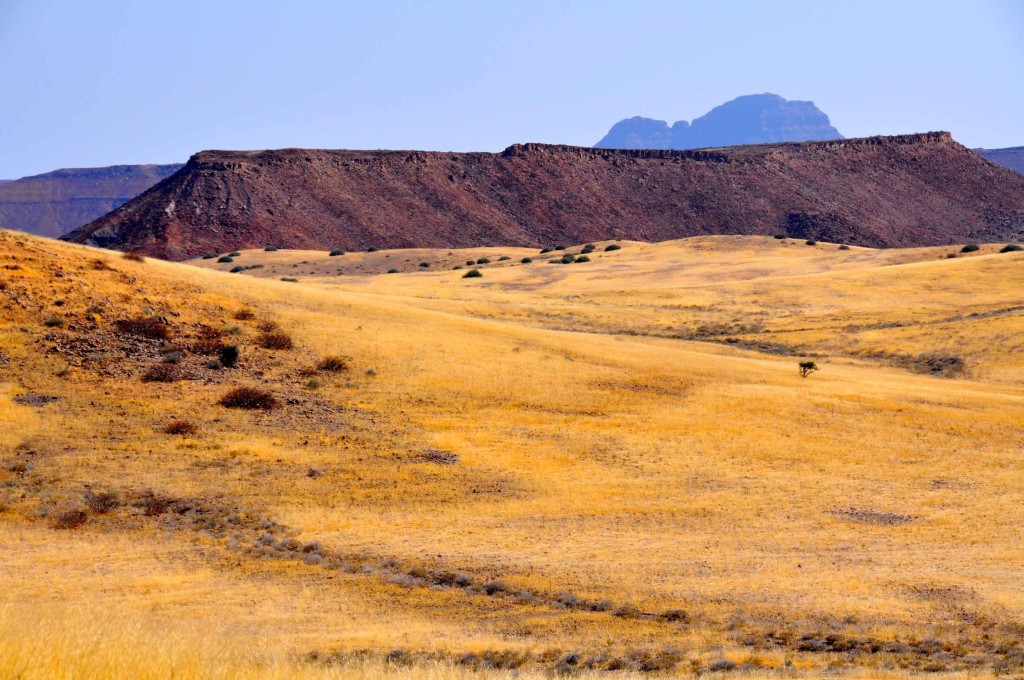

In the middle of nowhere we come across a huge herd of zebra.
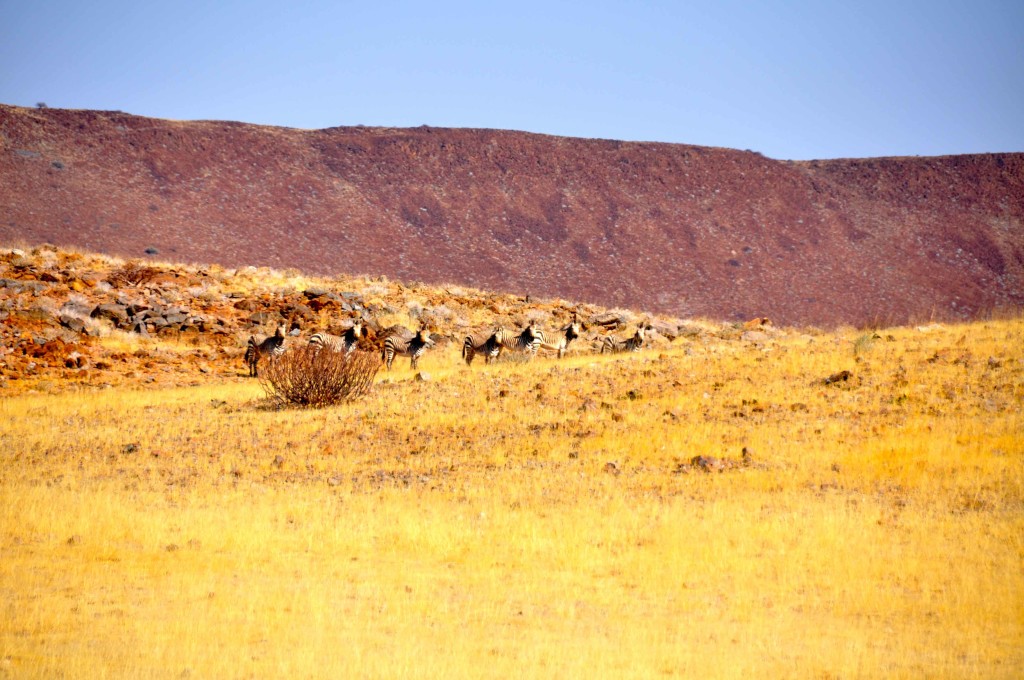
Sundowners at the lodge leave you struggling to reconcile a barren moonscape with the memory of all of those huge mammals making their way here.
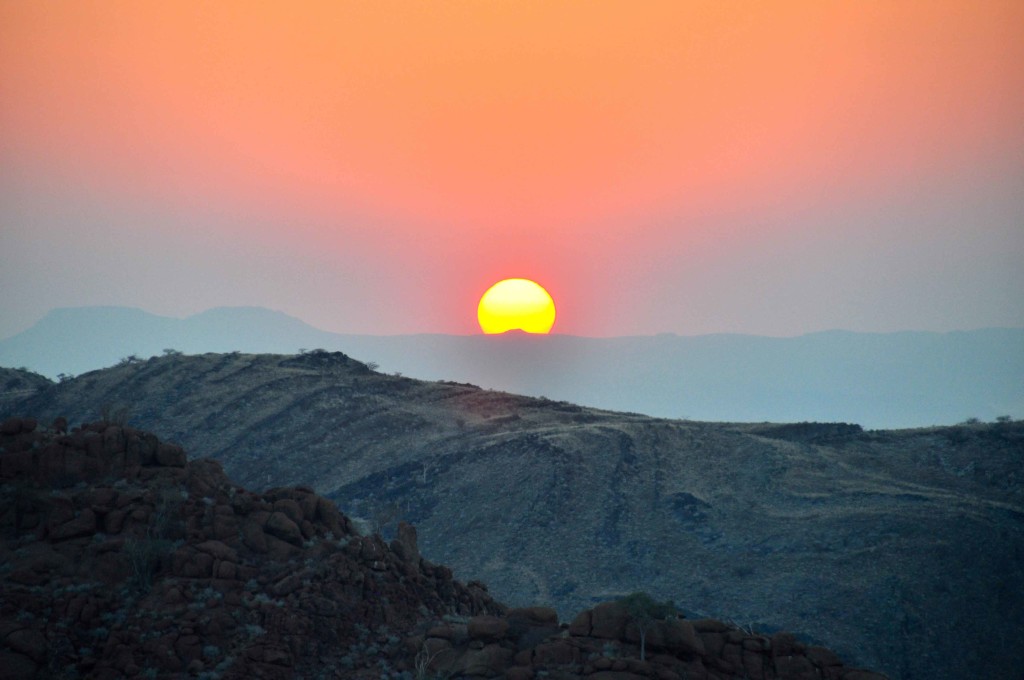
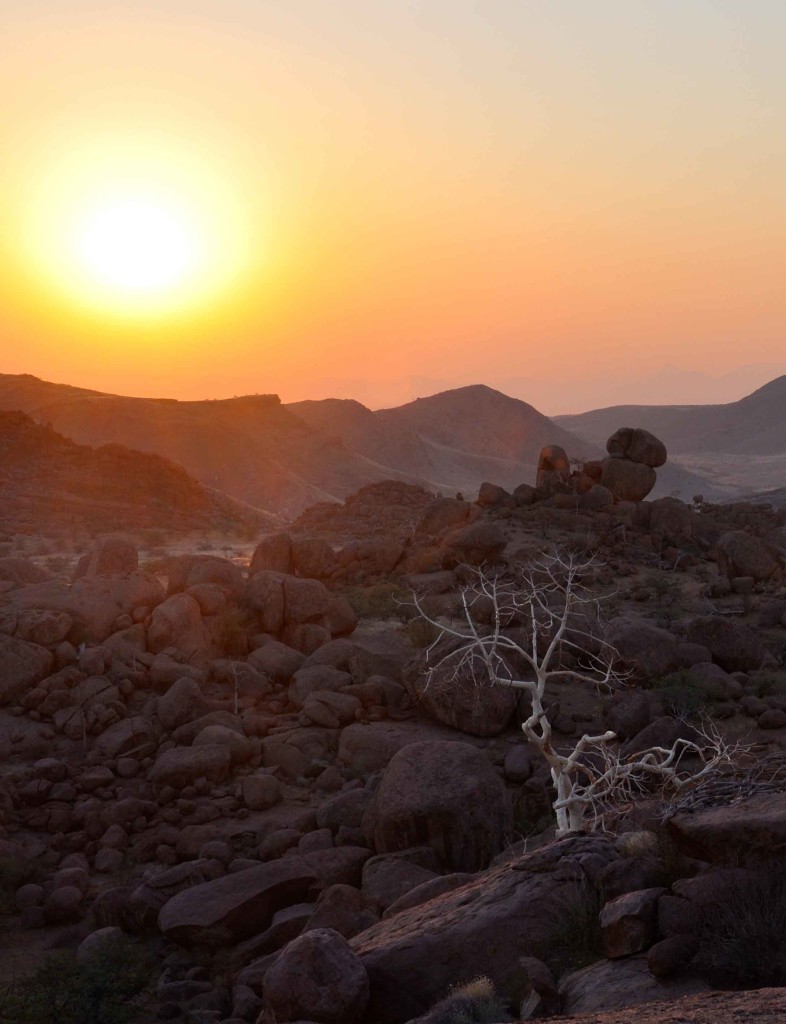
Twfelfontein has one of the largest concentrations of rock engravings in Africa.

Most of these well-preserved engravings represent rhinoceros, . The site also includes elephant, ostrich and giraffe, as well as drawings of human and animal footprints, rock shelters with motifs of human figures in red ochre.
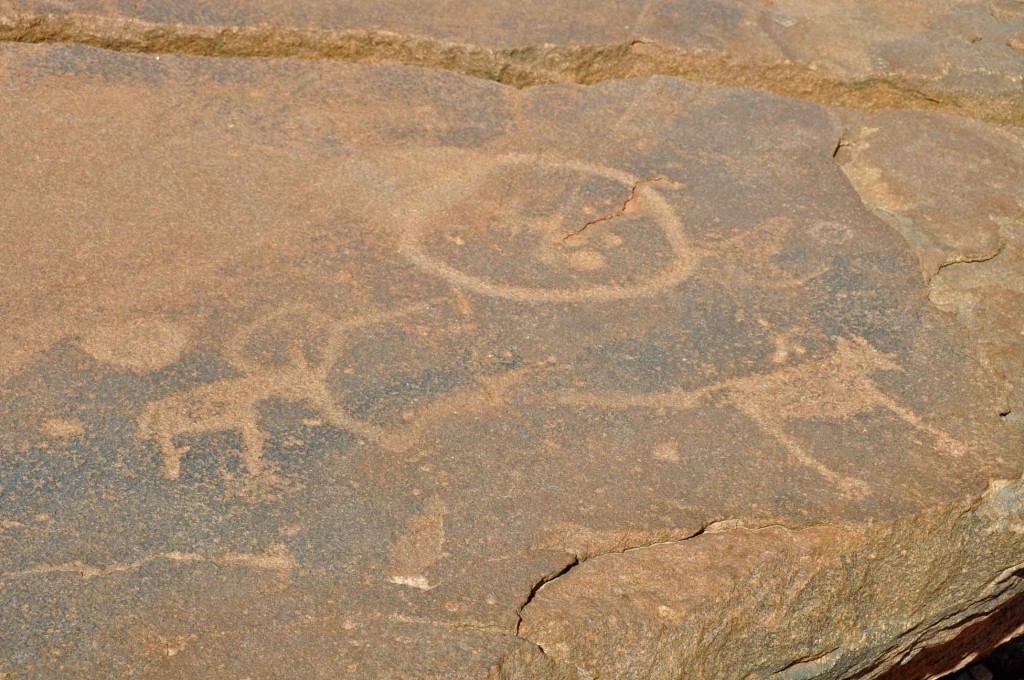
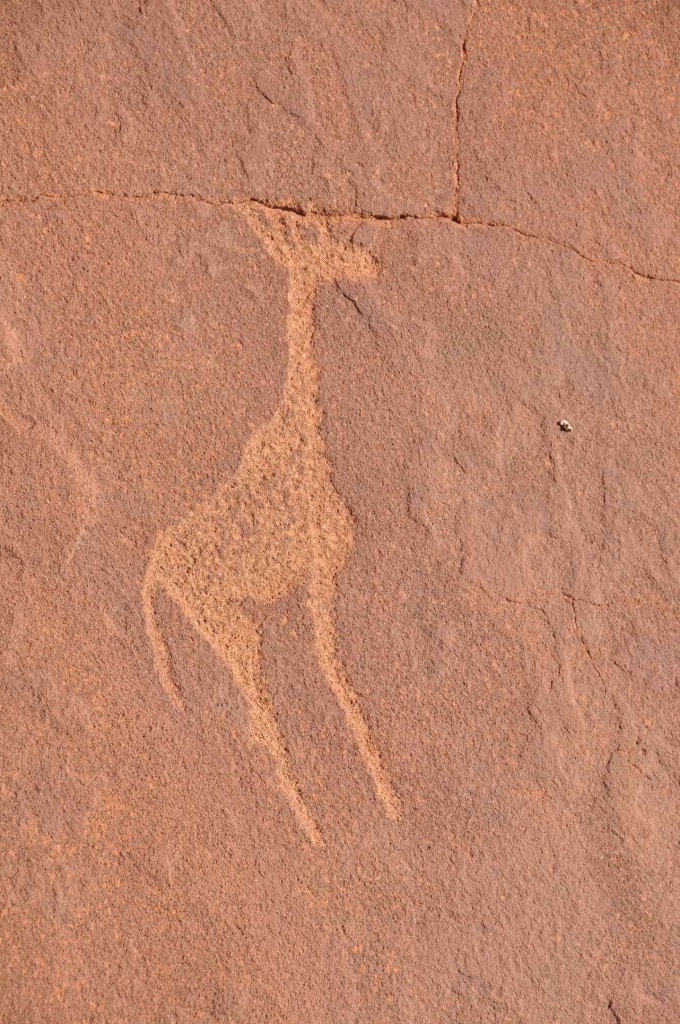
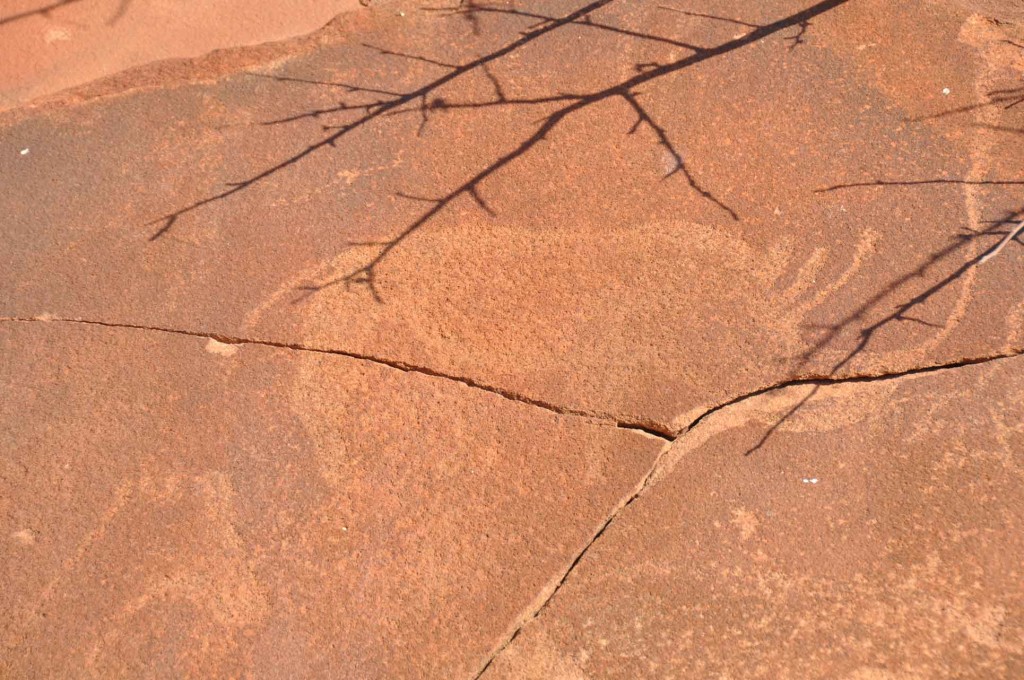

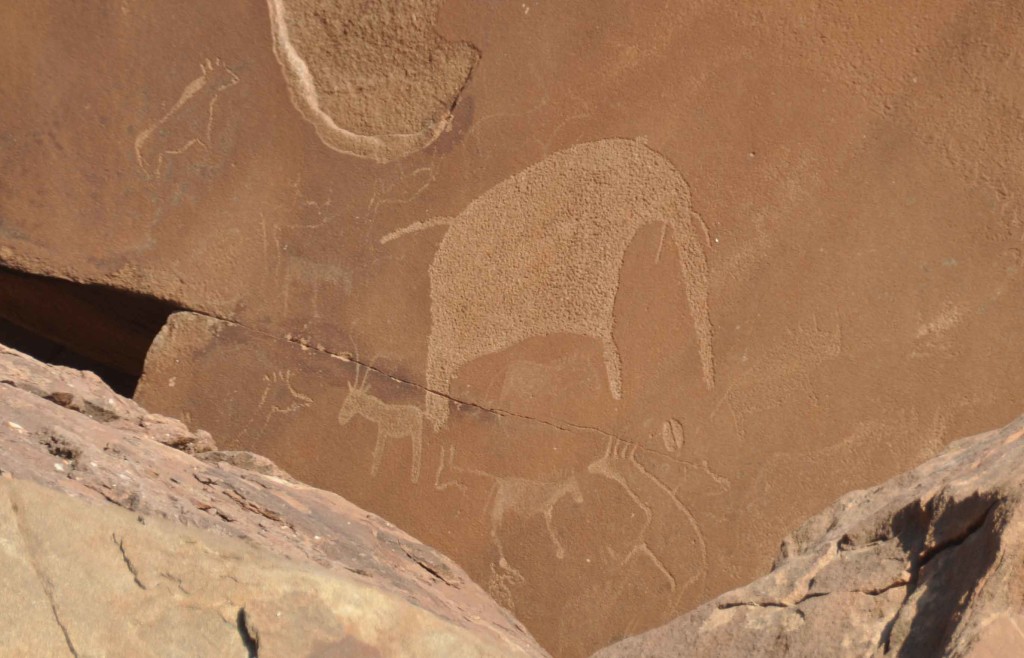

The objects excavated from two sections, date from the Late Stone Age. The site forms a coherent, extensive and high-quality record of ritual practices relating to hunter-gatherer communities in this part of southern Africa over at least 2,000 years, and illustrates the links between the ritual and economic practices of hunter-gatherers.
It is amazingly difficult to imagine people making a living in this barren land, yet clearly this is where life began and flourished.
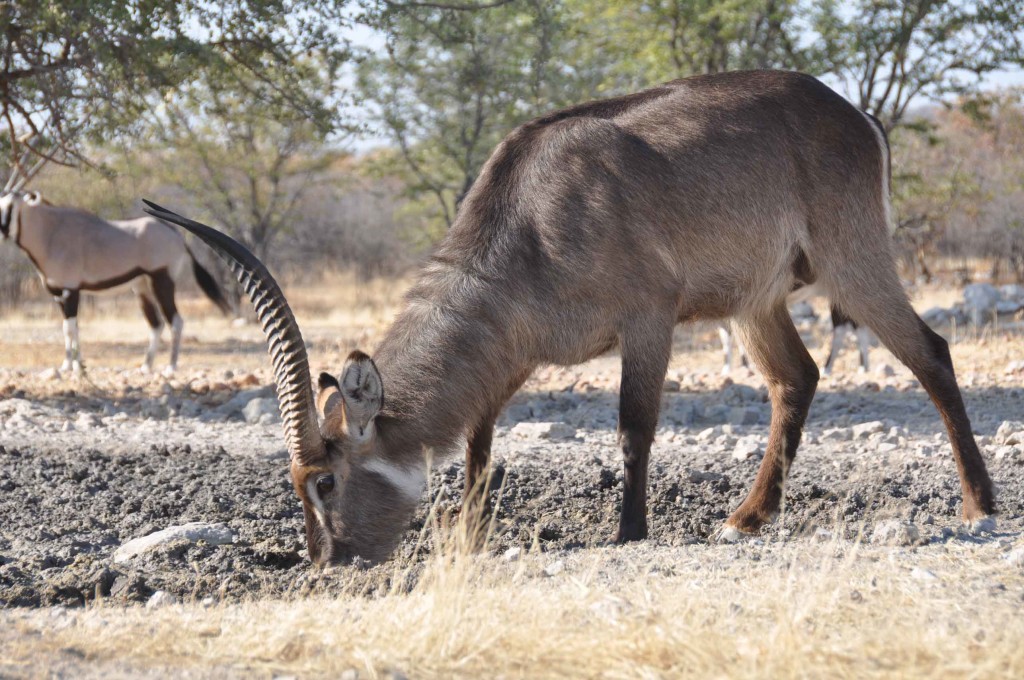 Etosha National Park in Namibia spans an area of 22,270 square kilometres and gets its name from the large Etosha Pan which is almost entirely within the park.
Etosha National Park in Namibia spans an area of 22,270 square kilometres and gets its name from the large Etosha Pan which is almost entirely within the park.
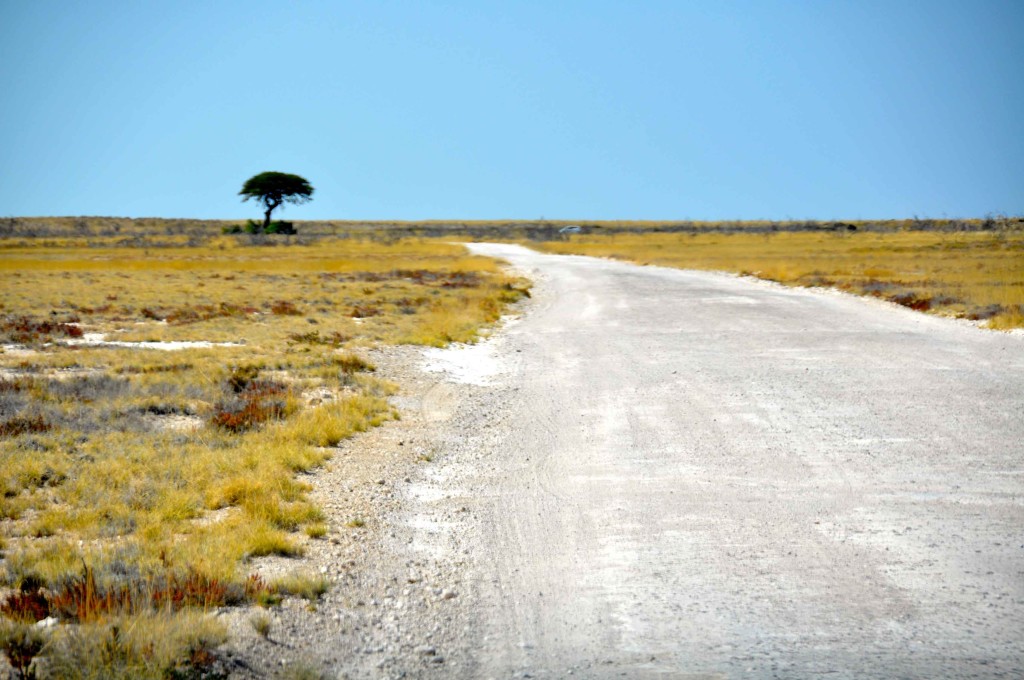 The Pan covers 23% of the area of the total area of the Etosha National Park and for most of the year is entirely dry.
The Pan covers 23% of the area of the total area of the Etosha National Park and for most of the year is entirely dry.
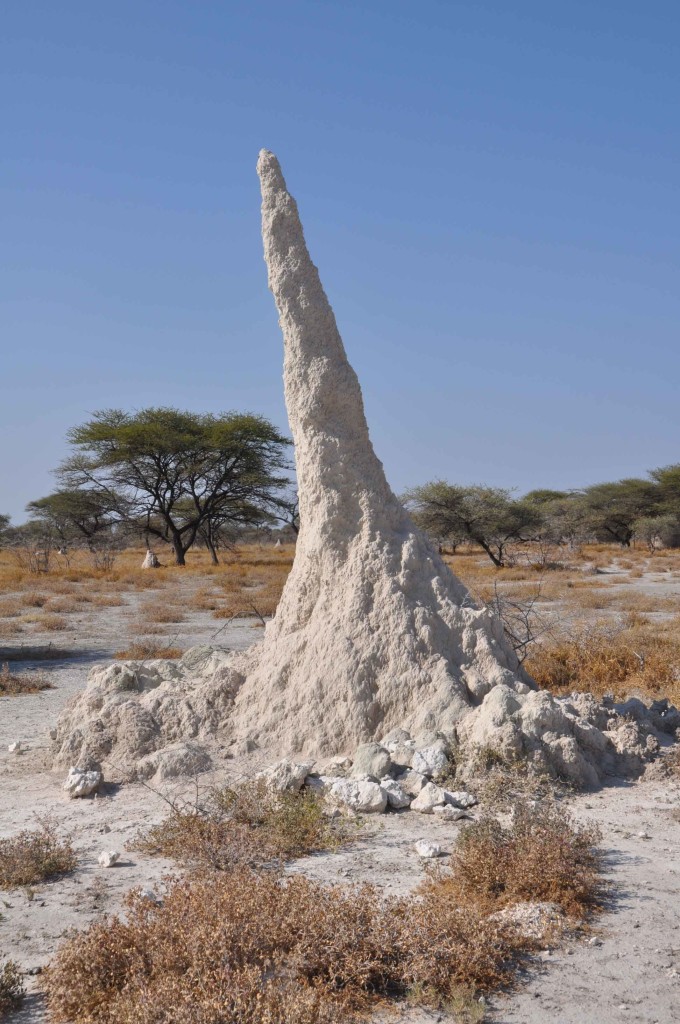
Waterholes remain even during the dryest season though, and one of the most surreal experiences has to be parking up to eat some sandwiches for lunch, only to find yourself surrounded first by elelphants and then by all of the other animals parked up waiting for the water to be free. Including the Namibian national animal

Within minutes of leaving, and in the middle of a flat desert, thirty or more elephants seem to simply disappear
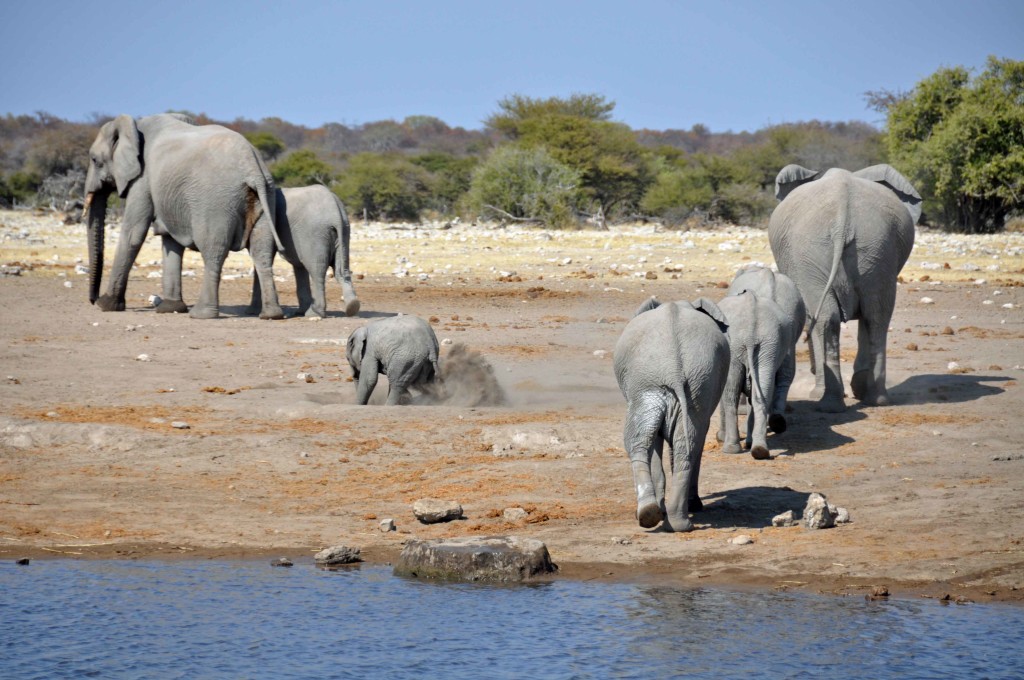
and the rest of the crowd gets a chance for a drink.
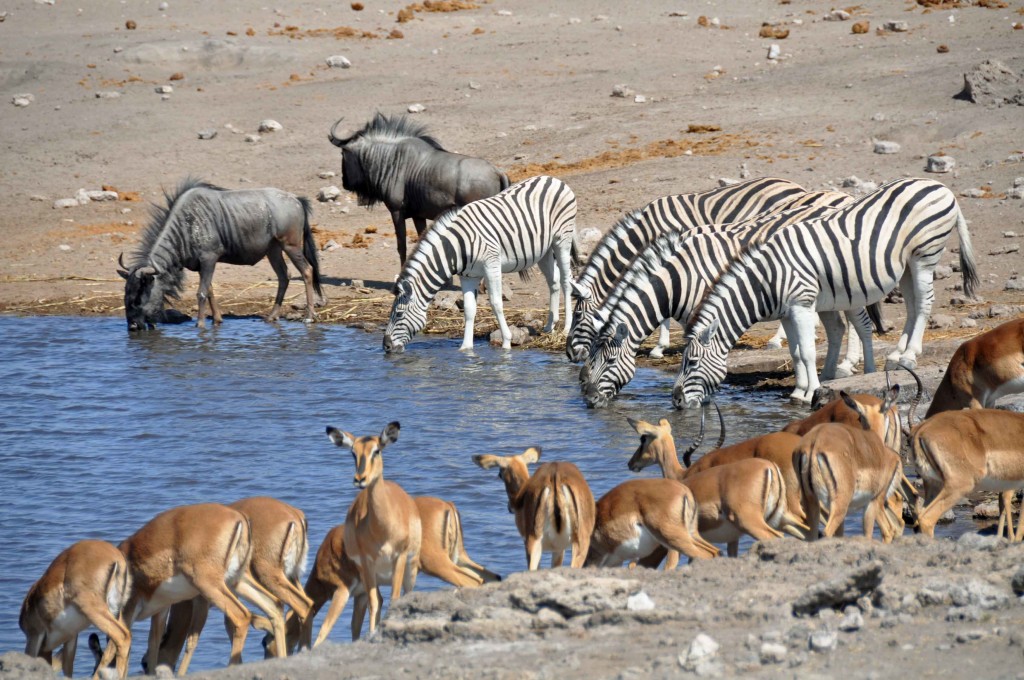
The most comical at the waterhole were definitely the giraffe.
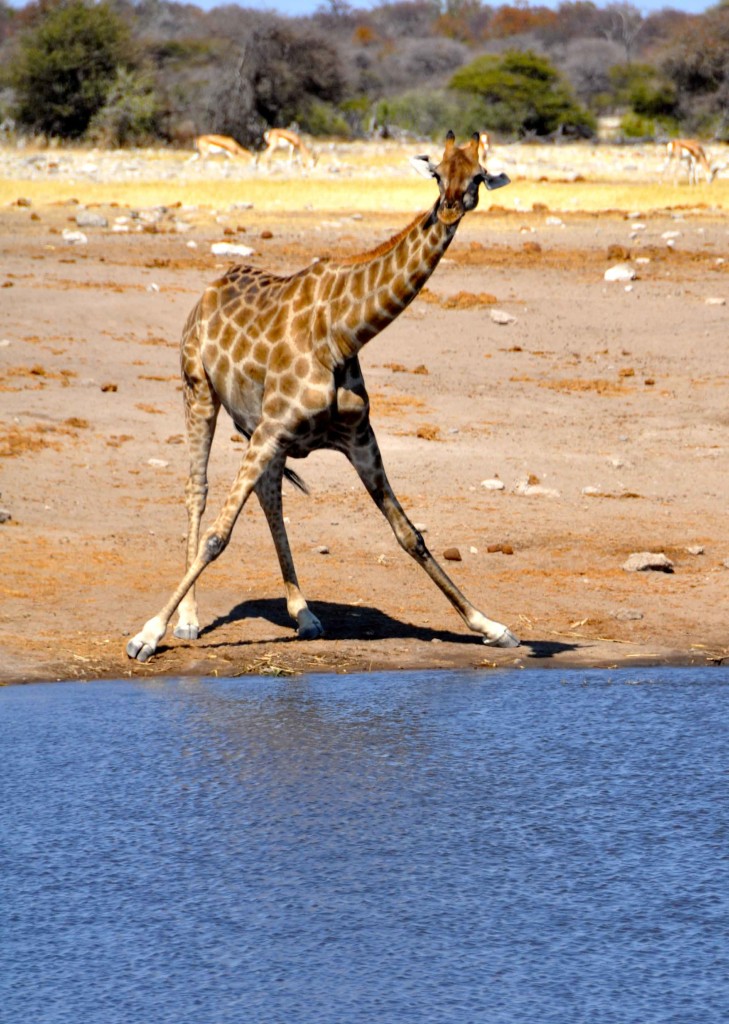

The park is home to hundreds of species of mammals, birds and reptiles, including several threatened and endangered species such as the black rhinocerous.

My worst picture is the one I was most pleased to capture – a black rhino visiting the waterhole one eveing, entirely unexpected and really quite remarkable to see.
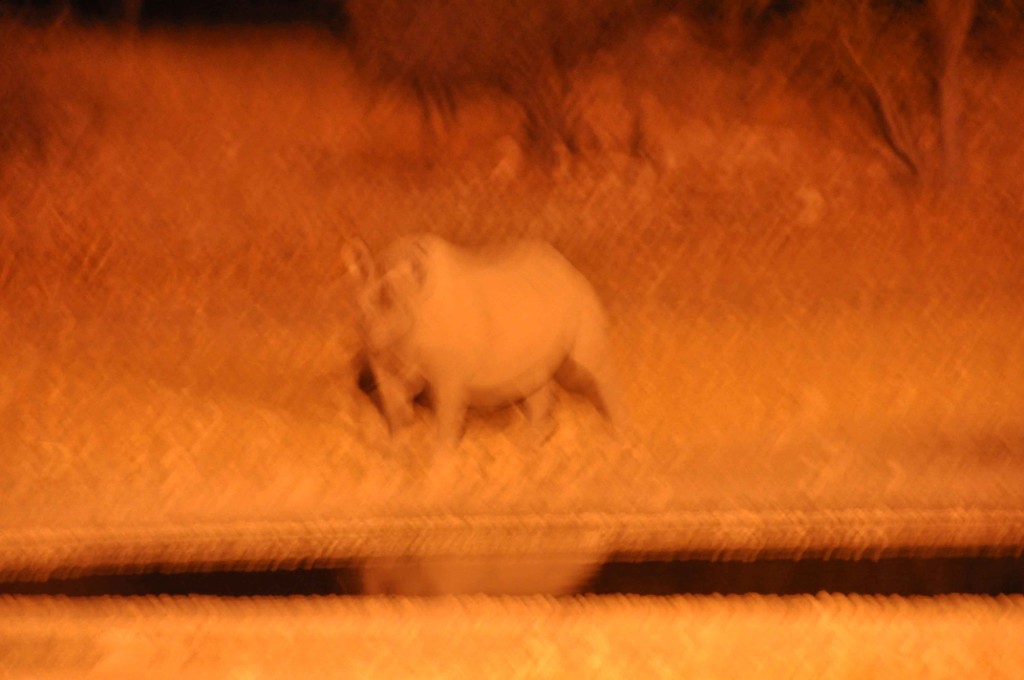
There are hundreds of herd animals so there are ofcourse plenty of hunters out there as well. It was less than reassuring, to find lions just five minutes away from our camp, no matter how majestic.
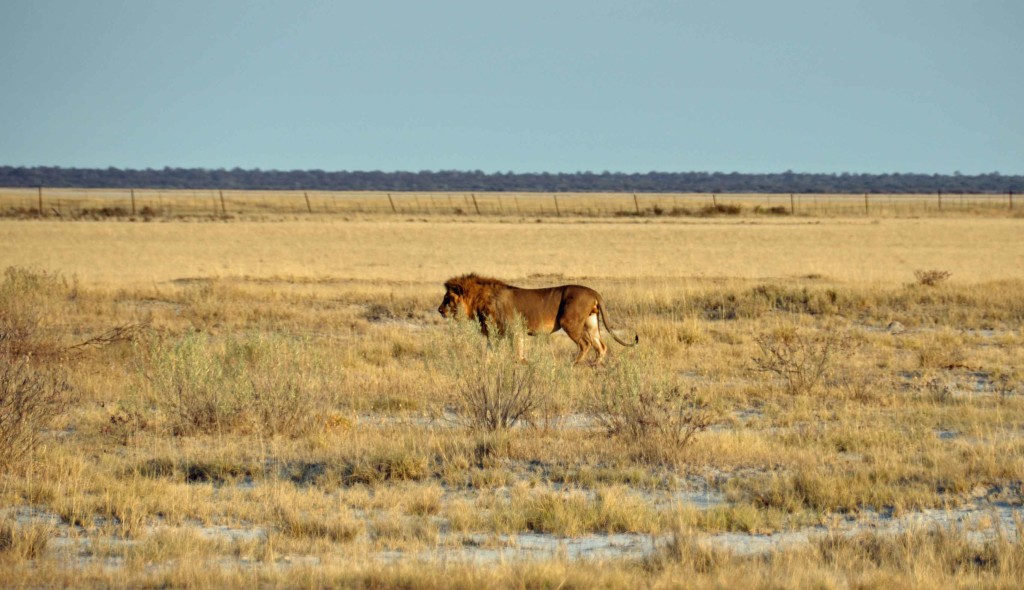
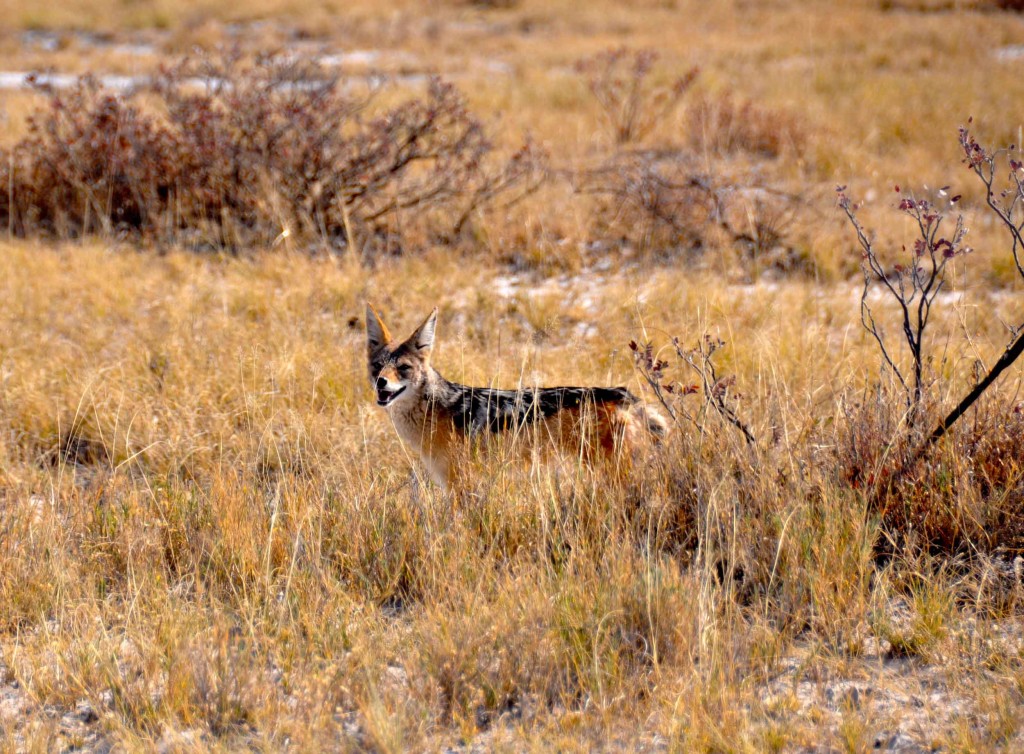
The bull elephant staring down at our jeep was a bit dodgy as well.
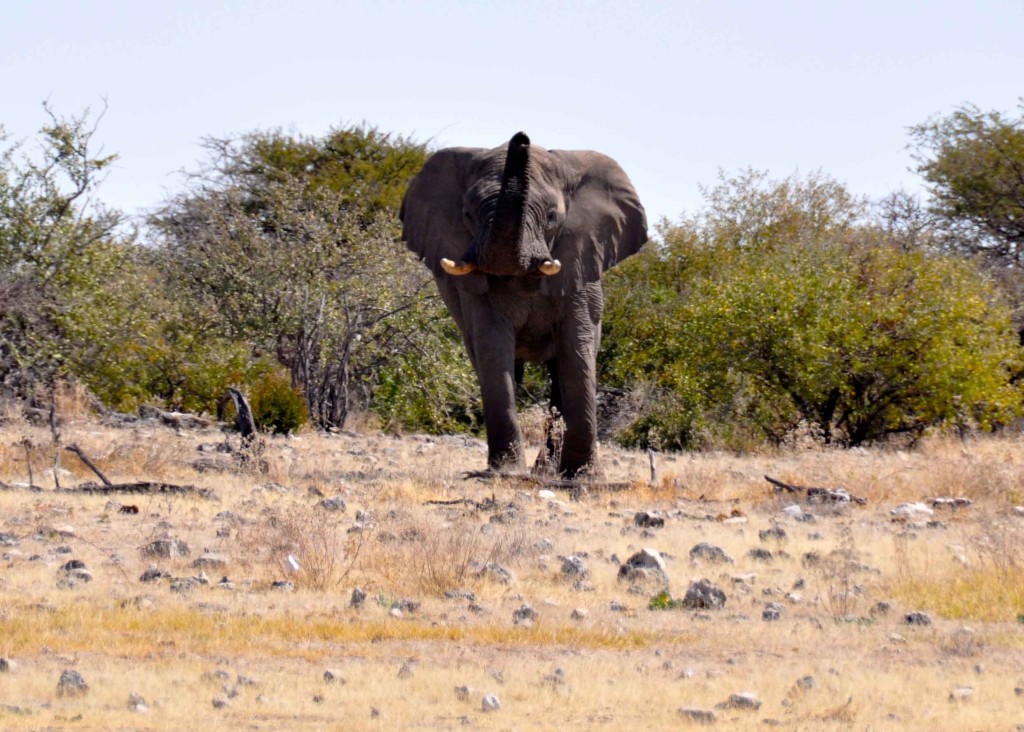
By the end we all had our favourite animals., from the various herd animals, the deer and antelopes;
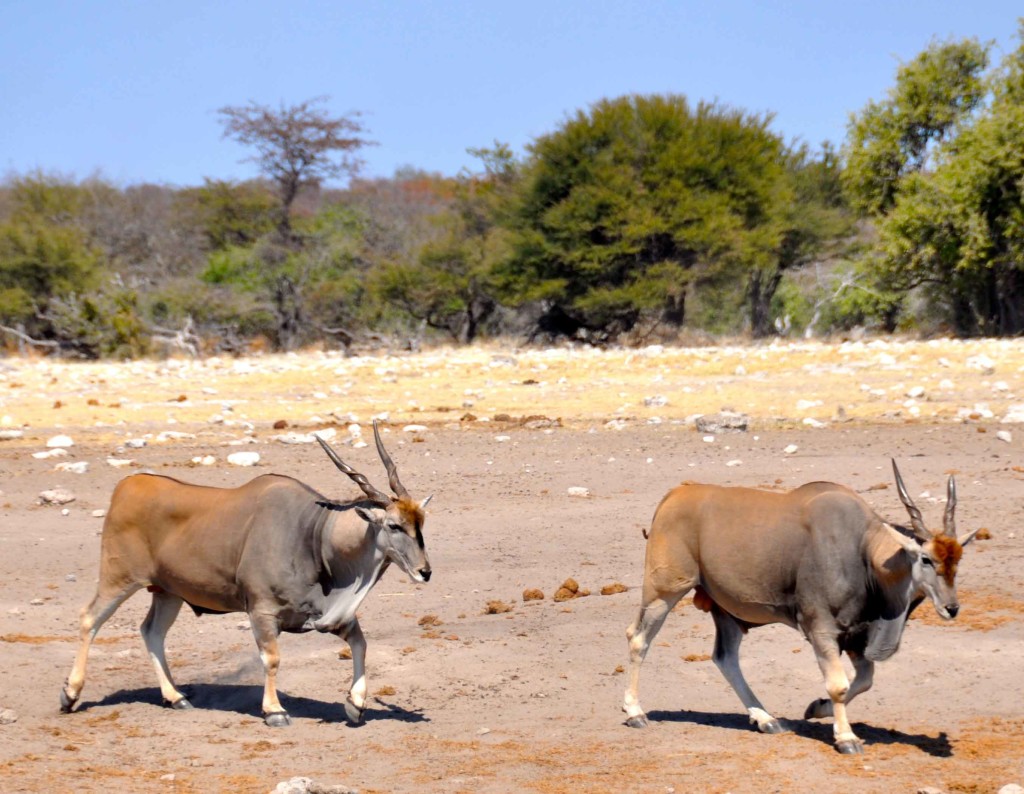
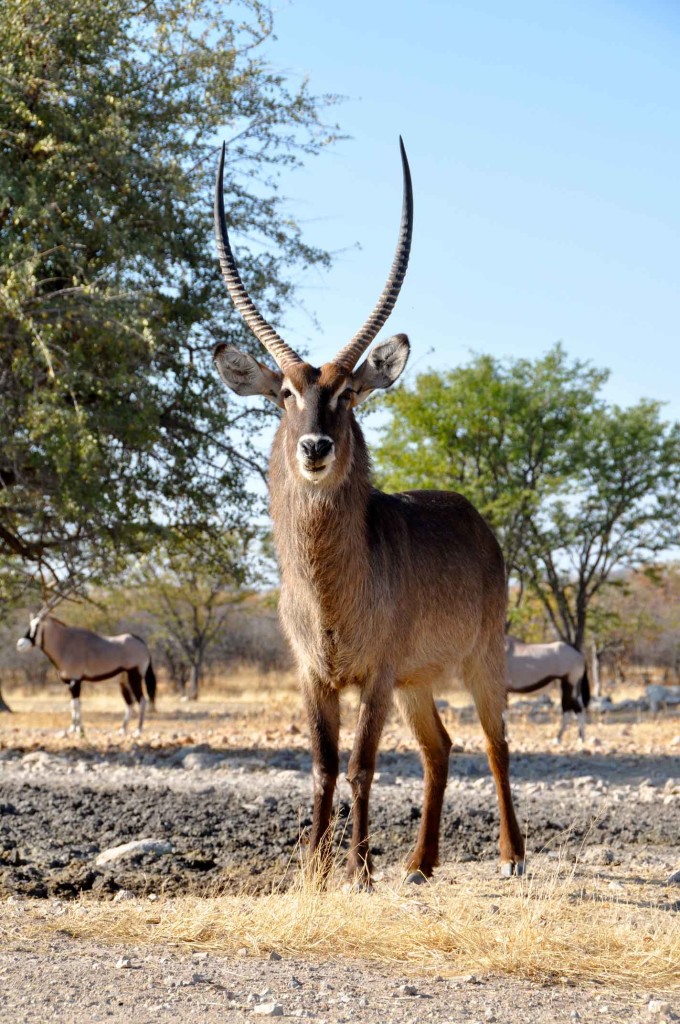 especially Springbok, jumping all over the place dementedly
especially Springbok, jumping all over the place dementedly
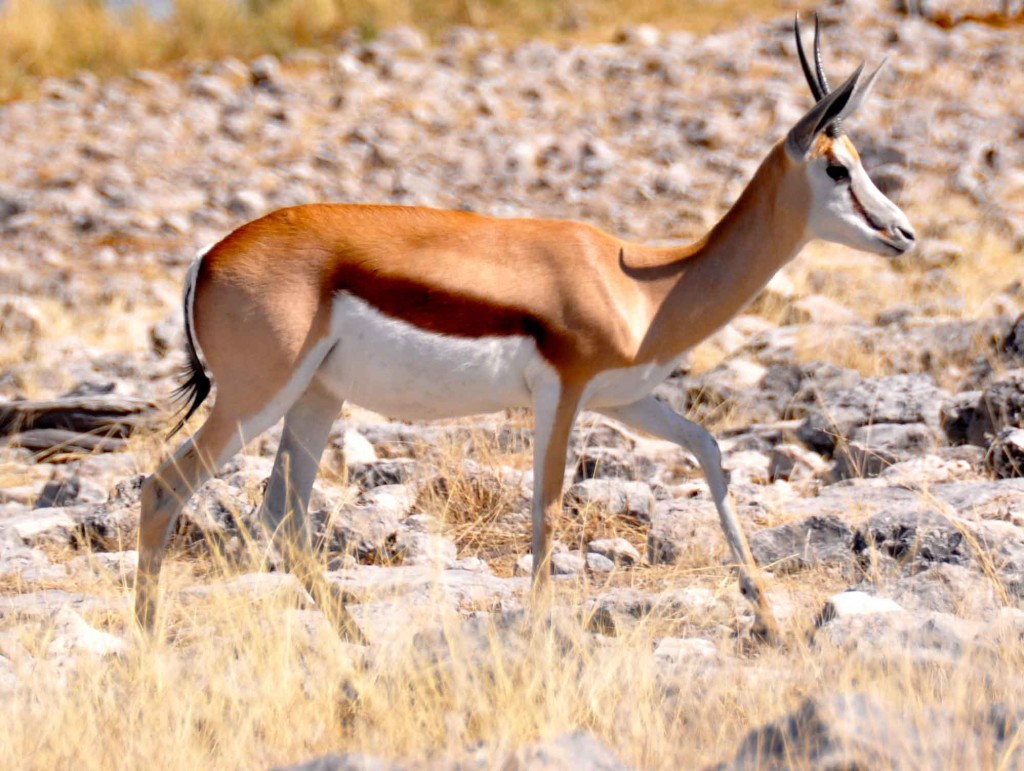
Giraffe, a strange combination of elegant and ridiculous;
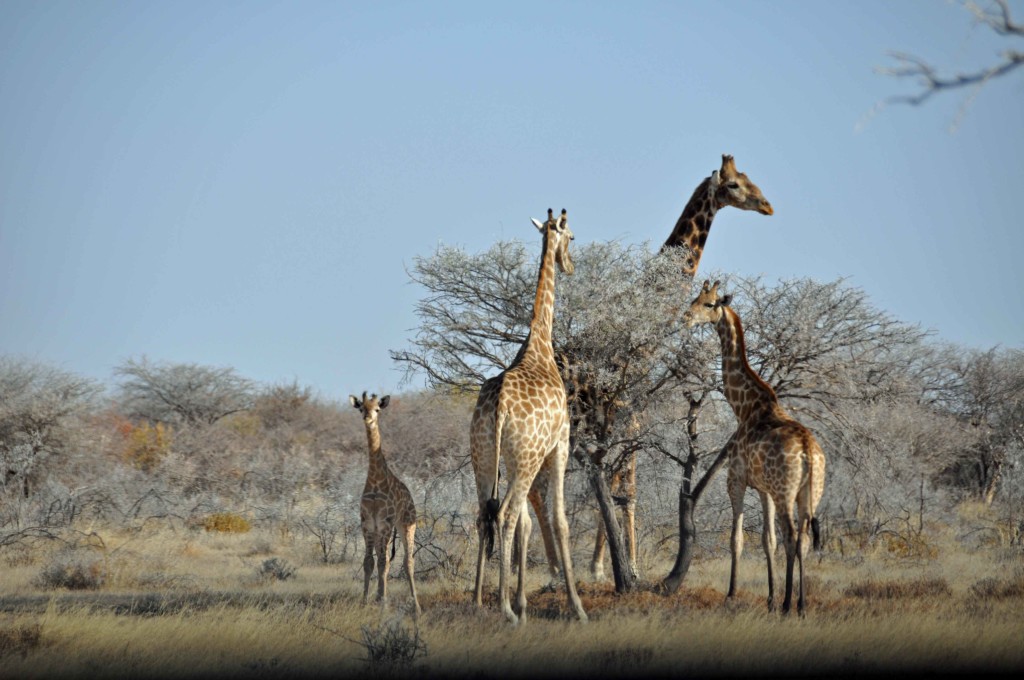
Zebra, all black and white spiffiness;

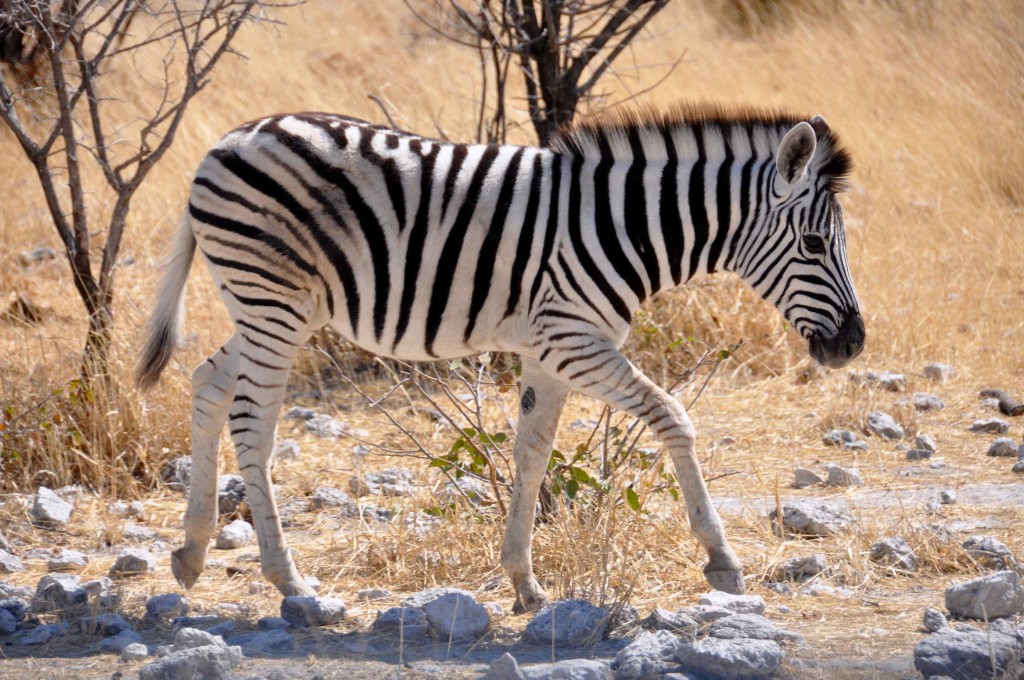
Kudu, with their funny horns
and gemsbok, the Namibian national animal.
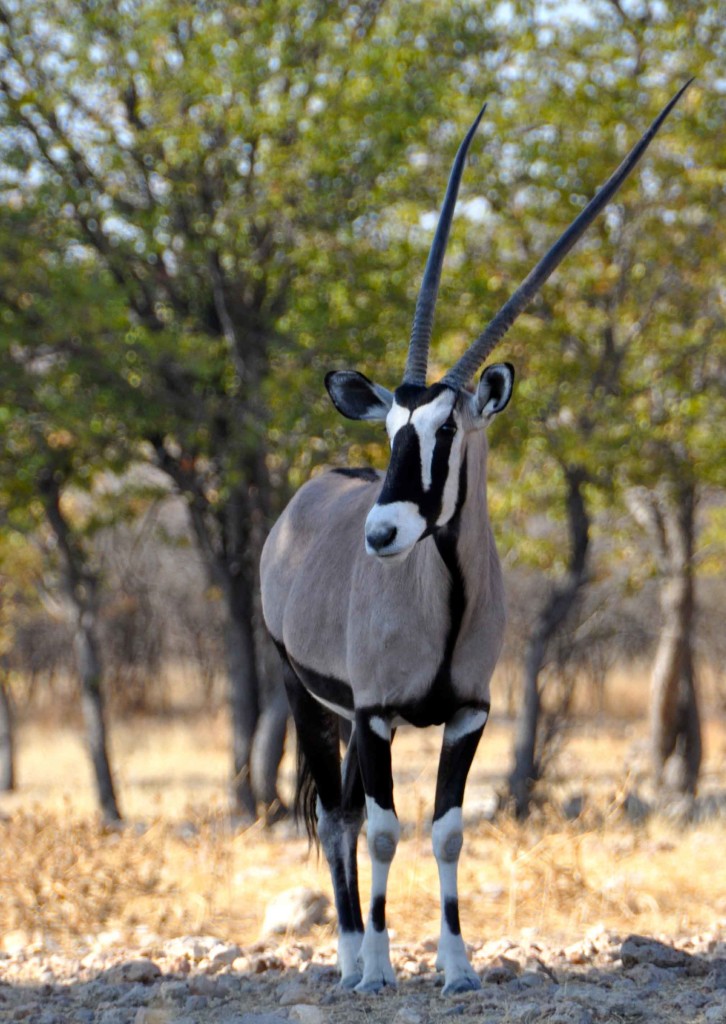
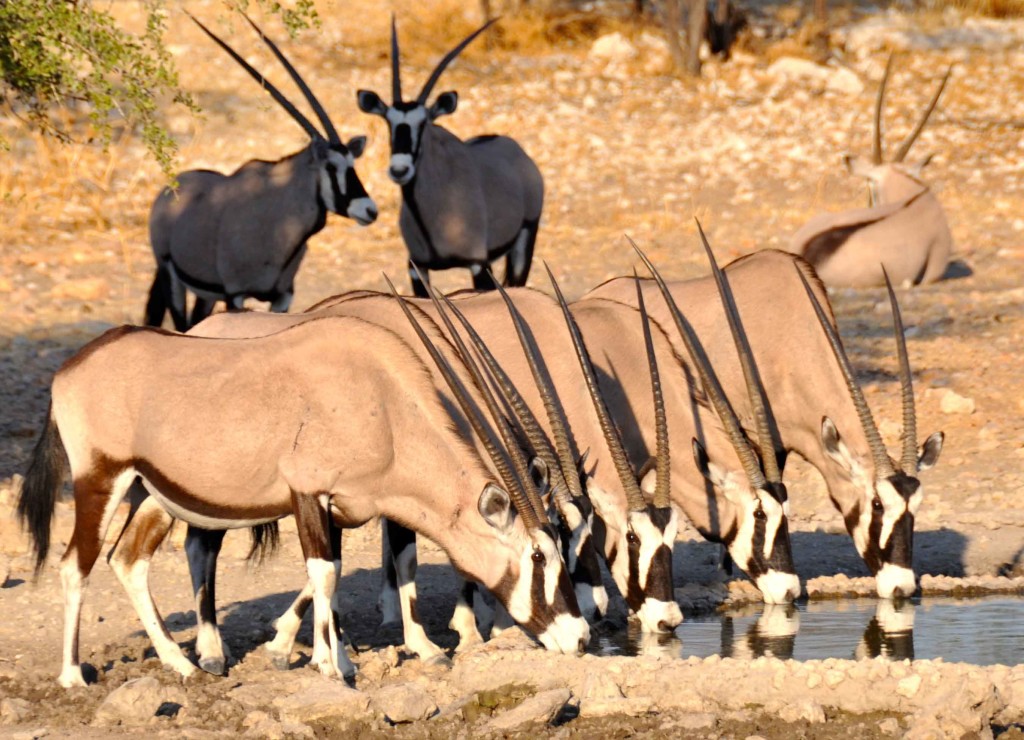 The various birds were astonishing colours, shapes and sizes
The various birds were astonishing colours, shapes and sizes
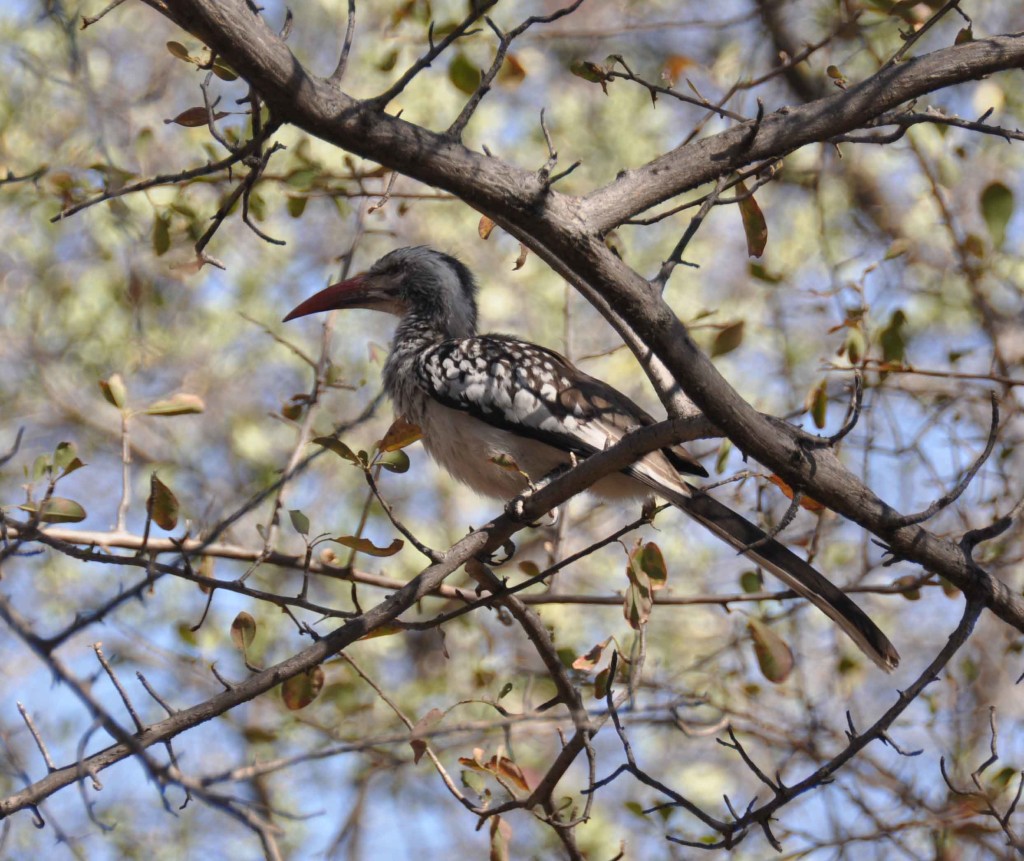
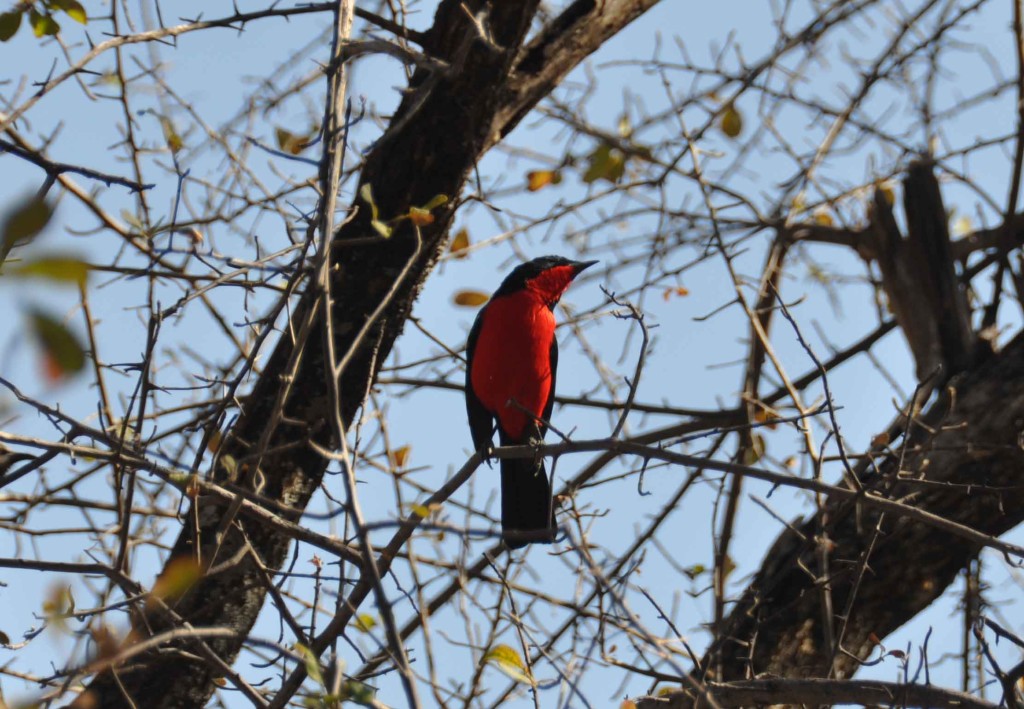 The wildebeest were probably least loved.
The wildebeest were probably least loved.
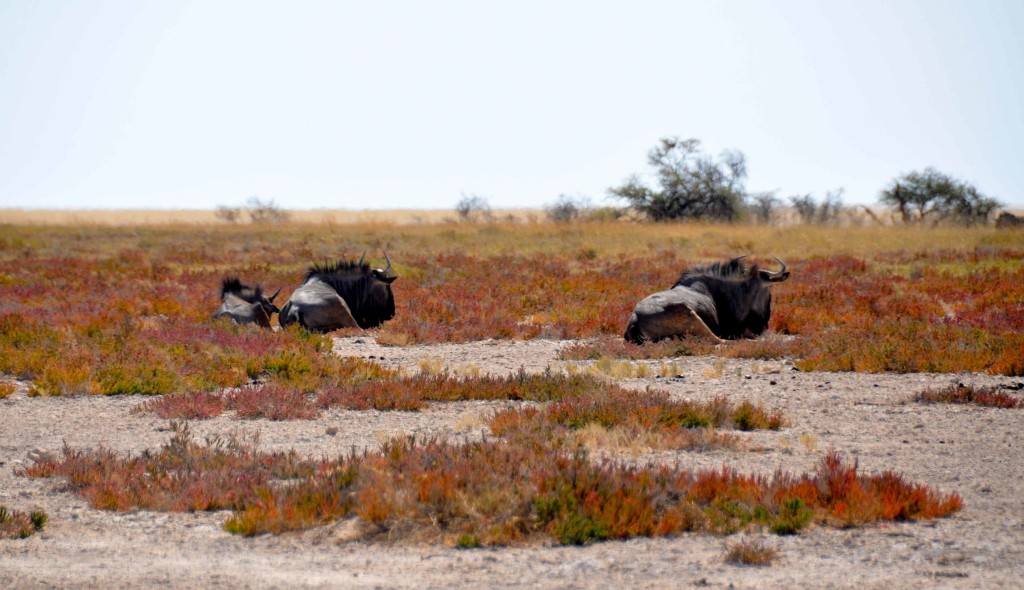
and the elephants the most loved.
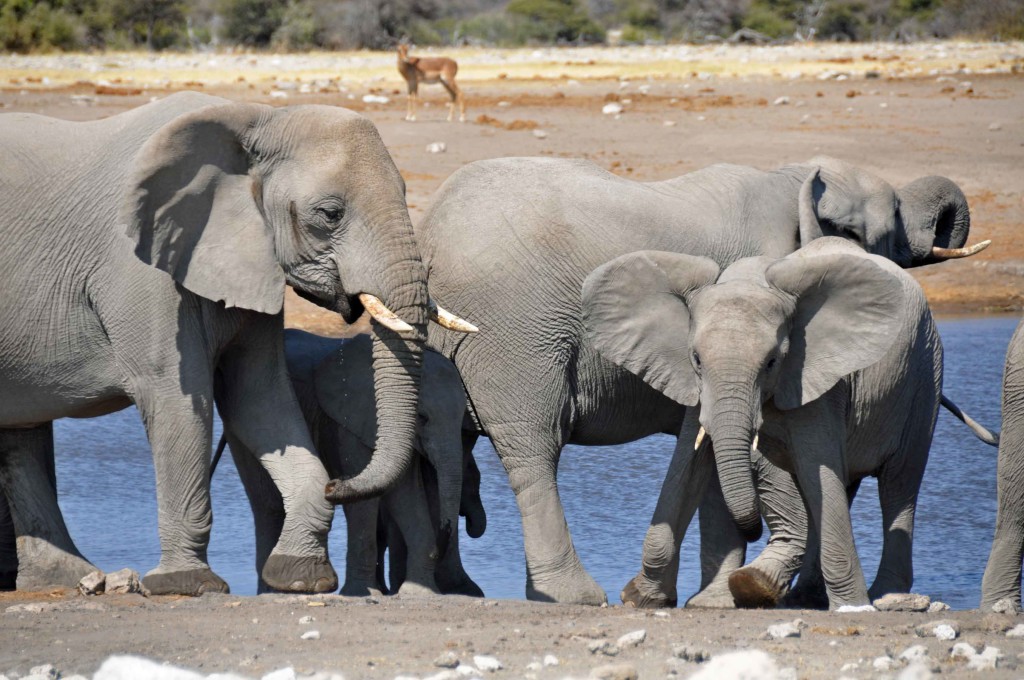
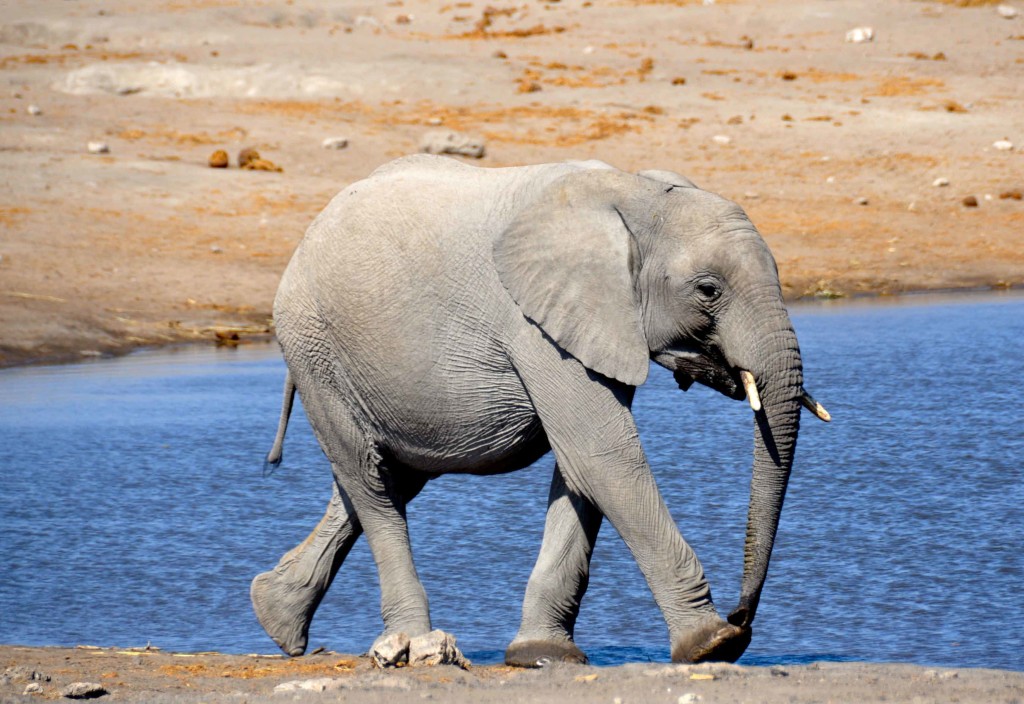
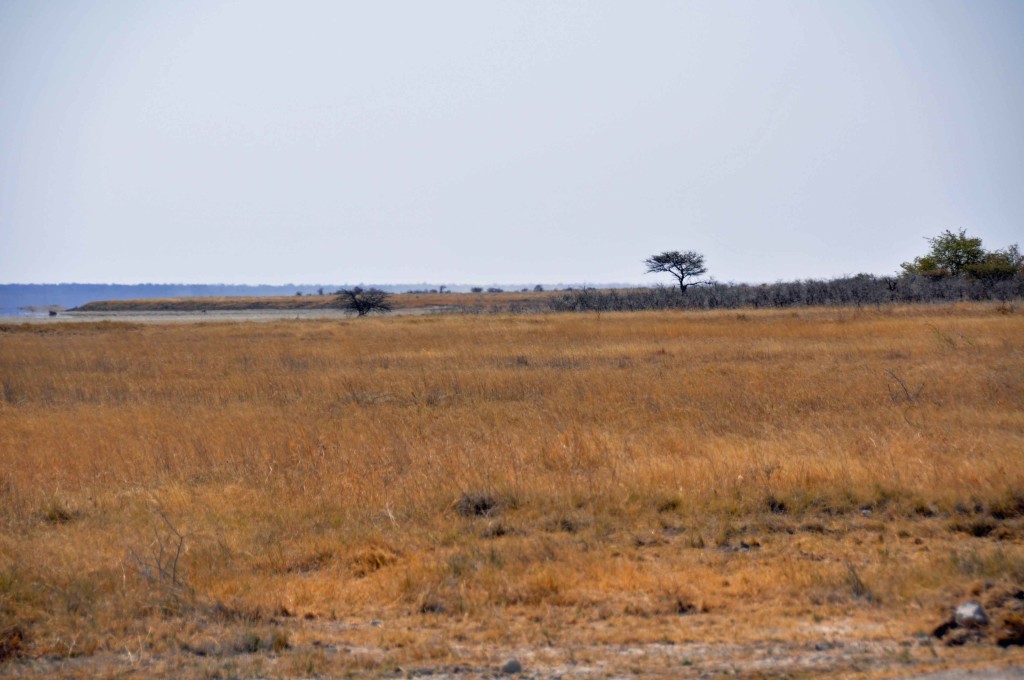
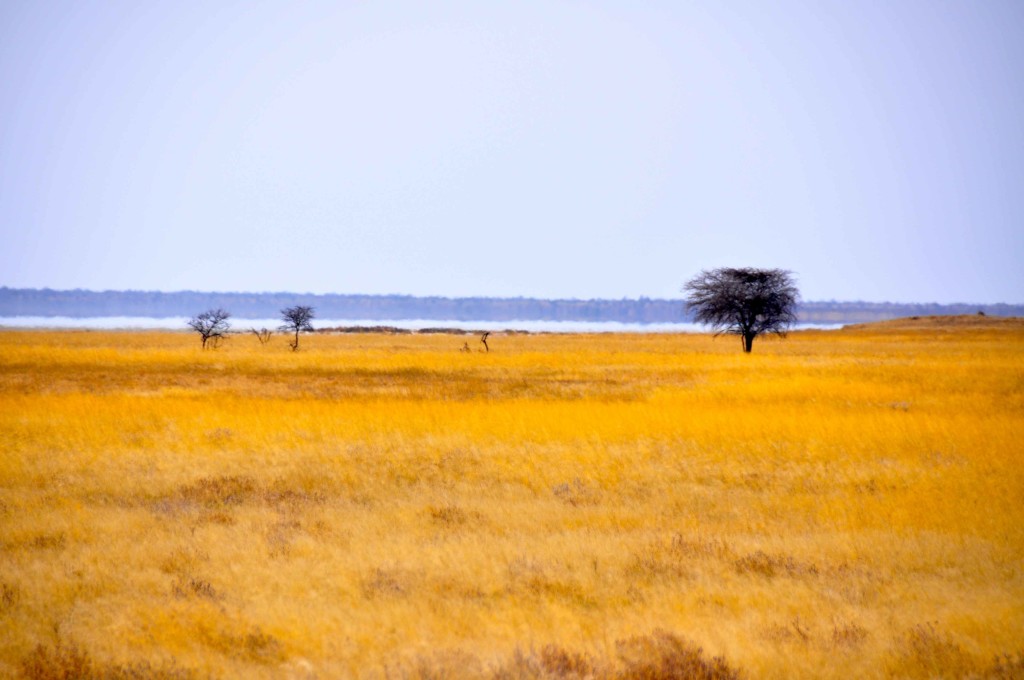

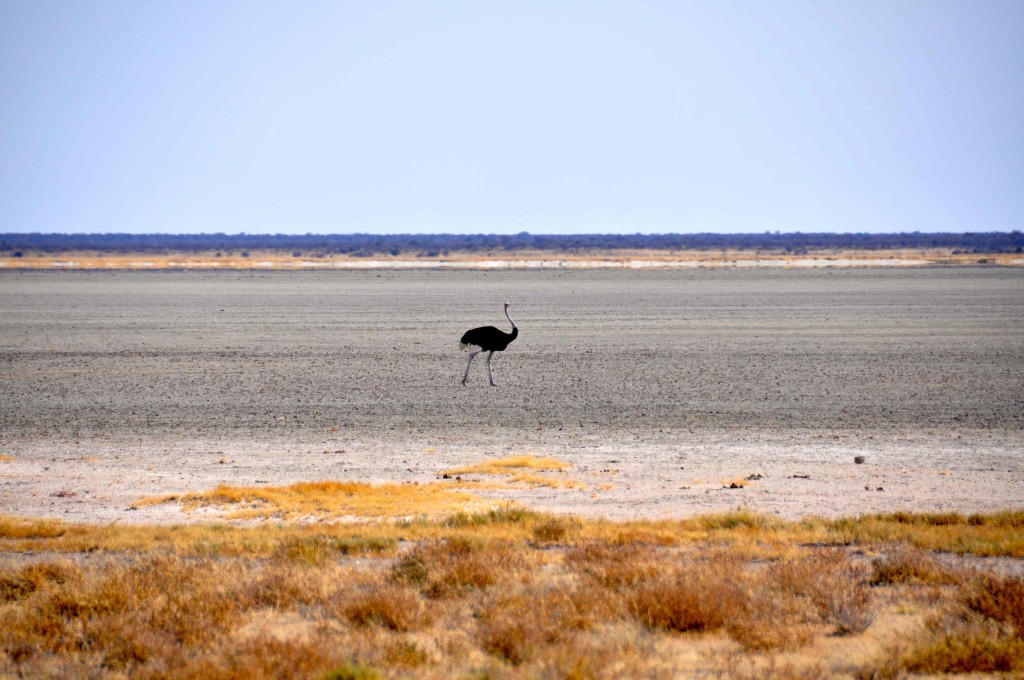
It was the most amazing place, completely different as a landscape to the rest of our visit in Namibia and certainly like nowhere else I’ve been around the world.
We went to Namibia for the landscape primarily, but found a plethora of animals to enjoy while we were there. Astonishing.
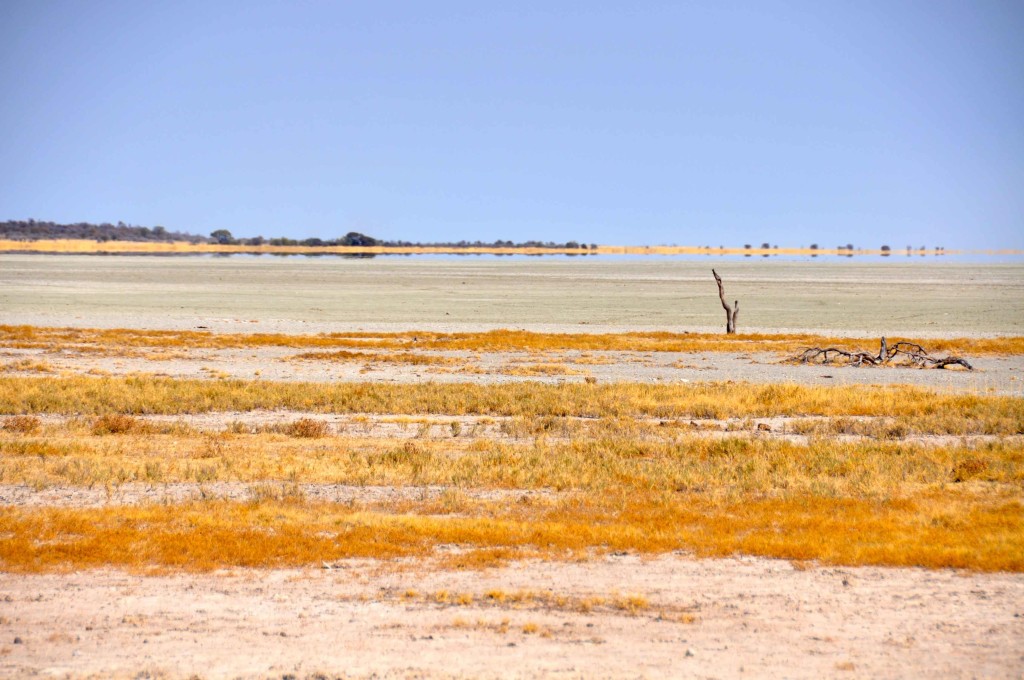
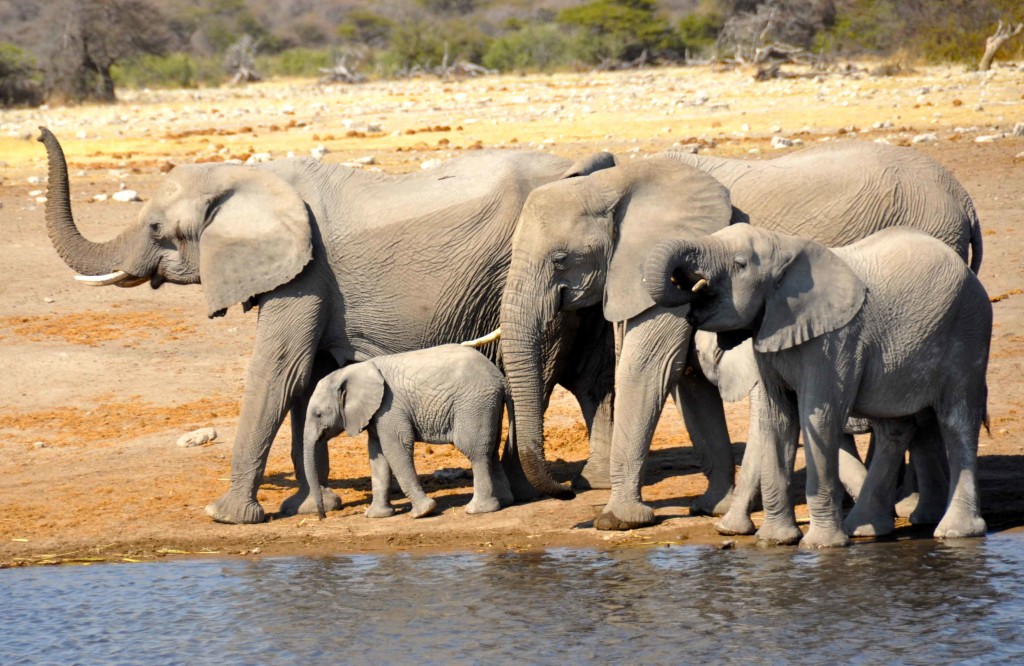
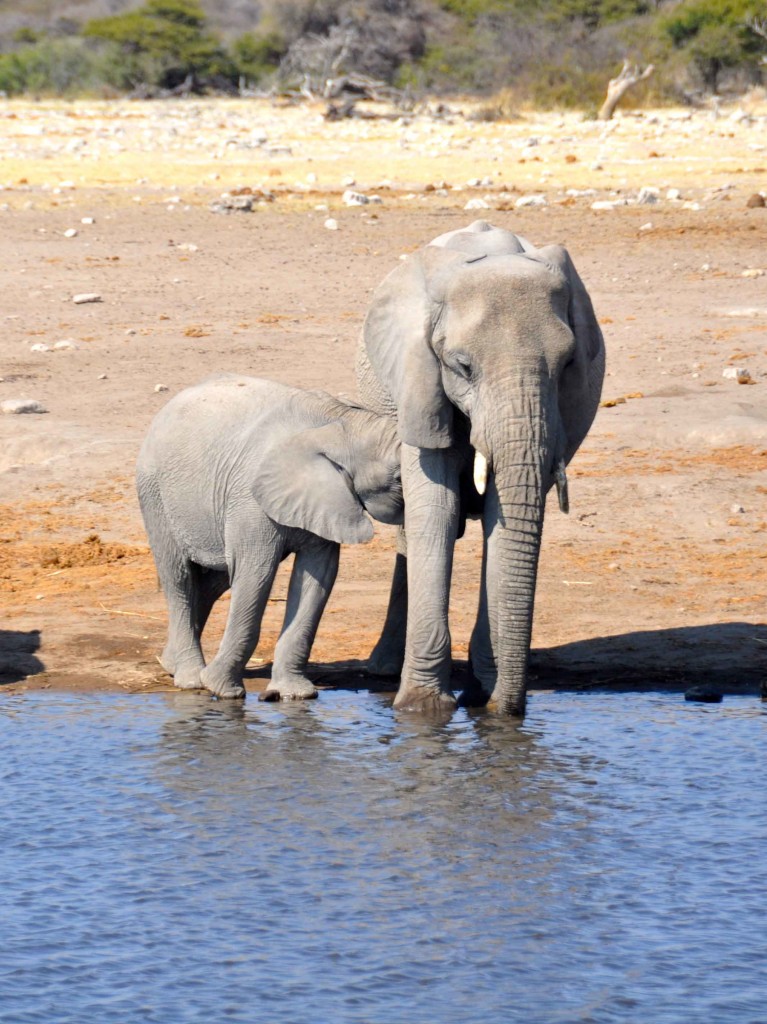
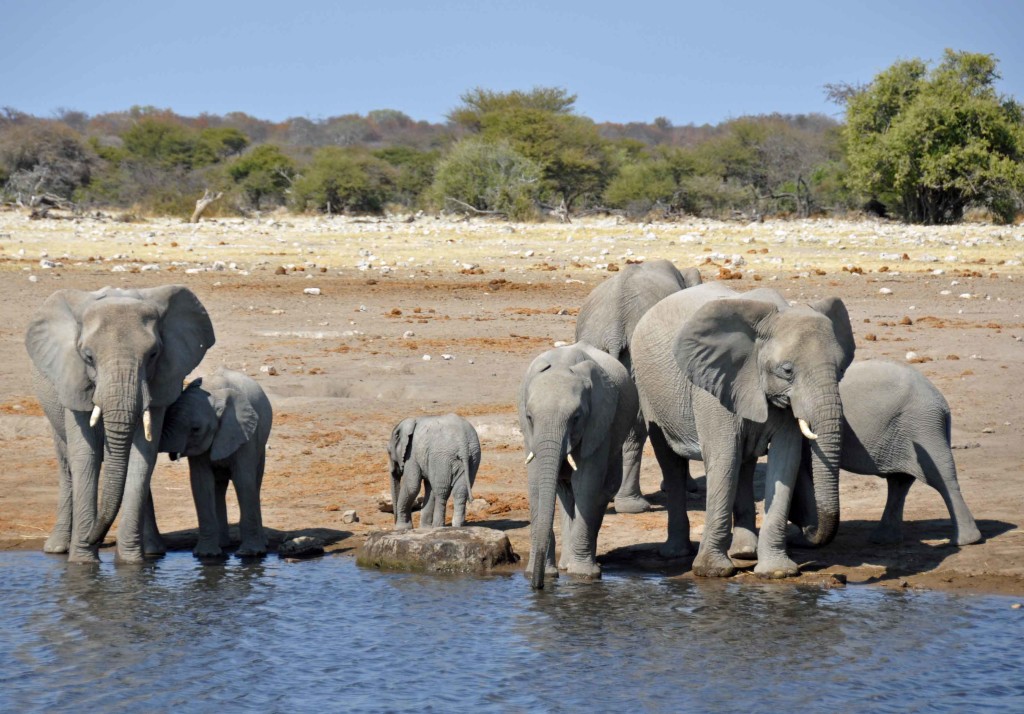
Africat is a charitable foundation based in Namibia that looks to the protection of the African big cats. It also allows visitors a chance to interact with them on it’s land since many of it’s rescued animals are released with tags.
`We came across a juvenile female leopard who quite clearly would have eaten us given half a chance.
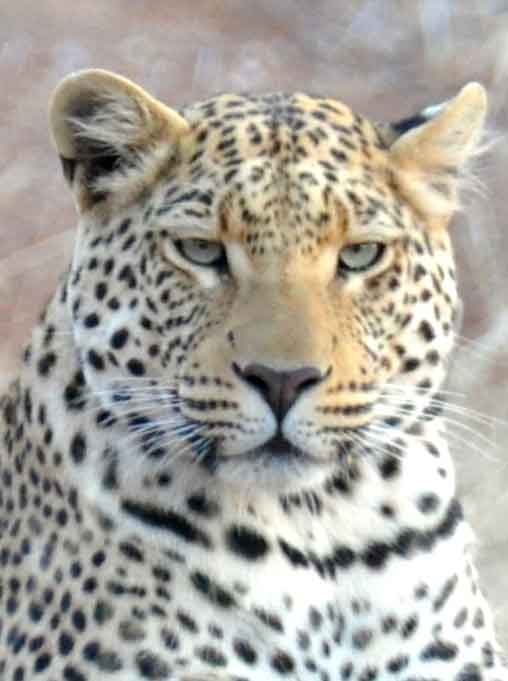
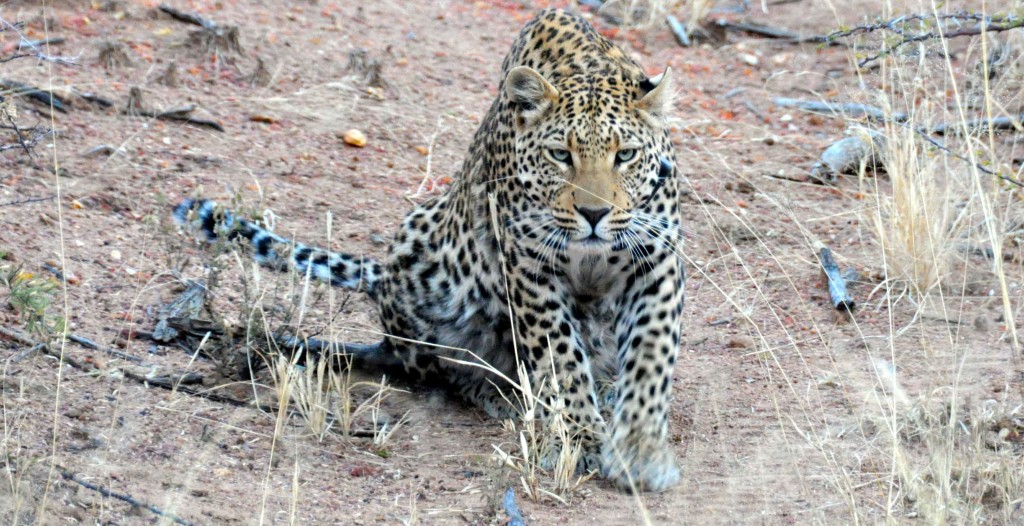
There was also a mature female but she moved with such stealth and speed, it was impossible to get a worthwhile picture. Predators are amazingly difficult to see if they don’t want to be seen.
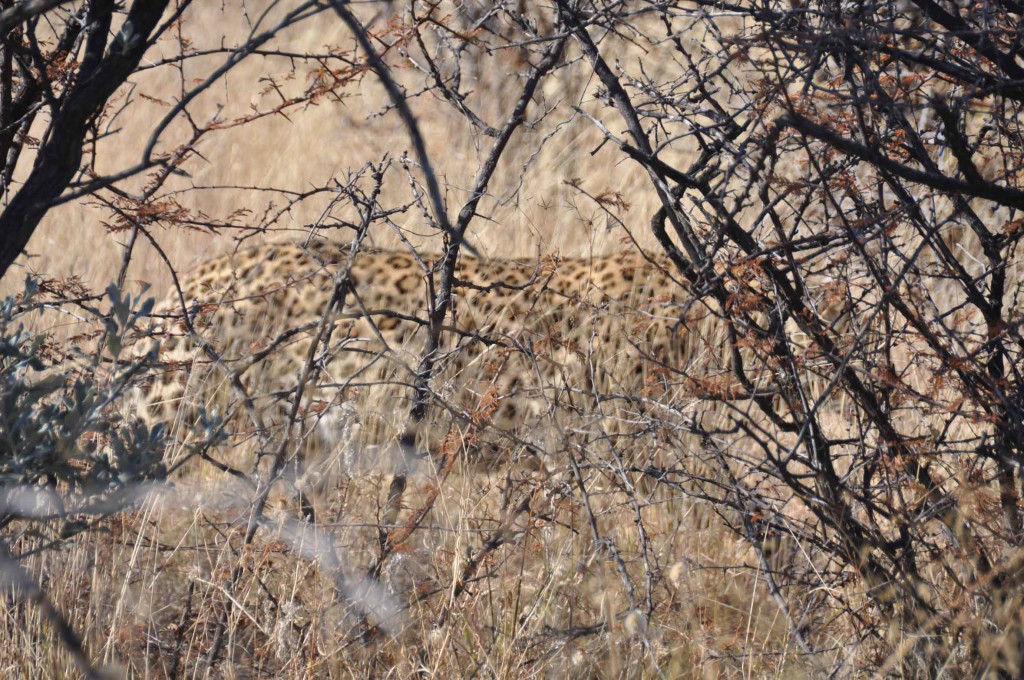 As well as the cats, the reserve had a few other healthy looking predators and obviously that requires prey.
As well as the cats, the reserve had a few other healthy looking predators and obviously that requires prey.
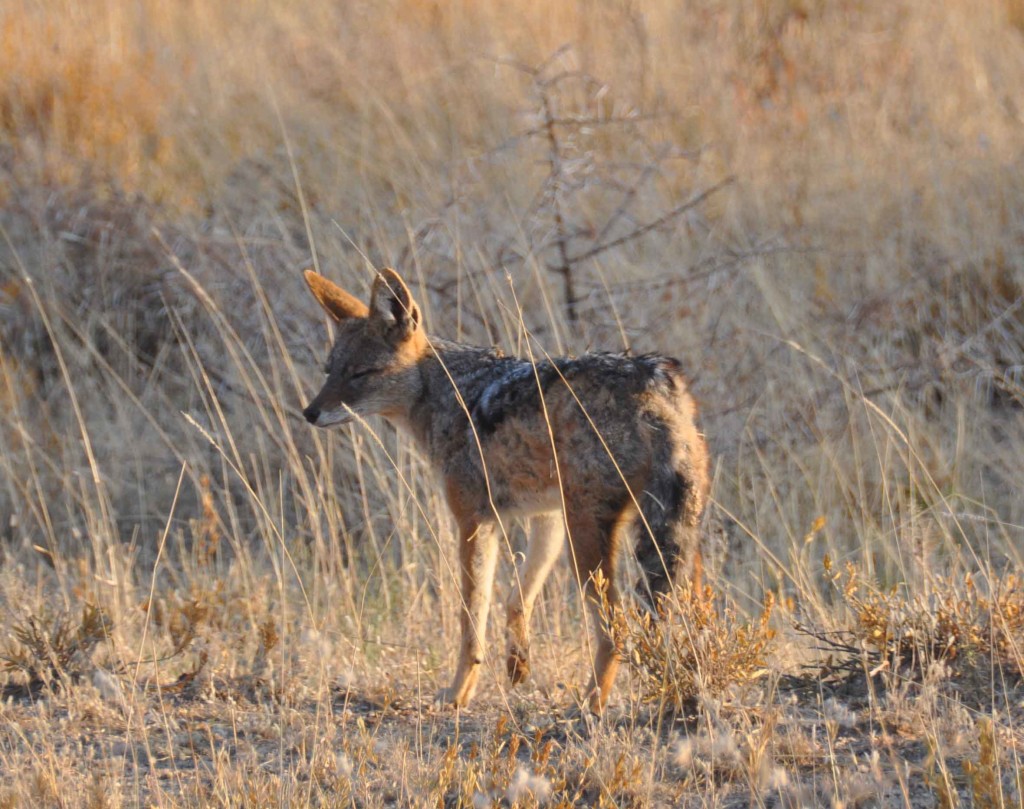
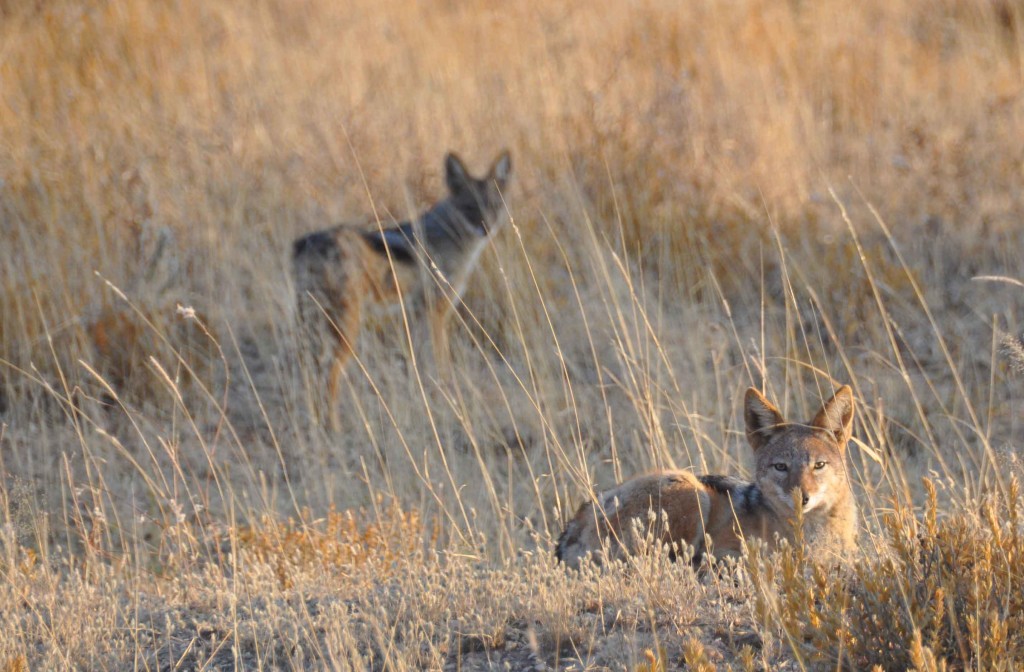
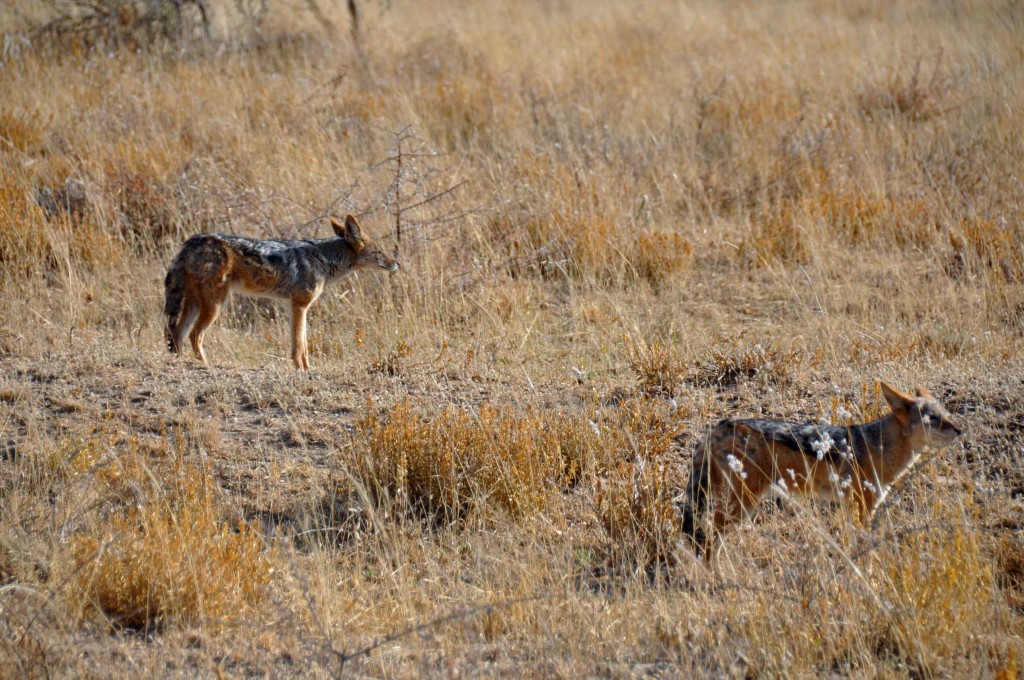
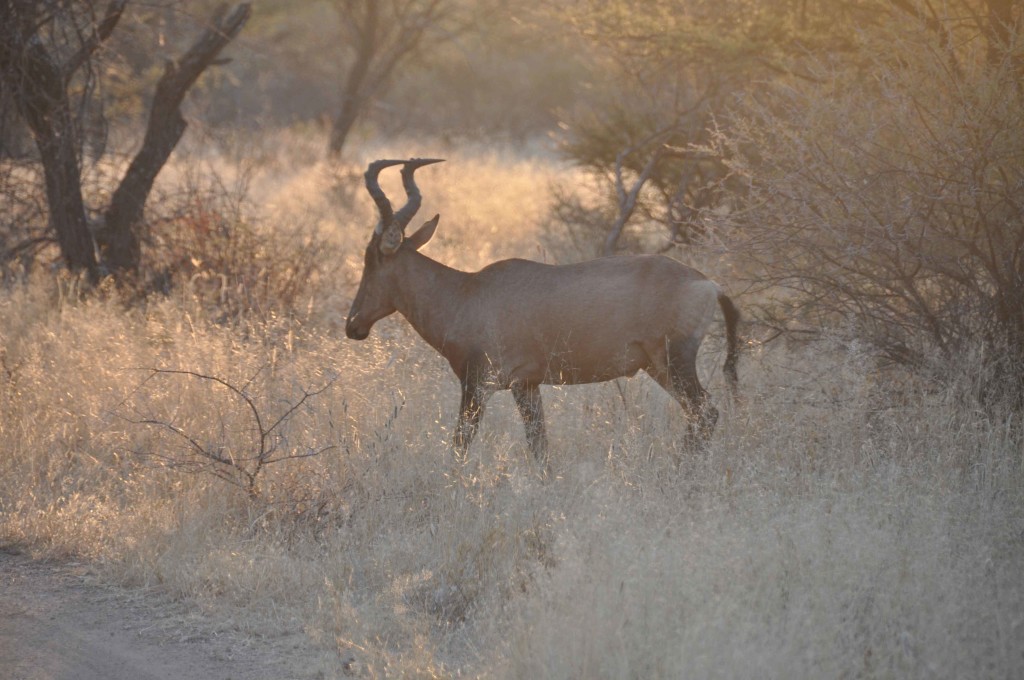 The cheetahs we found at a kill site, having already enjoyed the innards, purring and licking each other up in satisfaction.
The cheetahs we found at a kill site, having already enjoyed the innards, purring and licking each other up in satisfaction.
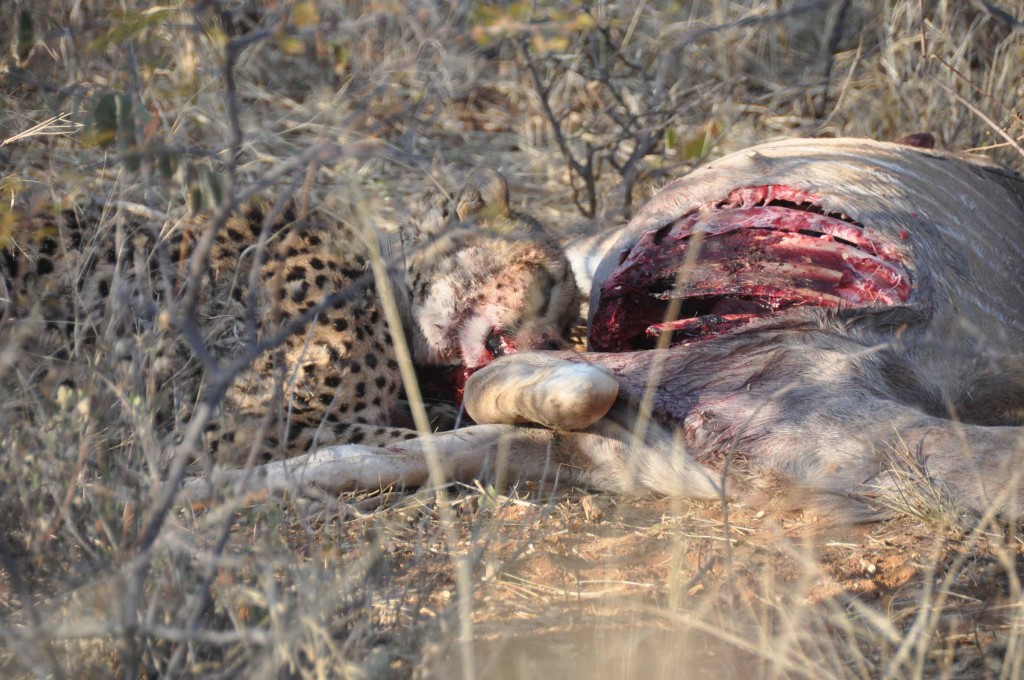
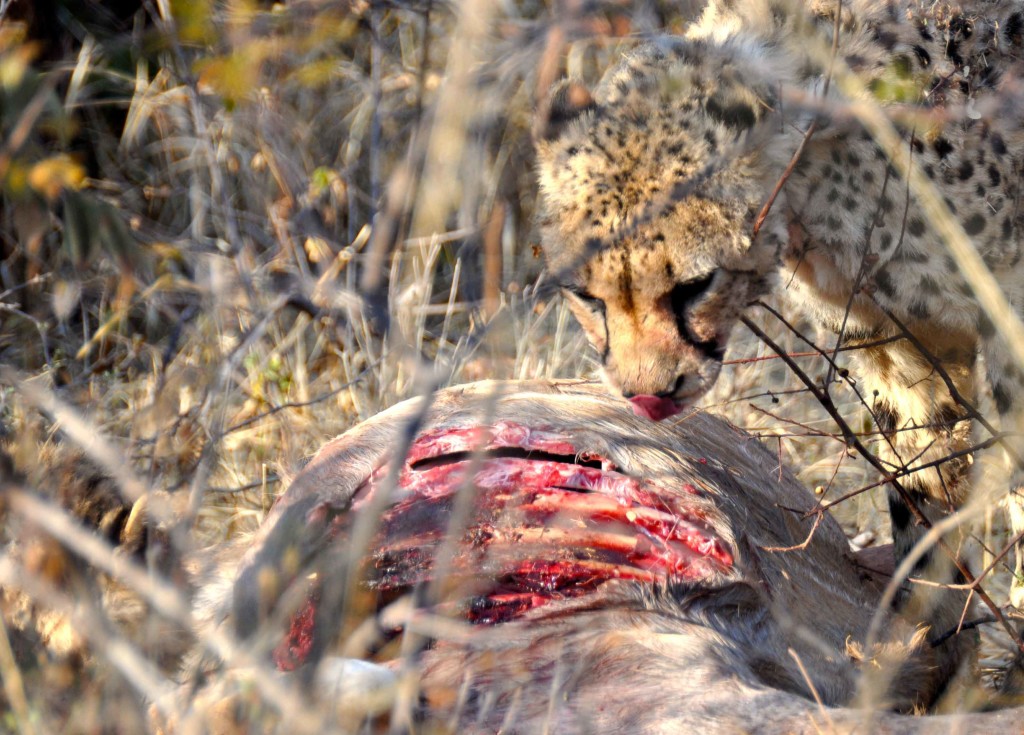

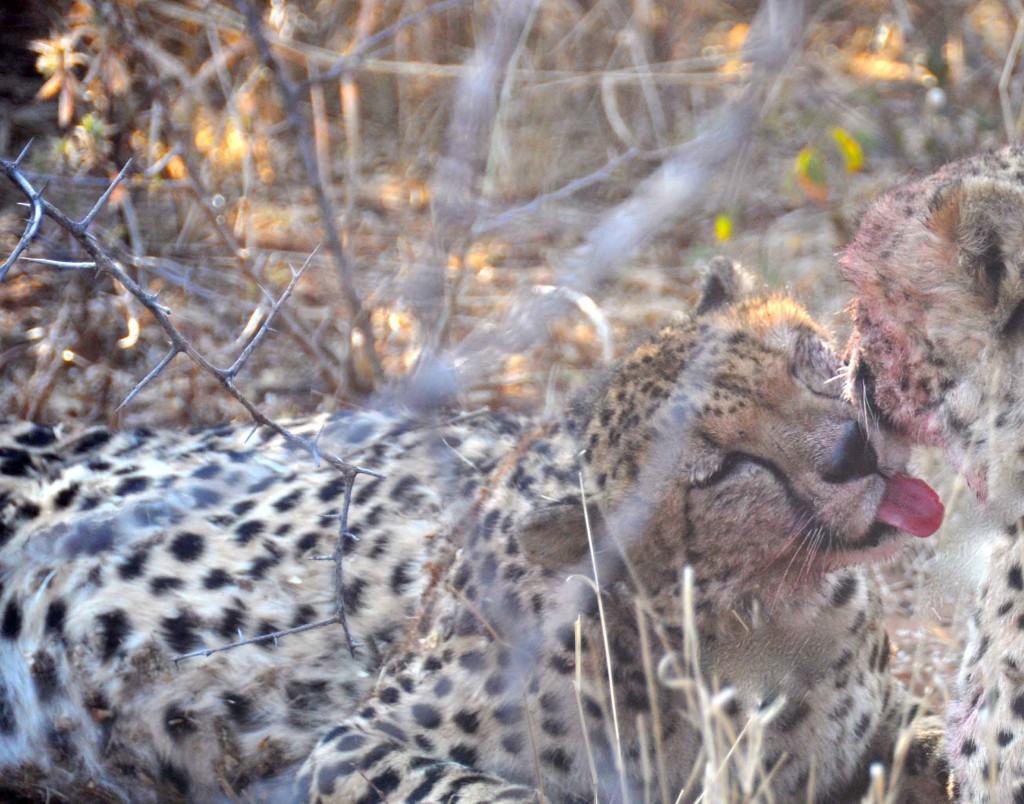 Both leopards and cheetahs can be found at the Okinjima site and are well worth waking up early for. Neither of my girls was especially keen on the morning starts so both were reduced to viewing the animals pre-release in enclosures.
Both leopards and cheetahs can be found at the Okinjima site and are well worth waking up early for. Neither of my girls was especially keen on the morning starts so both were reduced to viewing the animals pre-release in enclosures.
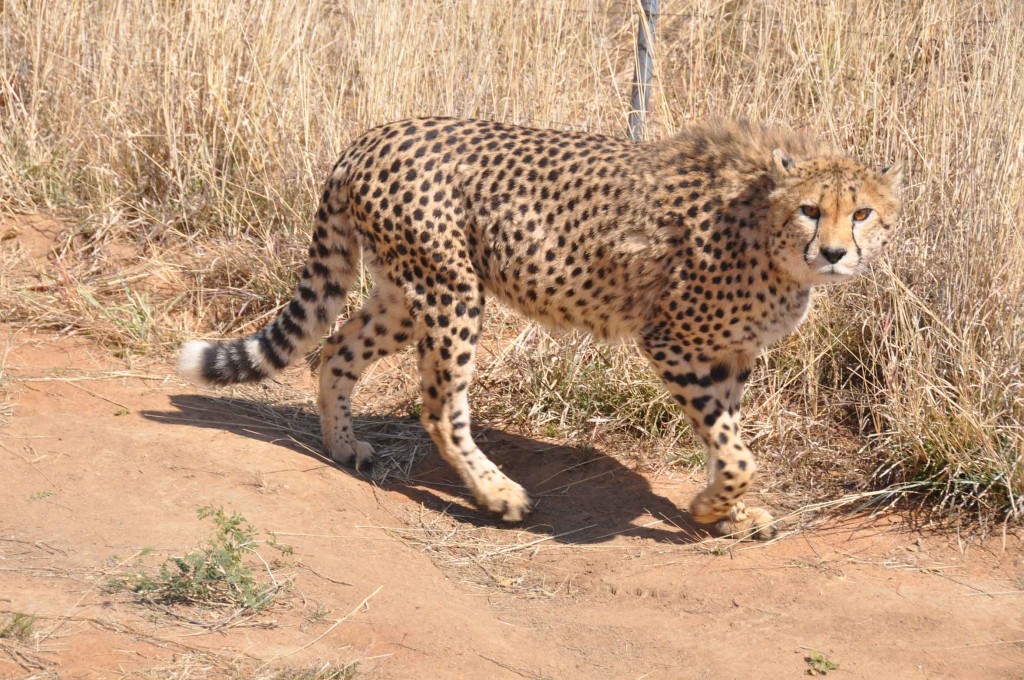
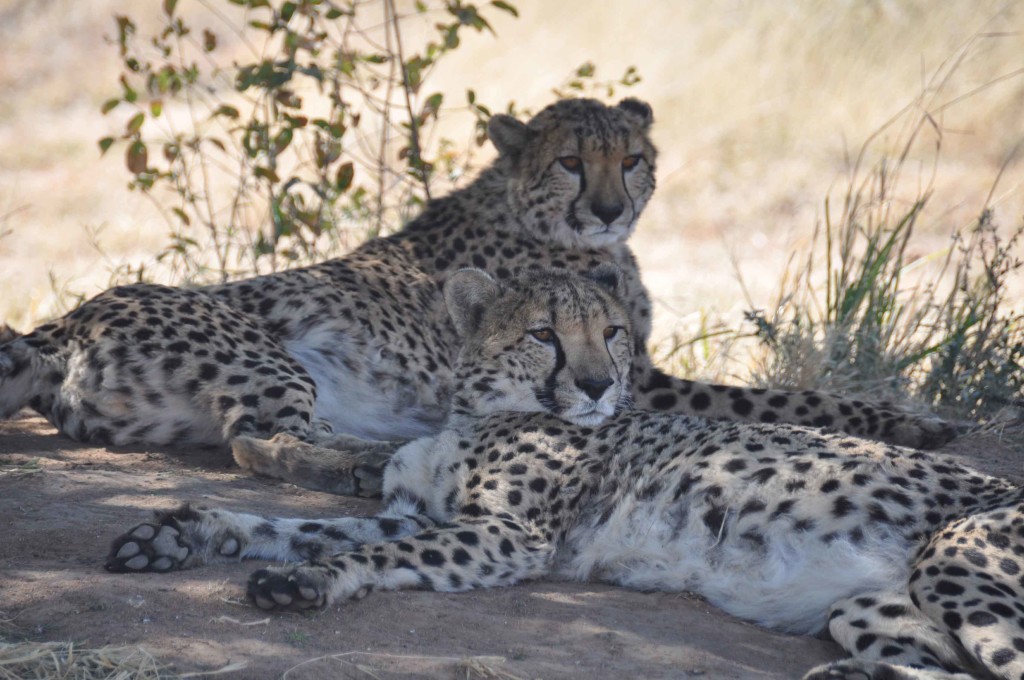 One of the more surprising and enjoyable excursions was to see a porcupine duel, much more ferocious than the cheetahs with their kill seen earlier that day.
One of the more surprising and enjoyable excursions was to see a porcupine duel, much more ferocious than the cheetahs with their kill seen earlier that day.
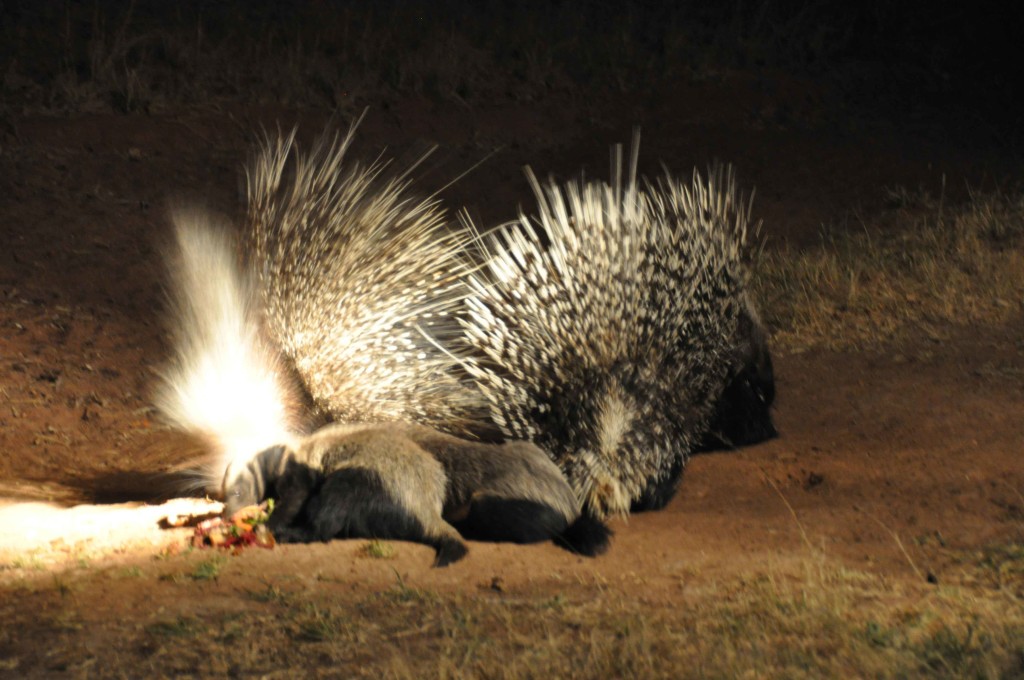
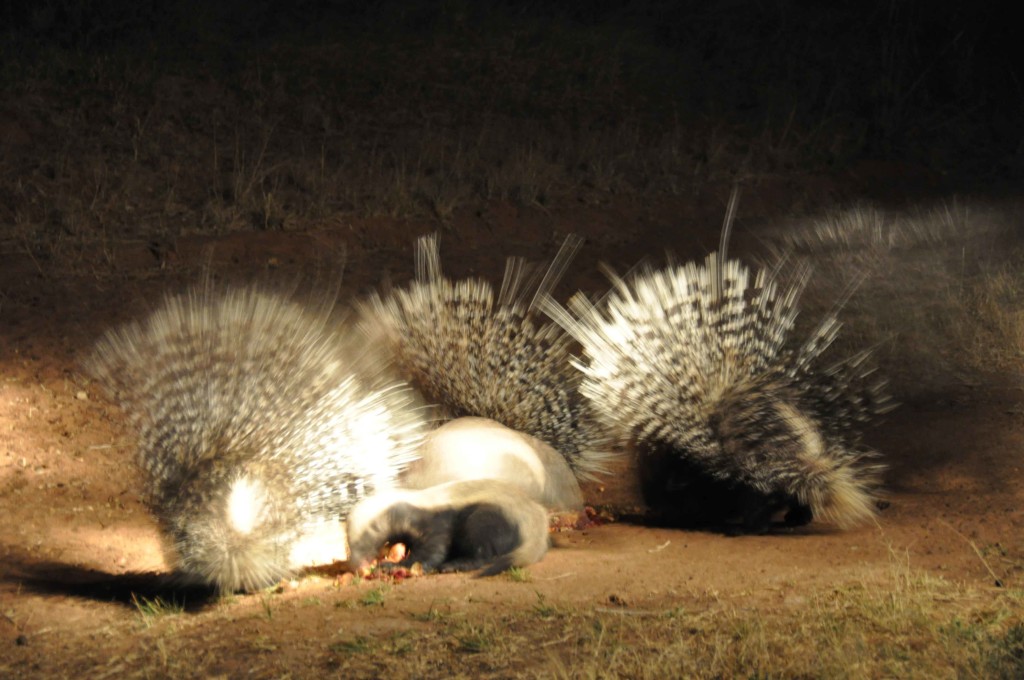 And ofcourse it’s always worthwhile looking out for the birdlife at the water hole.
And ofcourse it’s always worthwhile looking out for the birdlife at the water hole.
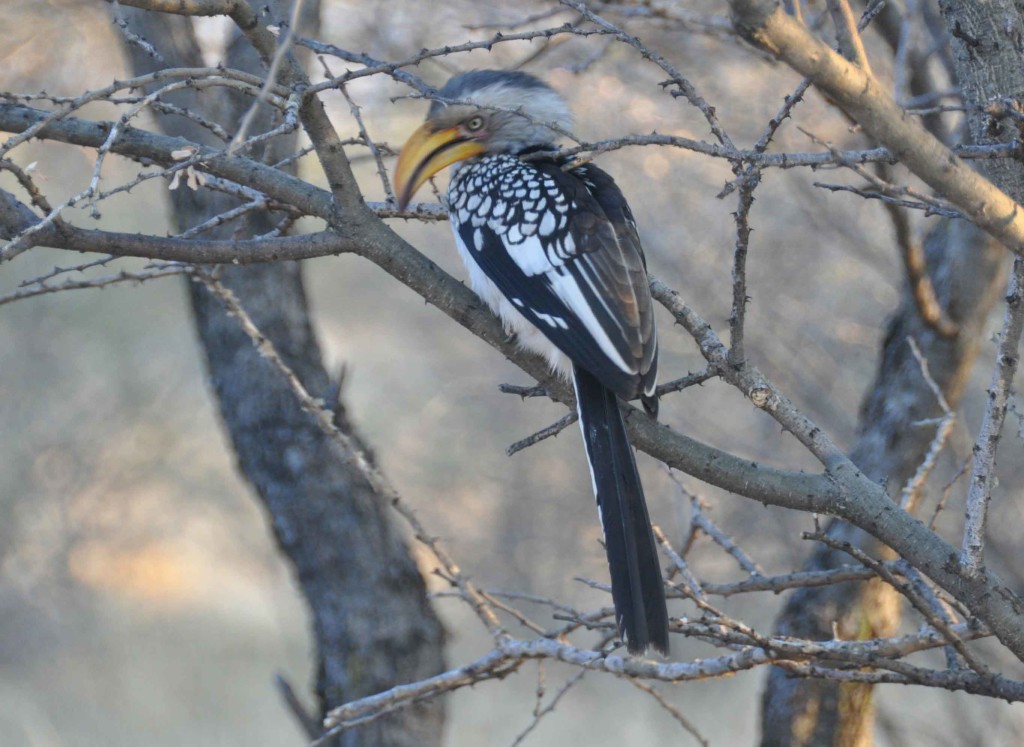
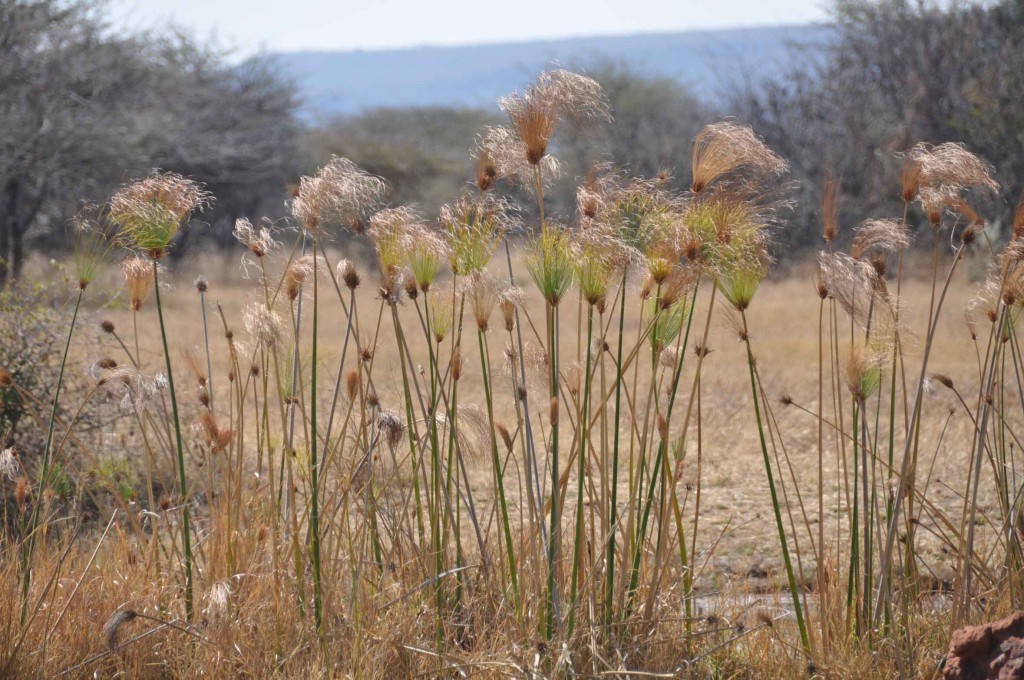
Most of Namibia comprises desert and desert-like plains. To the south, the Namib desert stretches out, before your eyes.
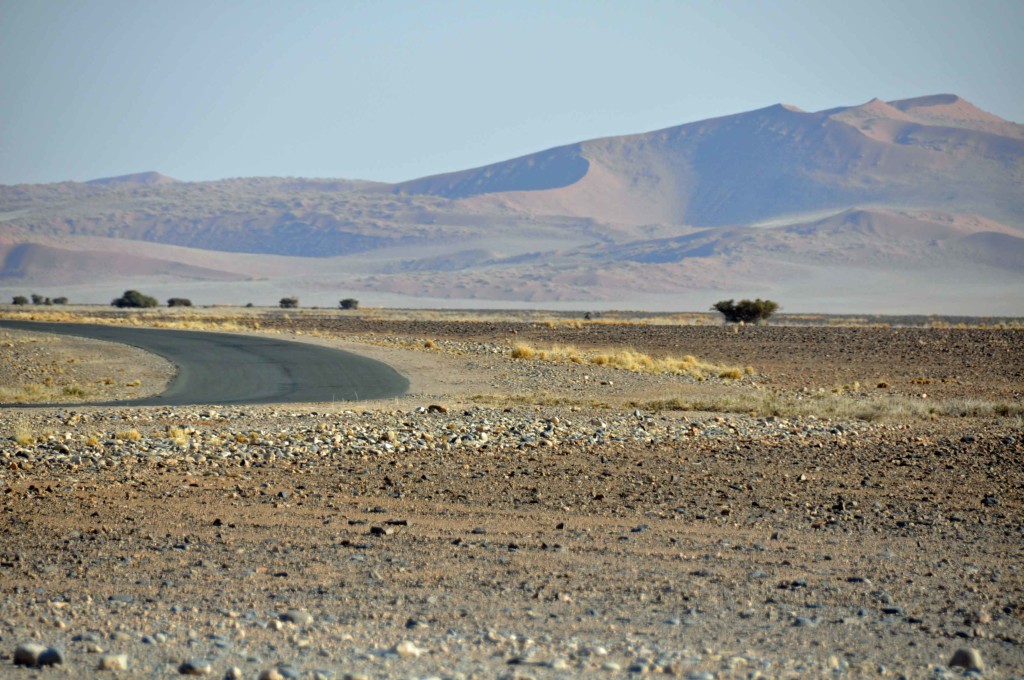
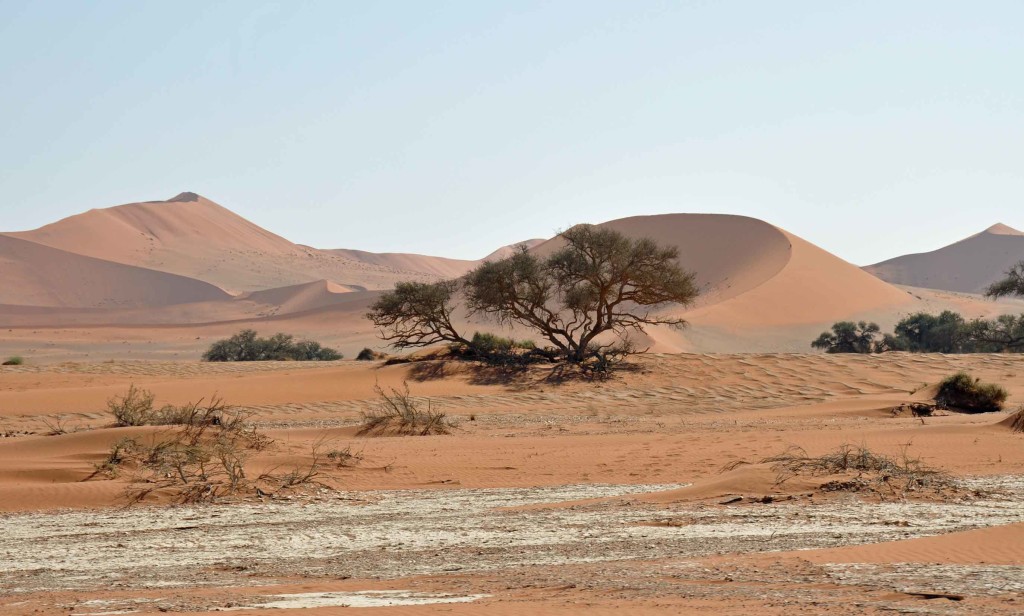
The Namib desert is vast and glorious, stretching down to the ocean. Annual precipitation ranges from 2 mm in the most arid regions to 200 mm at the escarpment, making the Namib the only true desert.
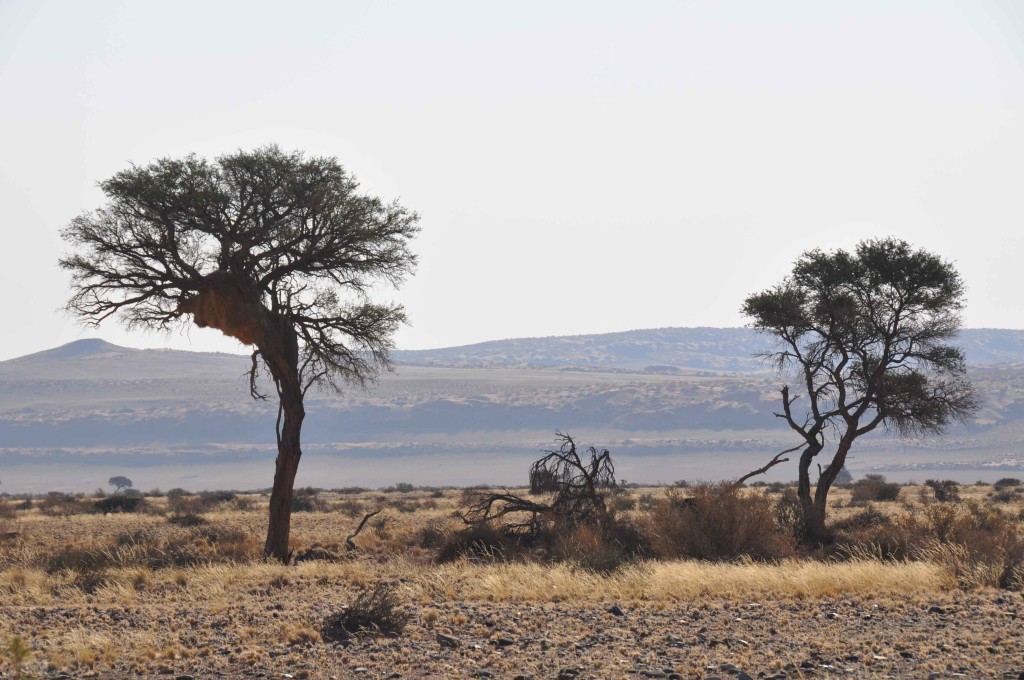
in southern Africa. Much of the precipitation is in the form of fog that rolls in from the ocean to the west. Mist in the morning or at least a general haze, made for grey and a very delicate pink colour.
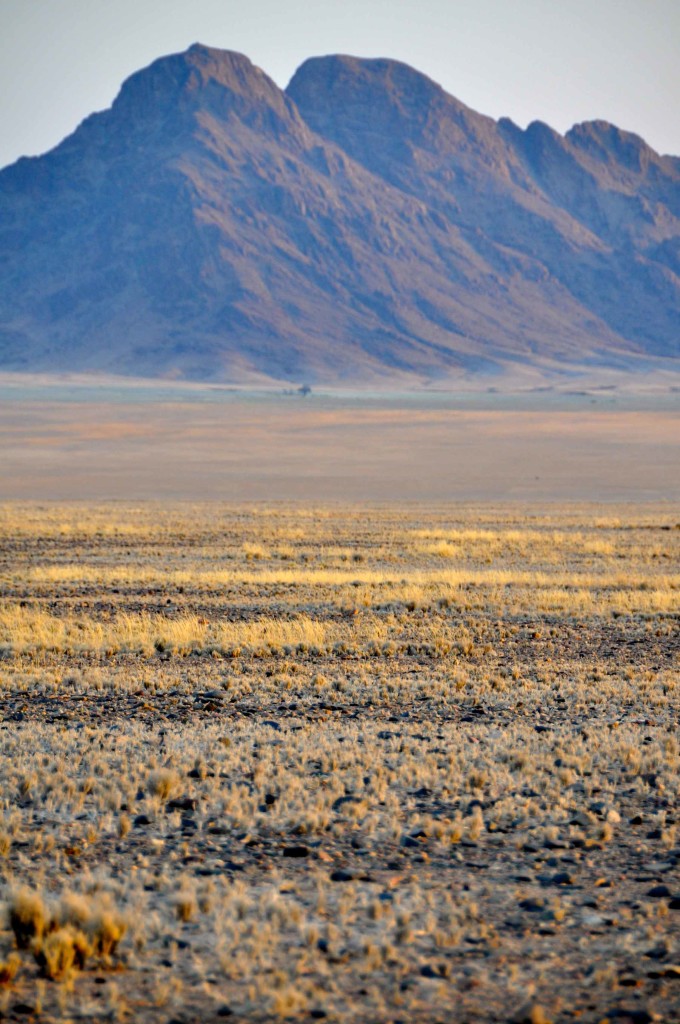
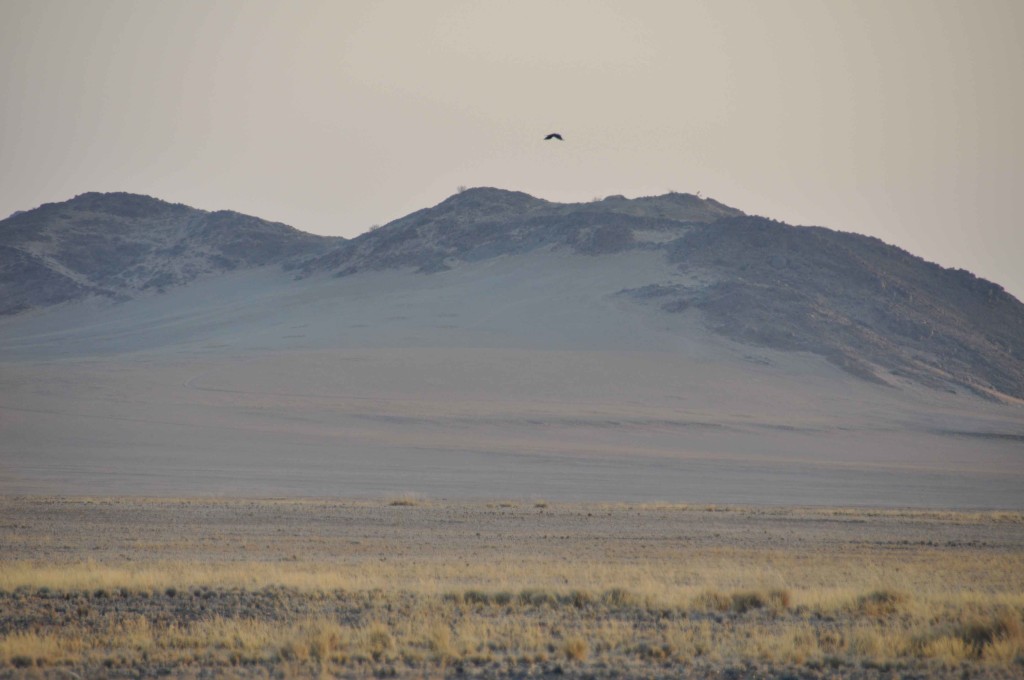
The sand dunes, some of which are 300 metres (980 ft) high and span 32 kilometres (20 mi) long, are the second largest in the world
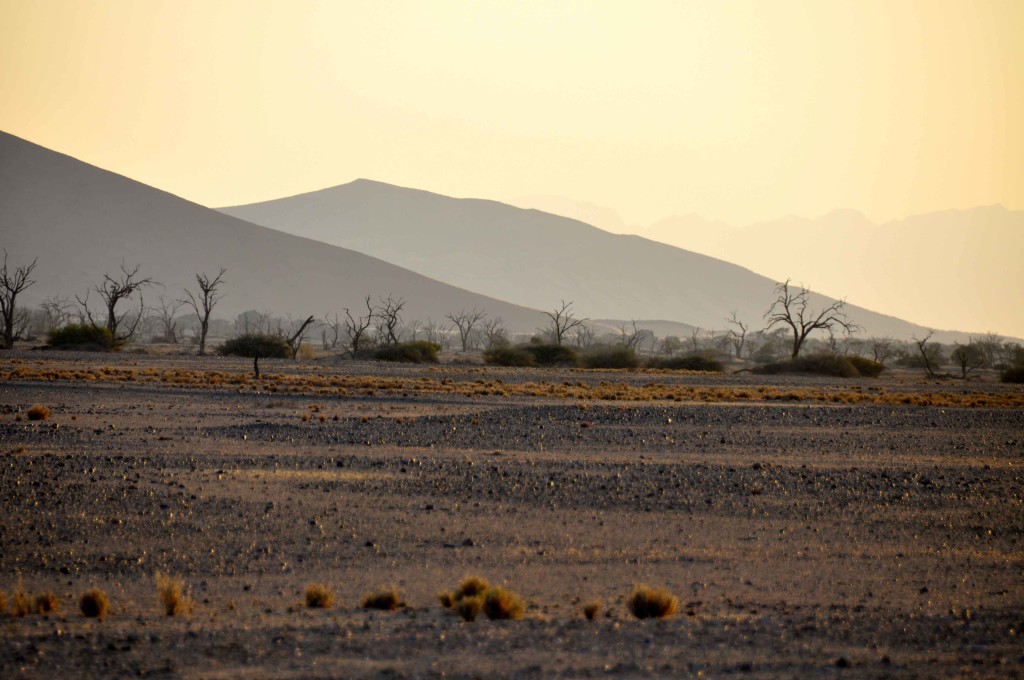
This dune sea has crests of the dunes aligned in a northwest-southeast orientation. The dunes act as obstacles, causing the winds to be deflected significantly to the right, in effect reorienting the southerly wind to become a southwesterly wind.
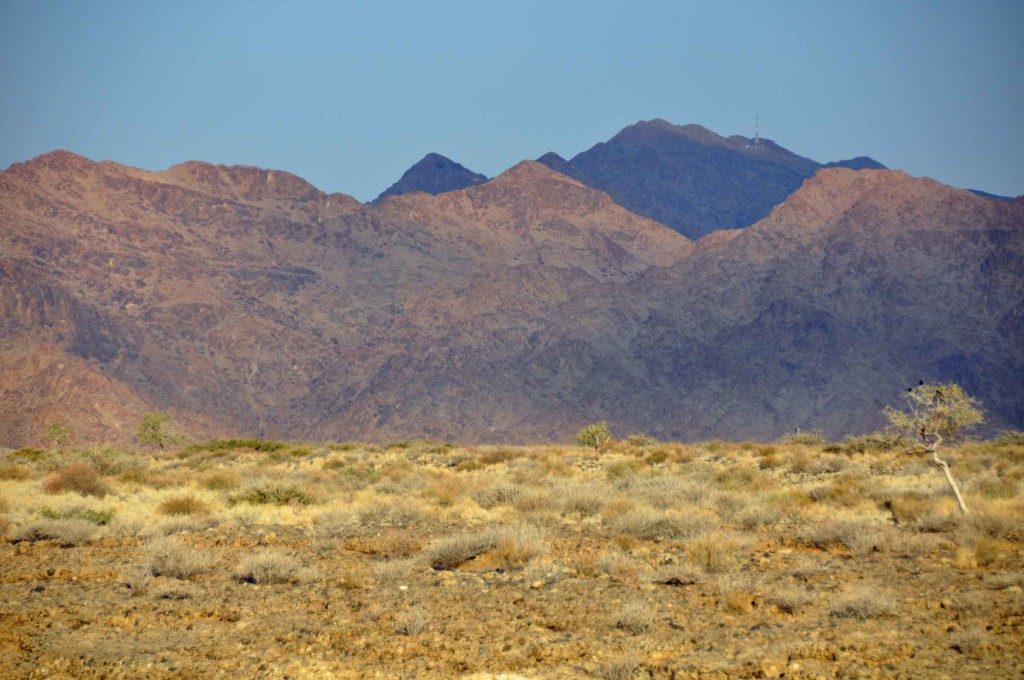
During the day the changes in colours were difficult to believe, starting almost dull grey in the haze, brightening through the palest of pinks, through orange to an almost deep red of an evening.
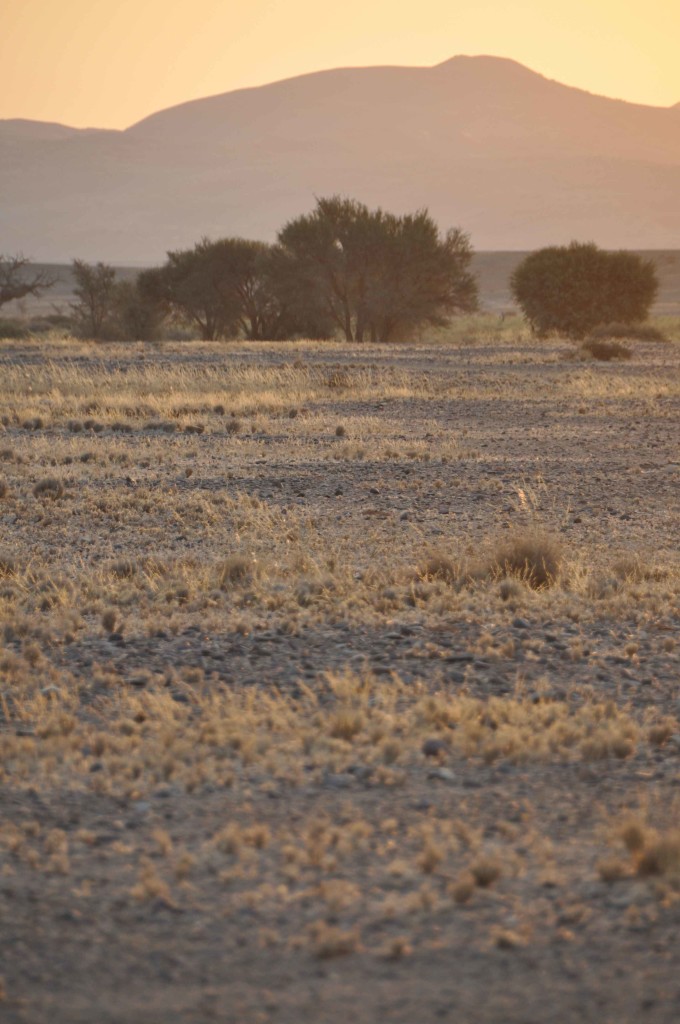
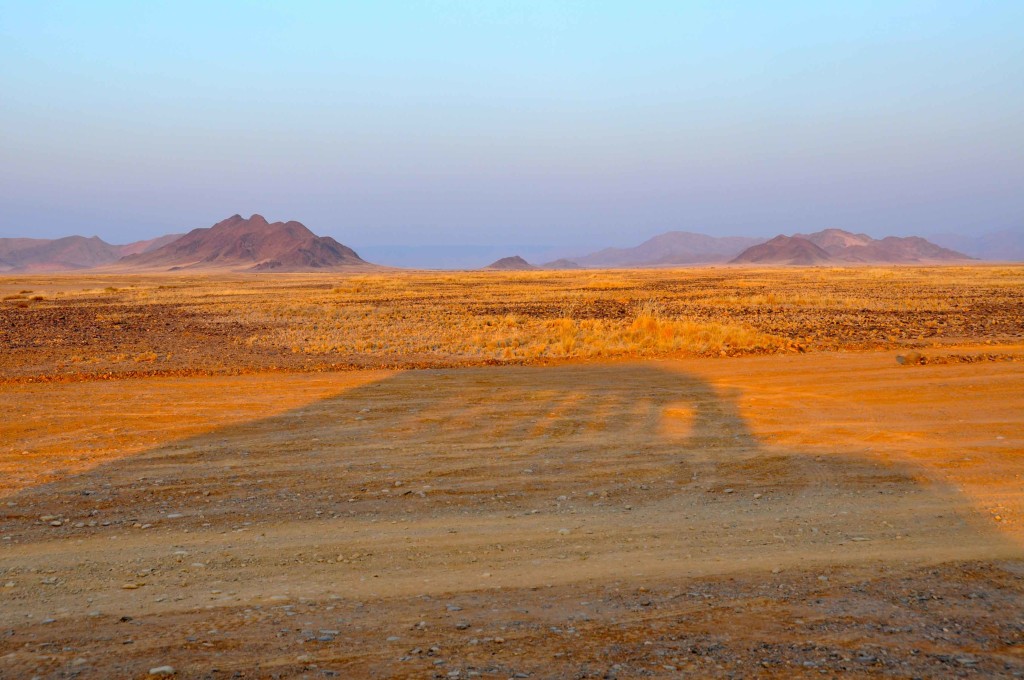
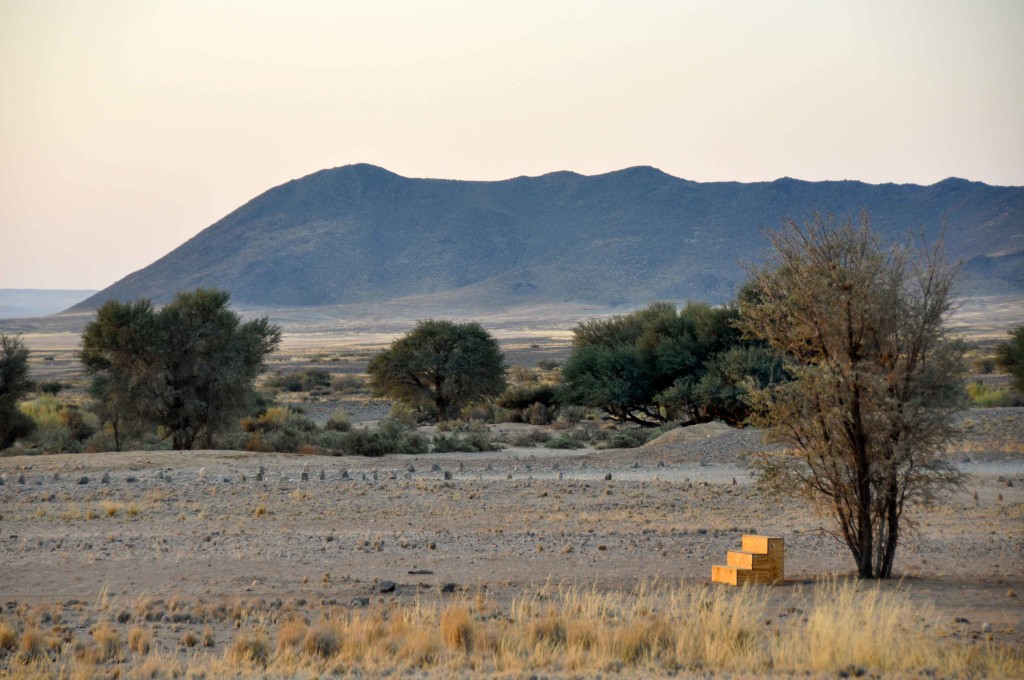
And ofcourse, like deserts and seascapes everywhere, the sky was huge, the stars bright and very clear.
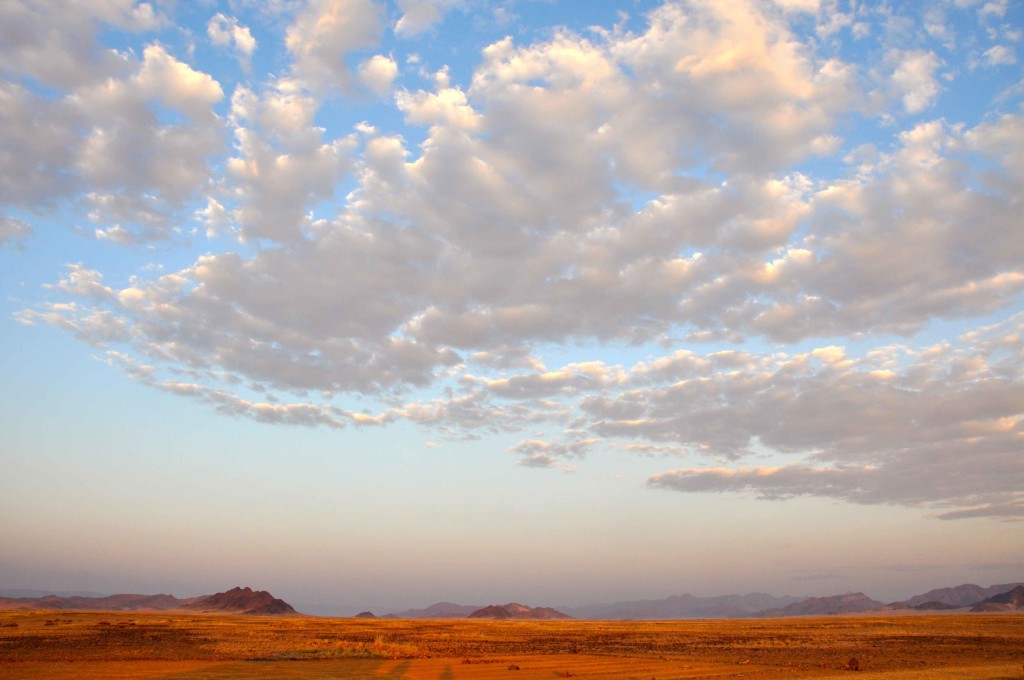
The dunes are amngst the largest in the world and probably the tallest. It’s difficult to capture the size in a photograph. Occasionally the prescence of trees or people tiny in the scale of things make it more obvious.

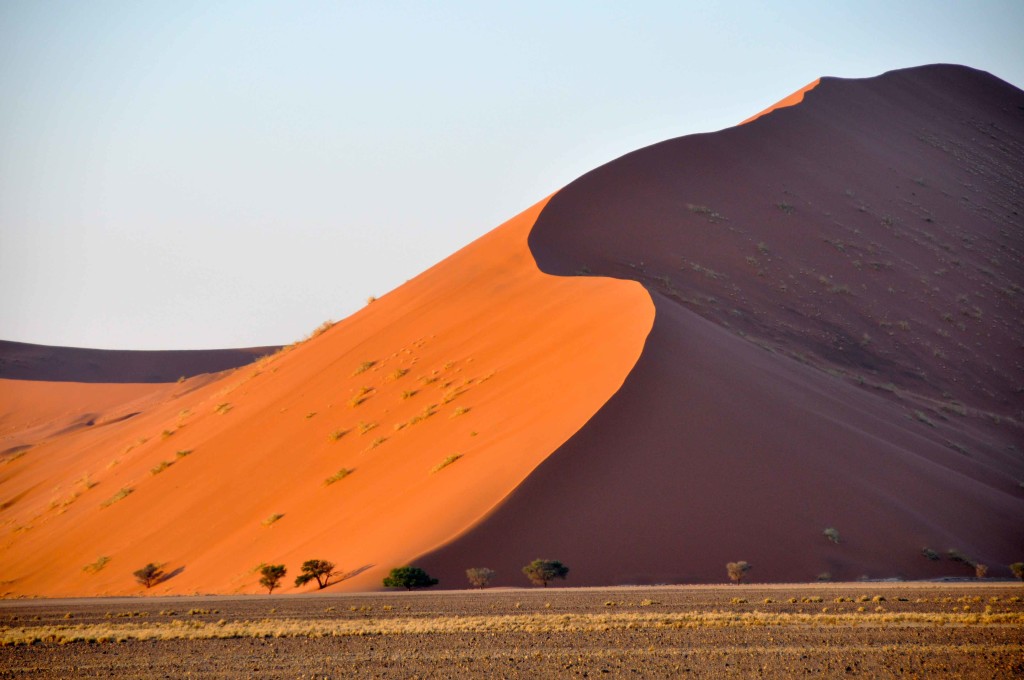
The shapes are almost abstract mathematics and very beautiful somehow in their sweep and grandeur.
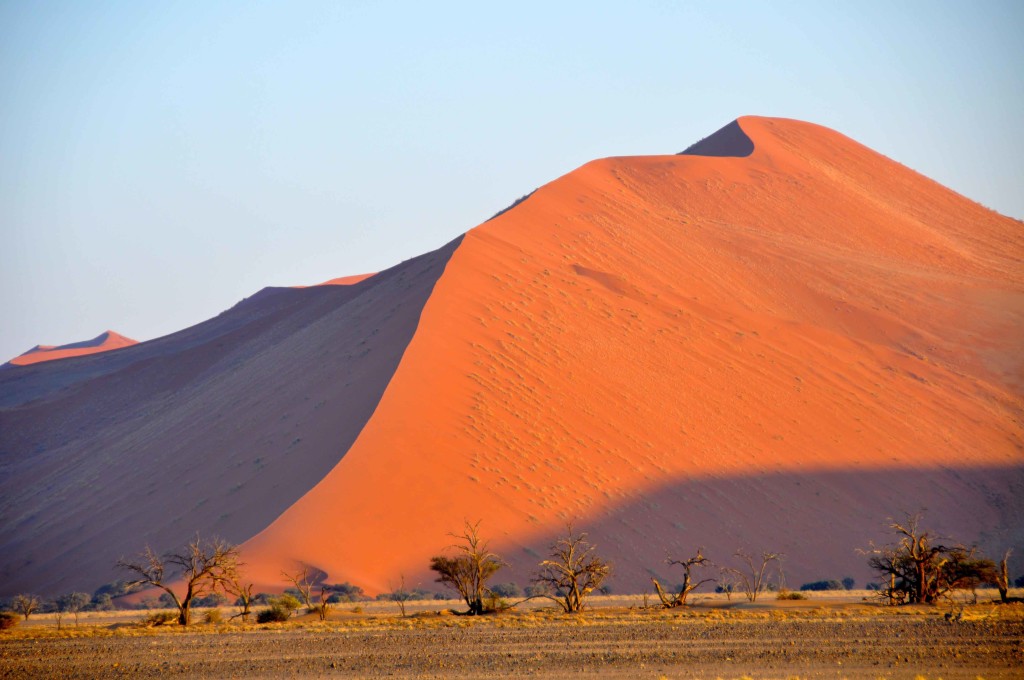
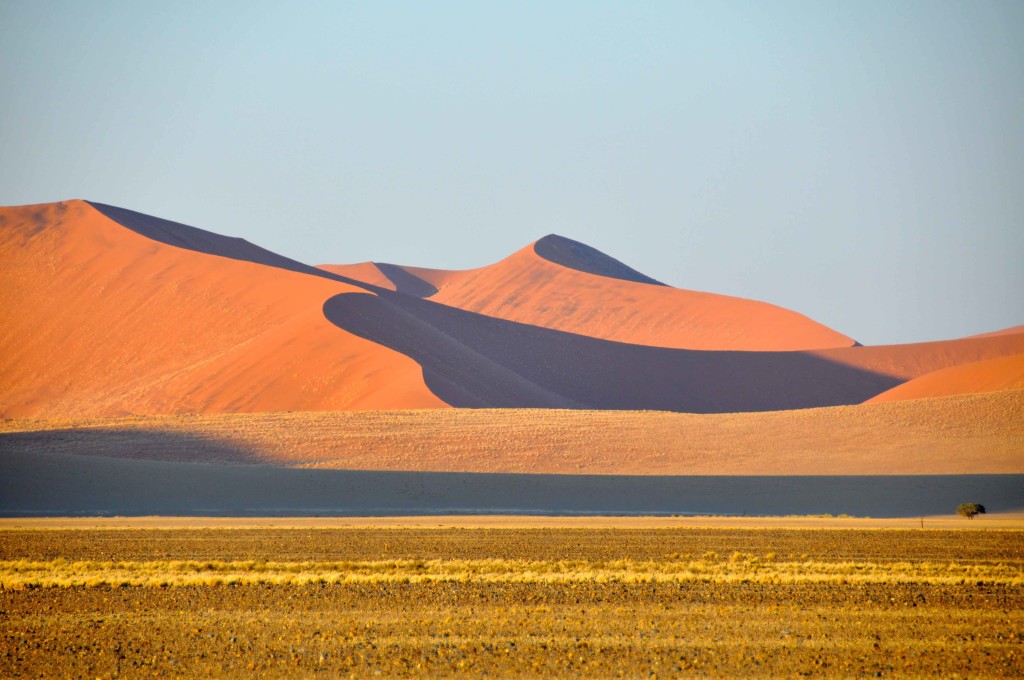

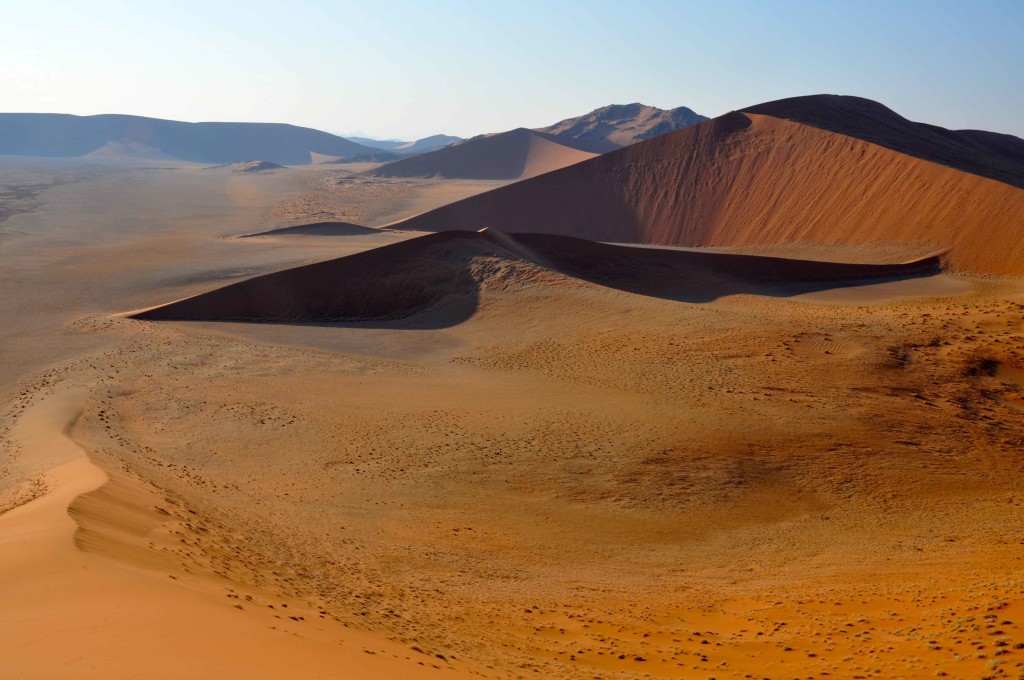
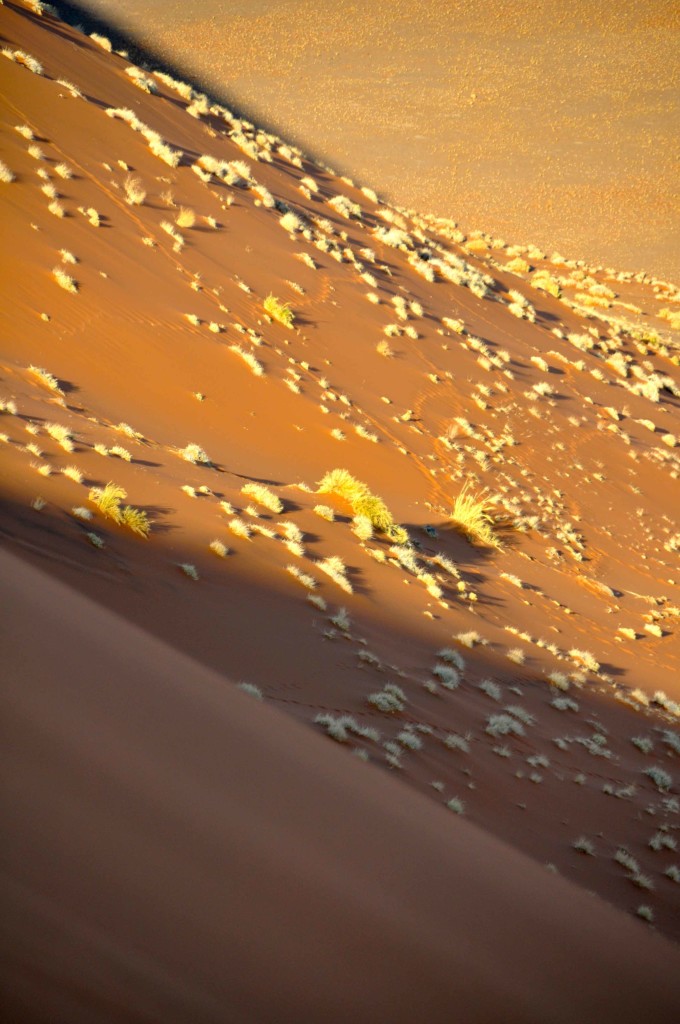
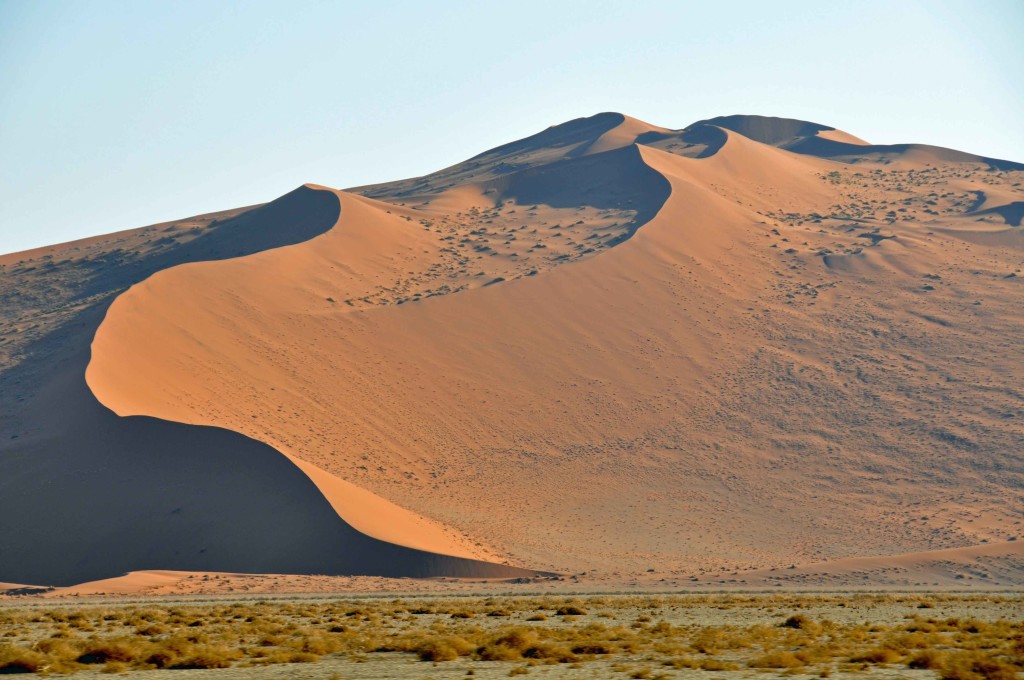
It is difficult to imagine anything surviving in such harsh conditions yet both plant life and animals can be found. Dead Vlei in a pan containing trees, that died when the dunes grew and the local climate was changed as a result.

The orignial clay pan was formed after rainfall, when the Tsauchab River flooded, creating temporary shallow pools where the abundance of water allowed camel thorn trees to grow. When the climate changed, drought hit the area, and sand dunes encroached on the pan, which blocked the river from the area.
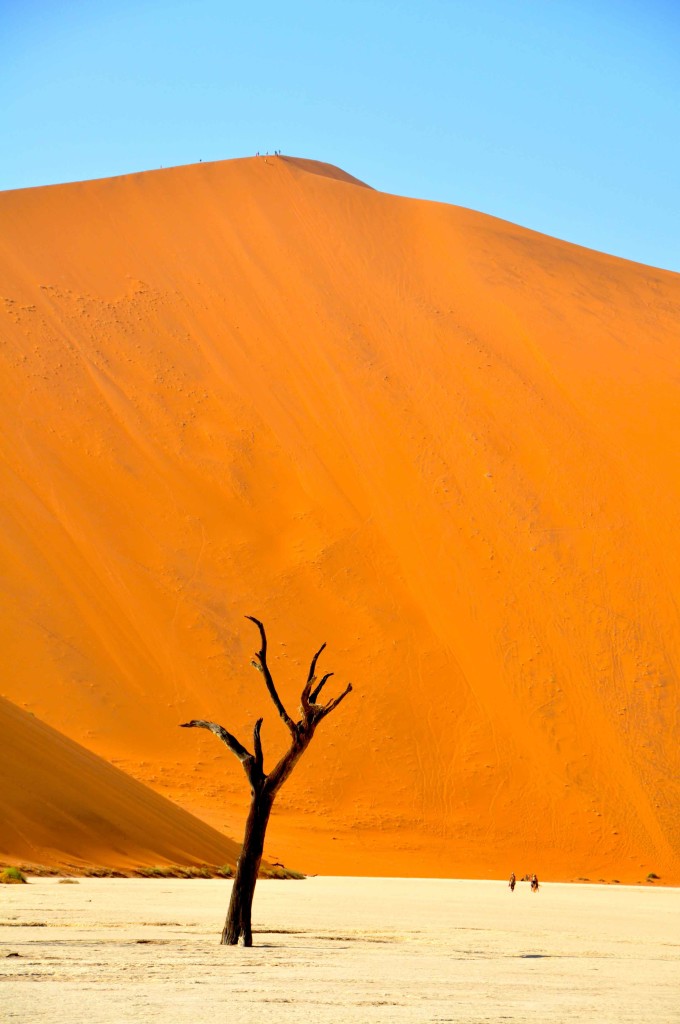
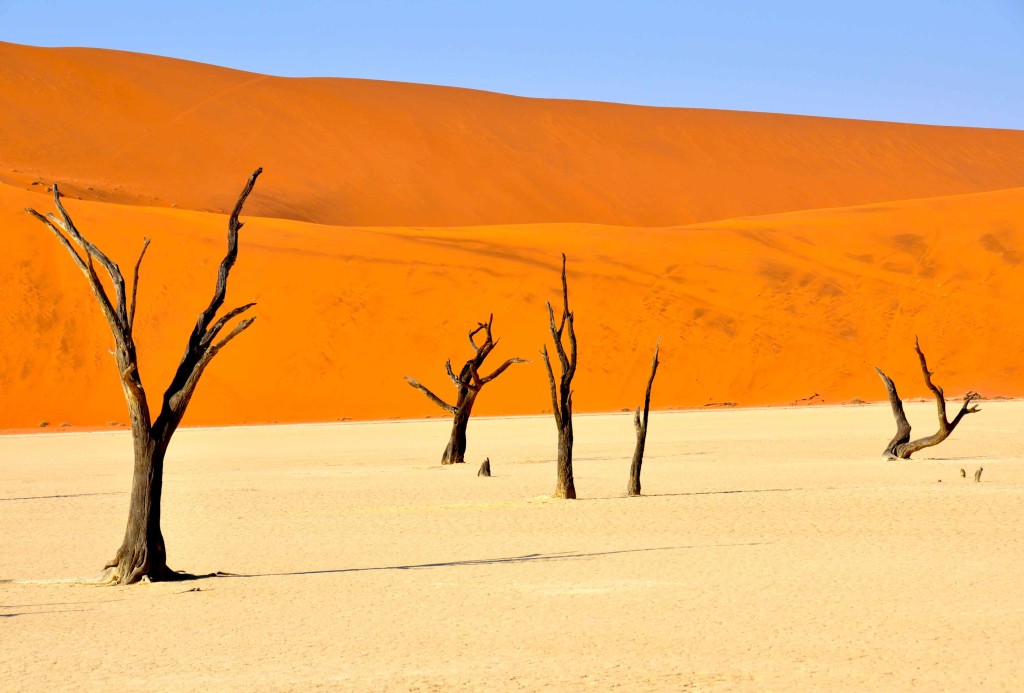
The trees died, without water to survive. There are some species of plants remaining, such as salsola adapted to surviving off the morning mist and very rare rainfall.
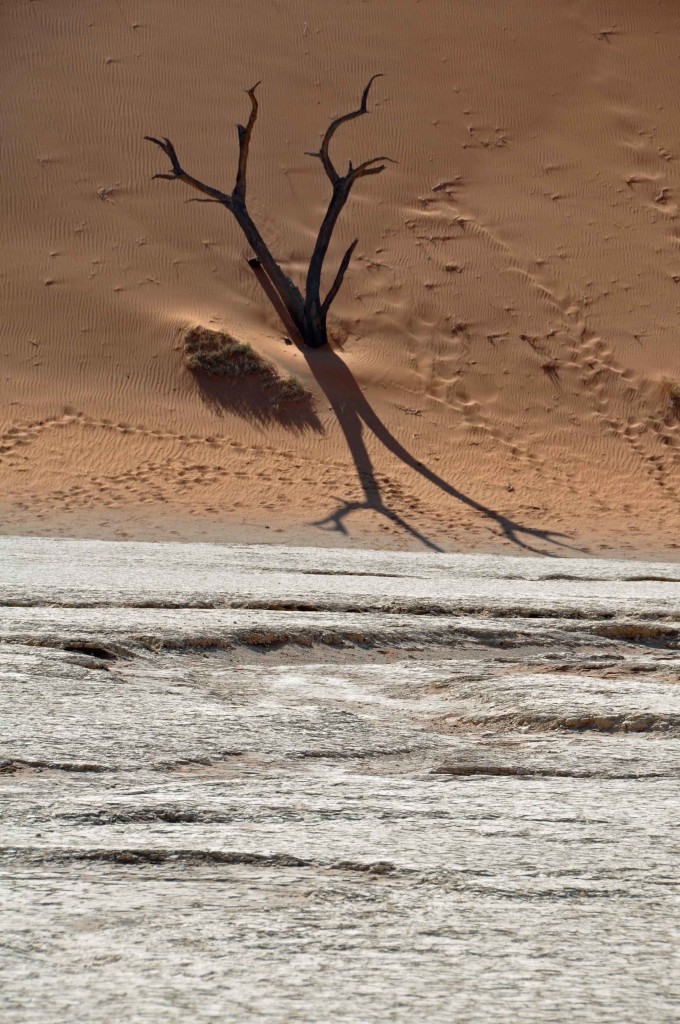
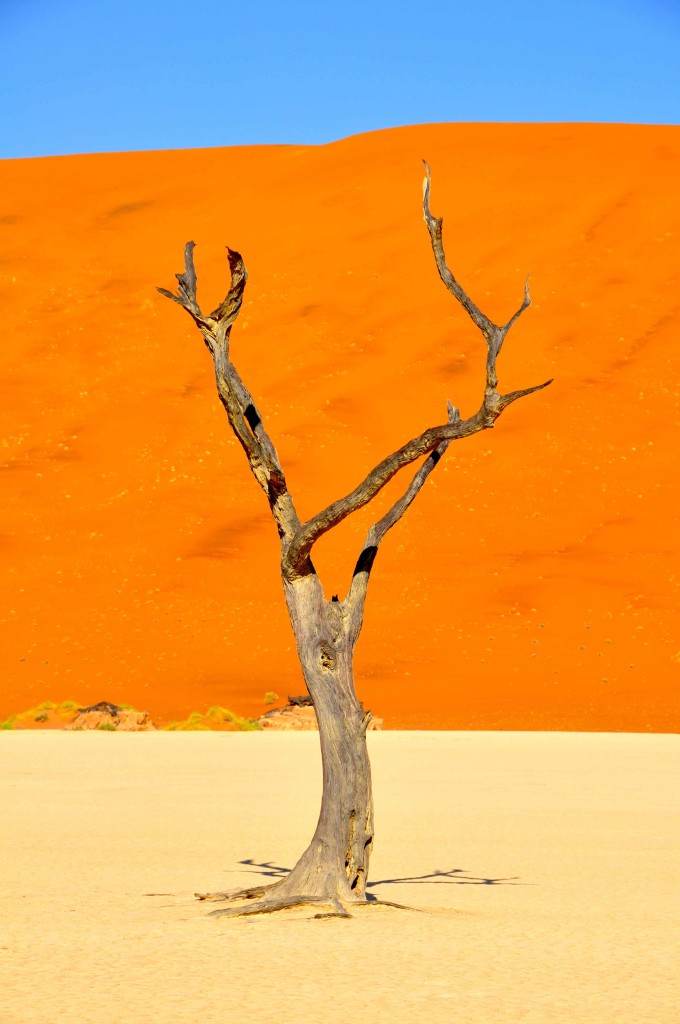
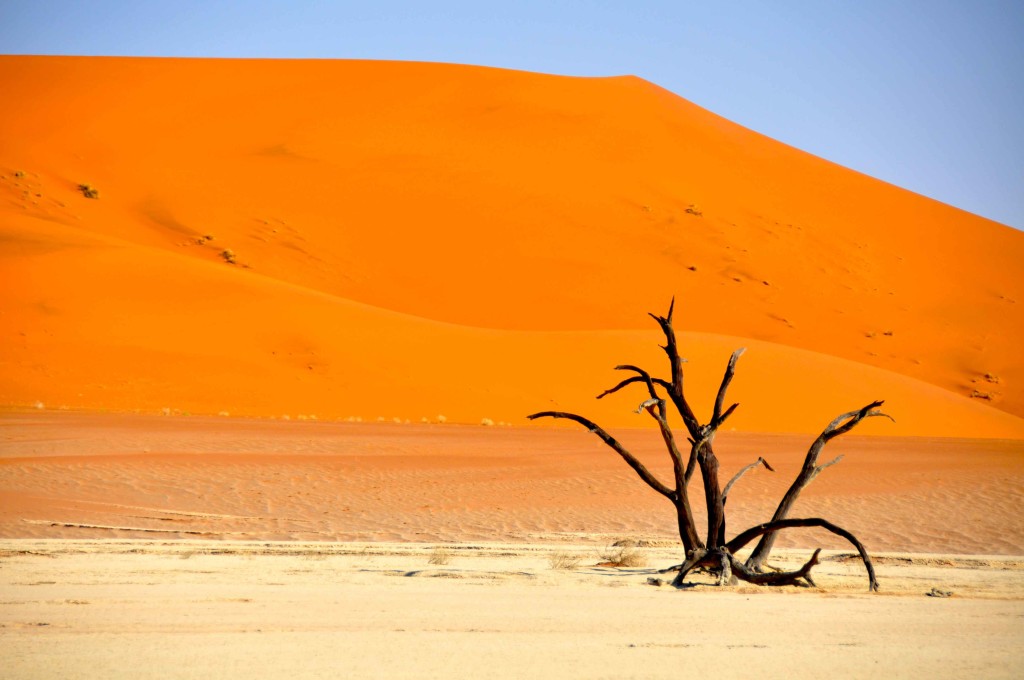
The remaining skeletons of the trees, which are believed to have died 600-700 years ago (AD 1340- 1430), are now black because the intense sun has scorched them. The wood cannot decompose because it is so dry.
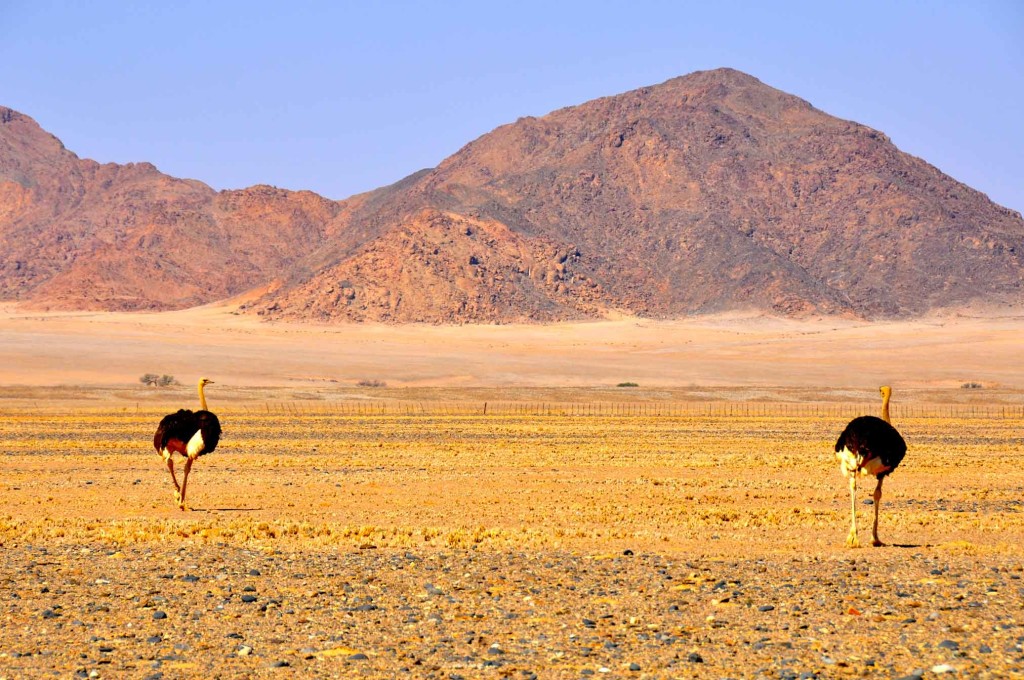
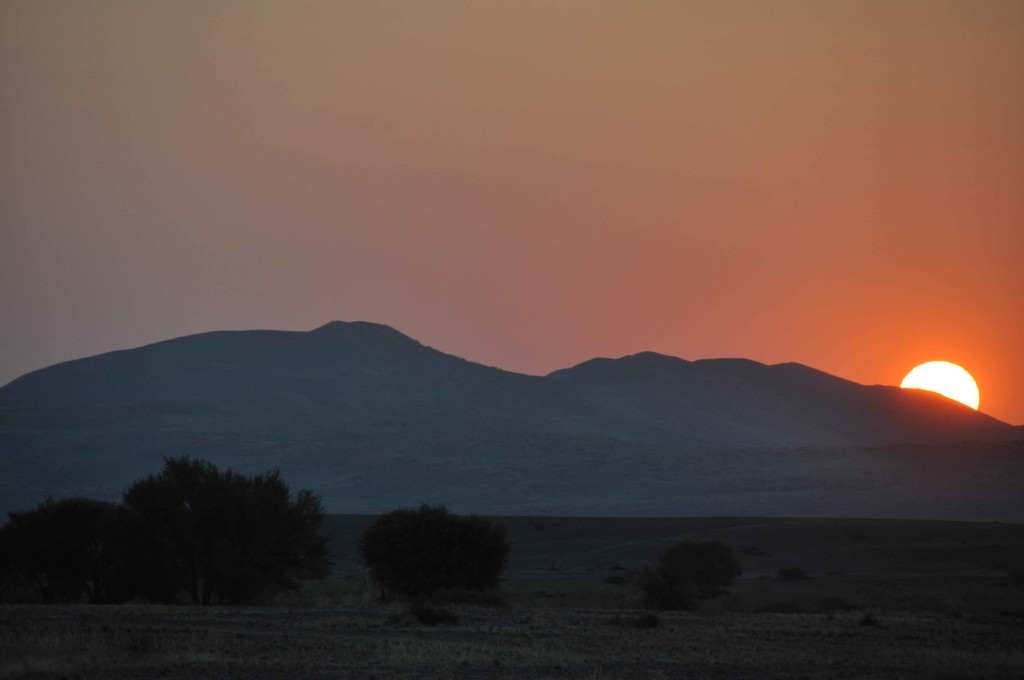
With an overall area of 49,768 km2 the Namib-Naukluft is the largest game park in Africa and the fourth largest in the world.
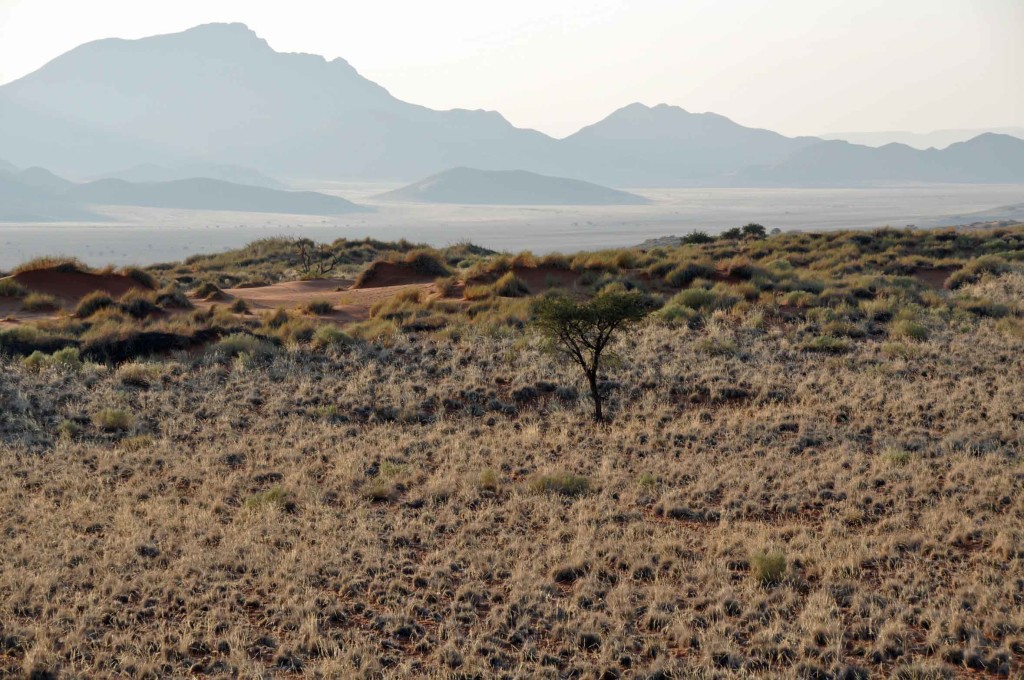
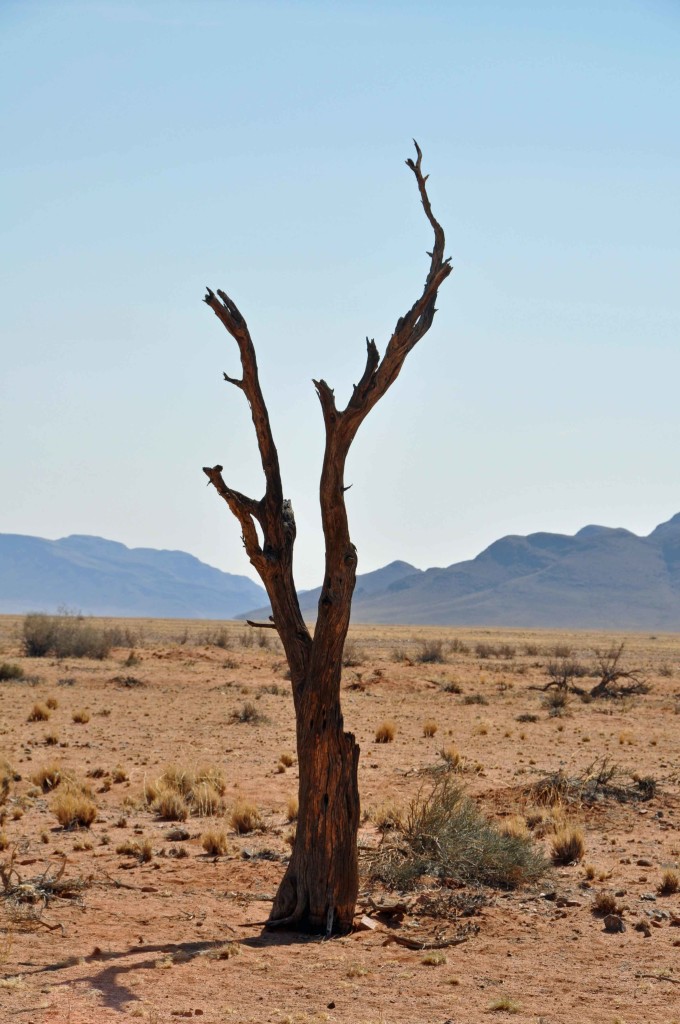
The NamibRand Nature Reserve is a private nature reserve established to help protect and conserve the unique ecology and wildlife of the south-west Namib Desert.
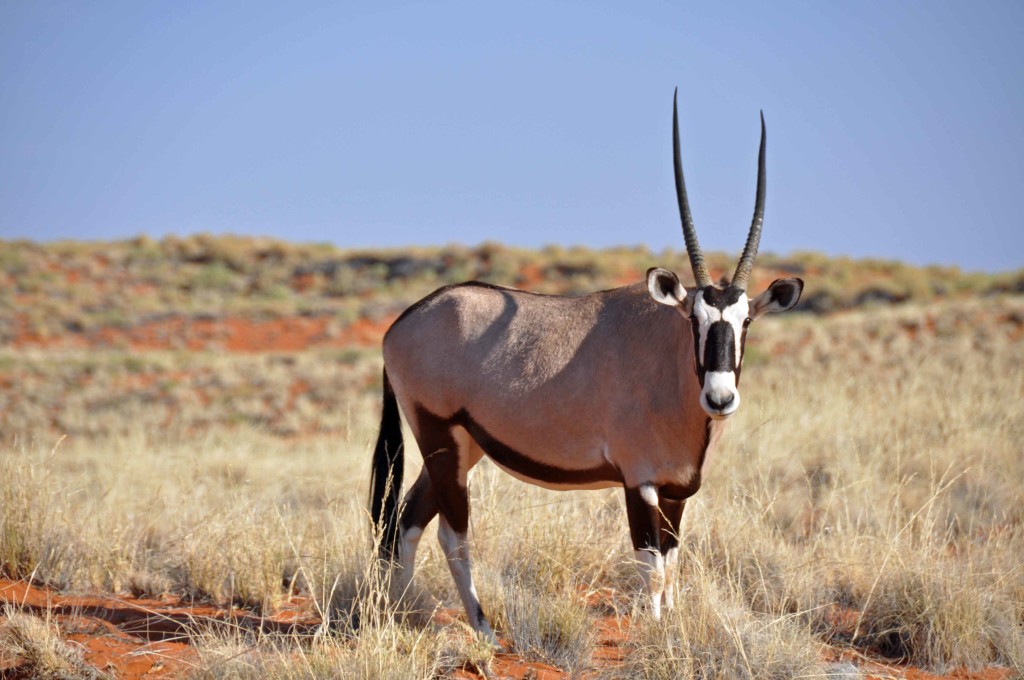
It is probably the largest private nature reserve in Southern Africa, extending over an area of 202,200 ha, sharing a 100km border with the Namib-Naukluft National Park in the west and is bordered in the east by the imposing Nubib Mountains.
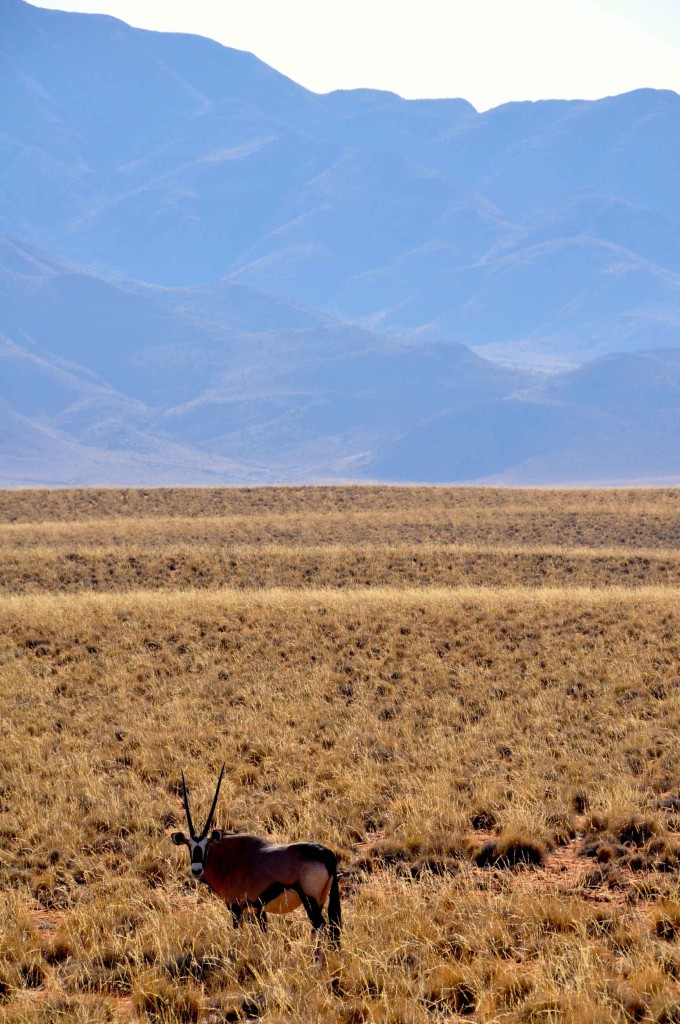
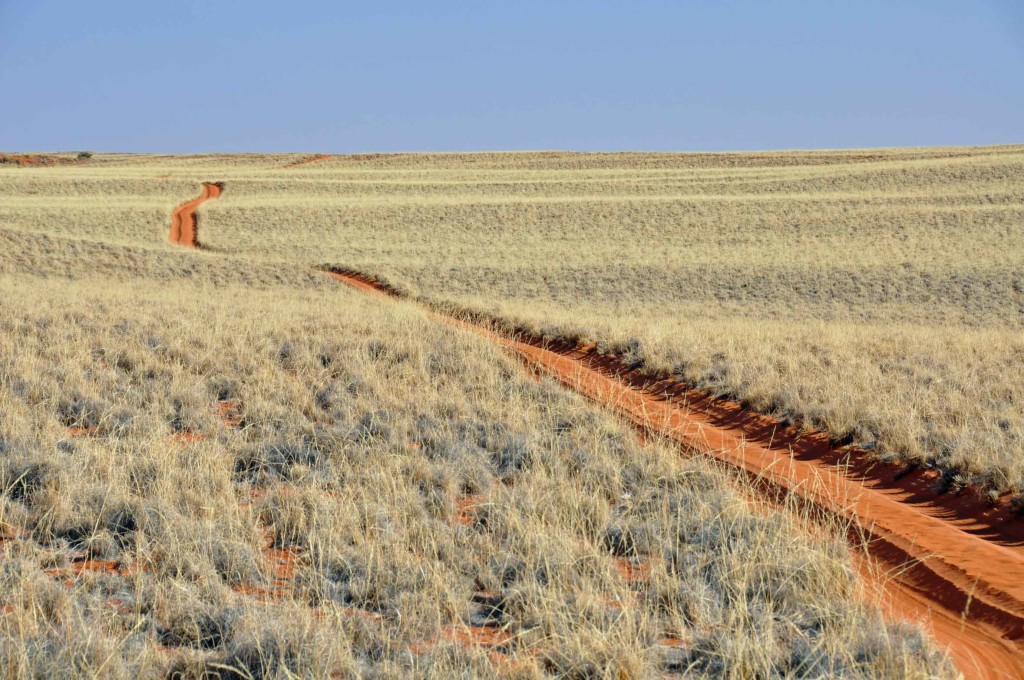
Virtually all facets of the Namib Desert are represented on the Reserve – sand and gravel plains and stretches of savanna alternate with mountain ranges and vegetated dune belts.
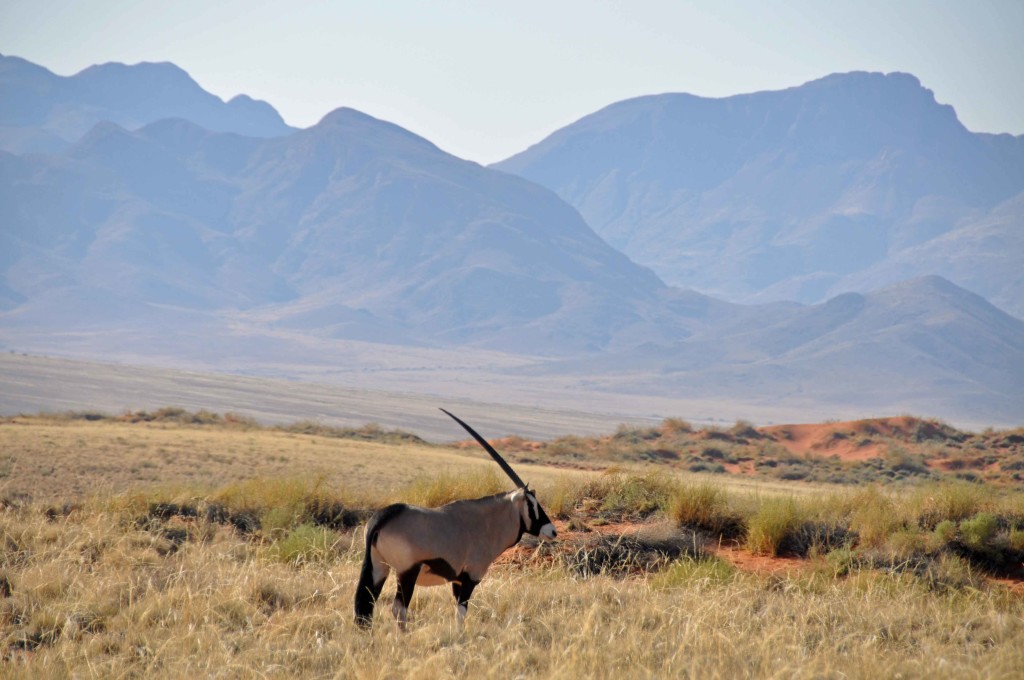
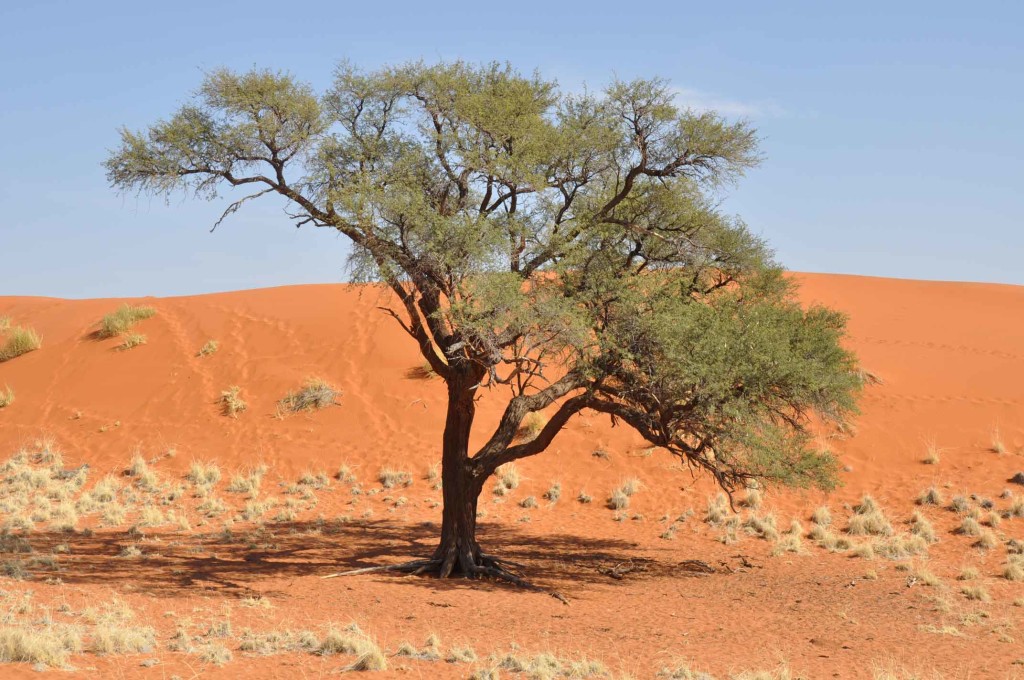
Here, the dunes are static rather than the moving mountainous waves near Sossusvlei.
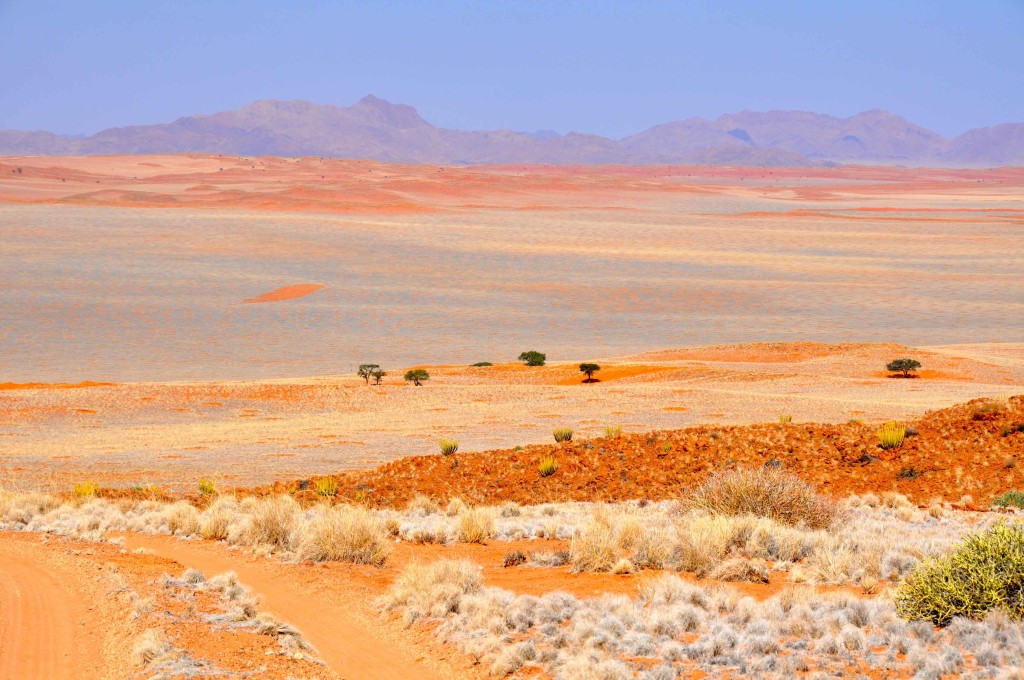
There is a surprising amount of wildlife, ranging from herds of desert zebra, ibex and of course the predators, jackals, cheetah etc.
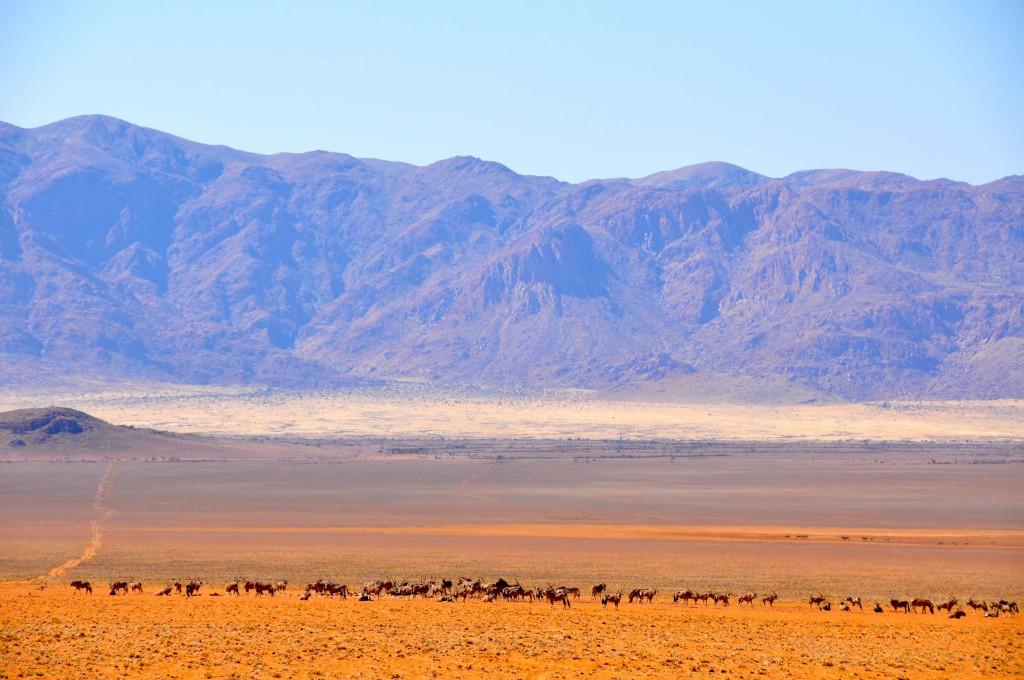
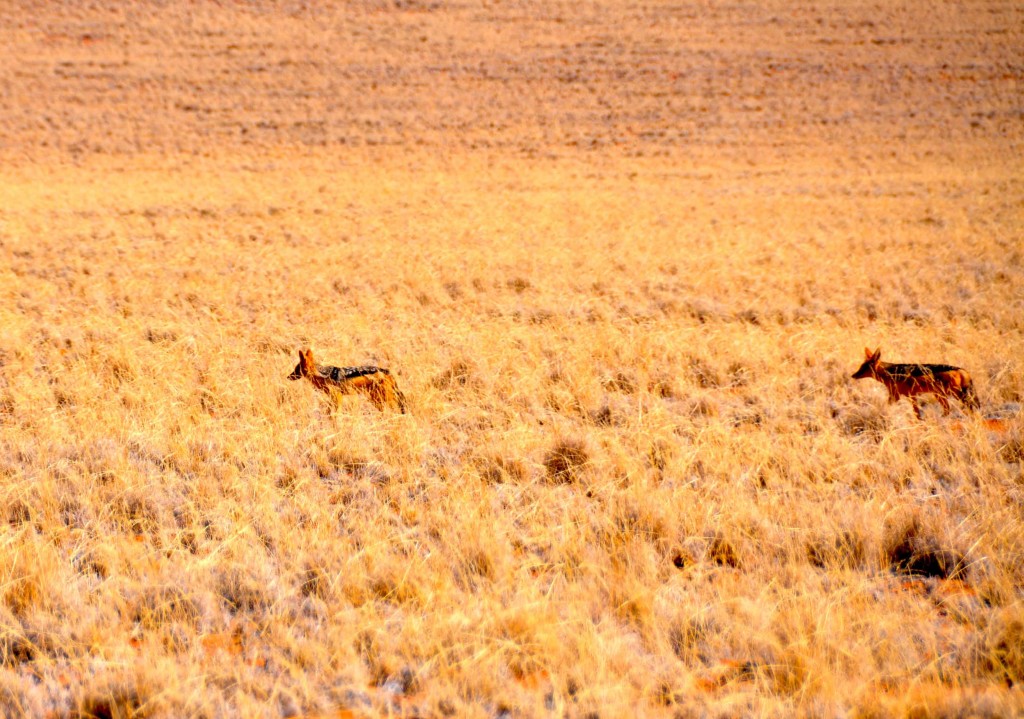
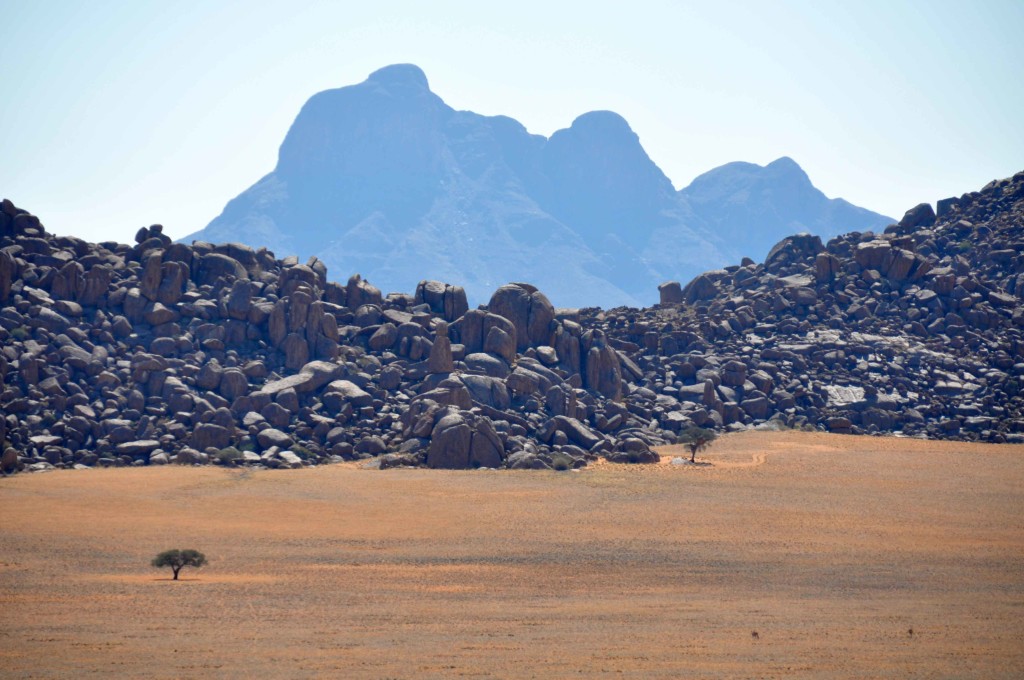
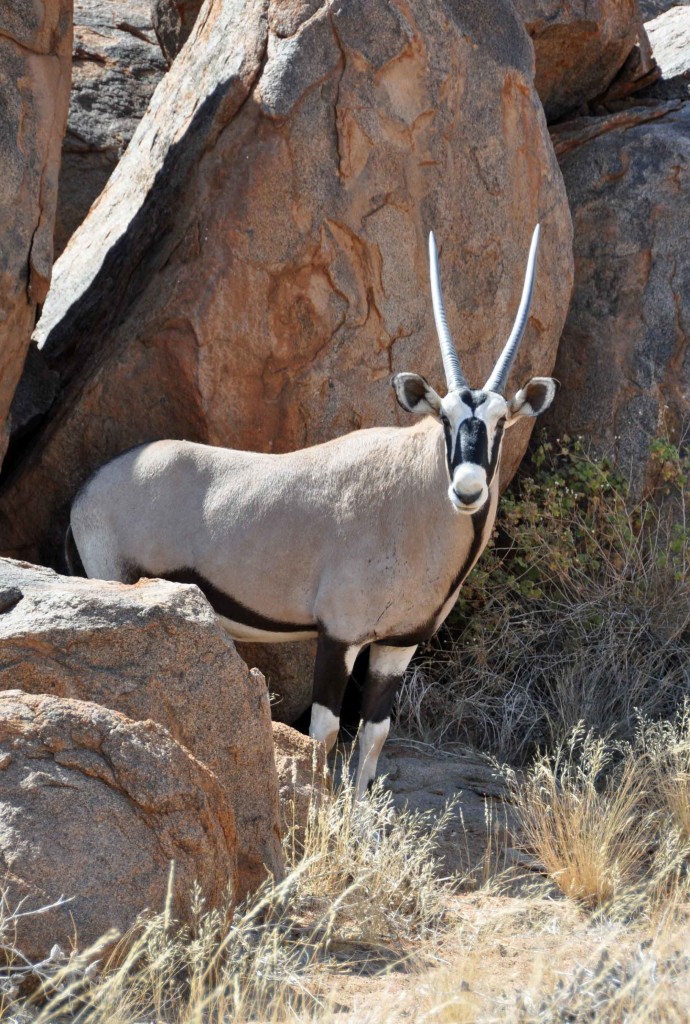
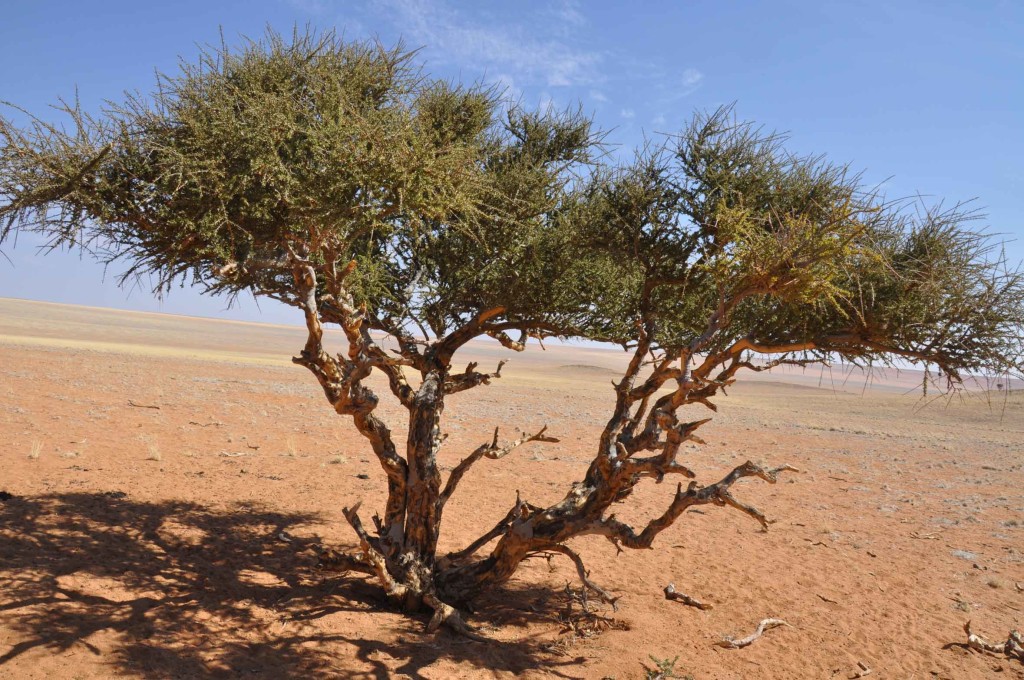
It is possibly the most beautiful place that I have ever been, and I’ve travelled a lot.

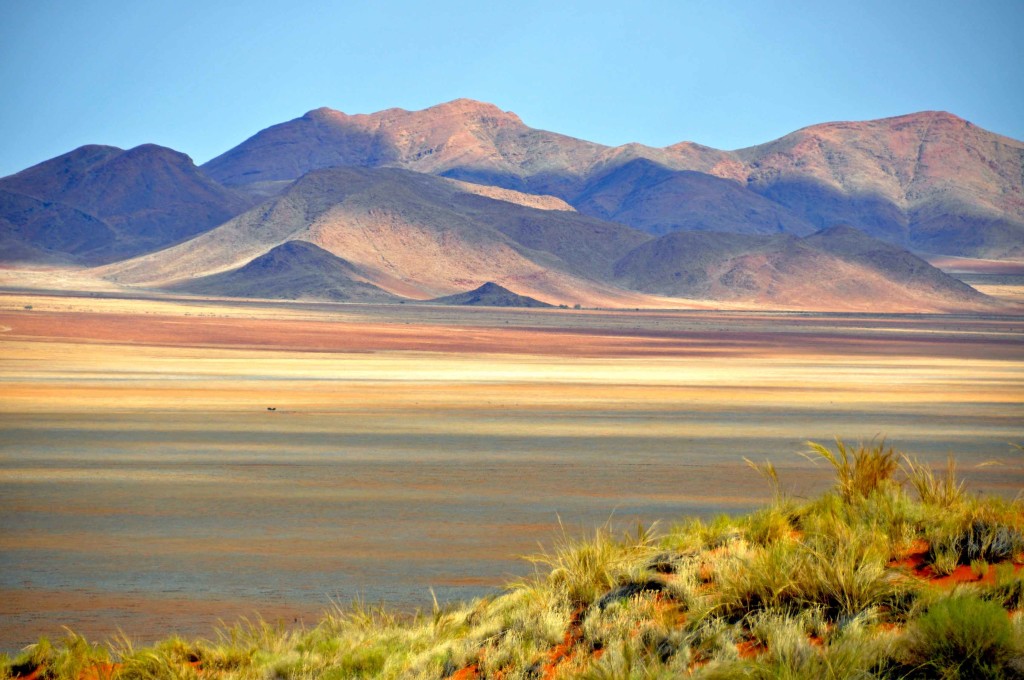
Part of it is the changing light and the way the shadows chase over the landscape.
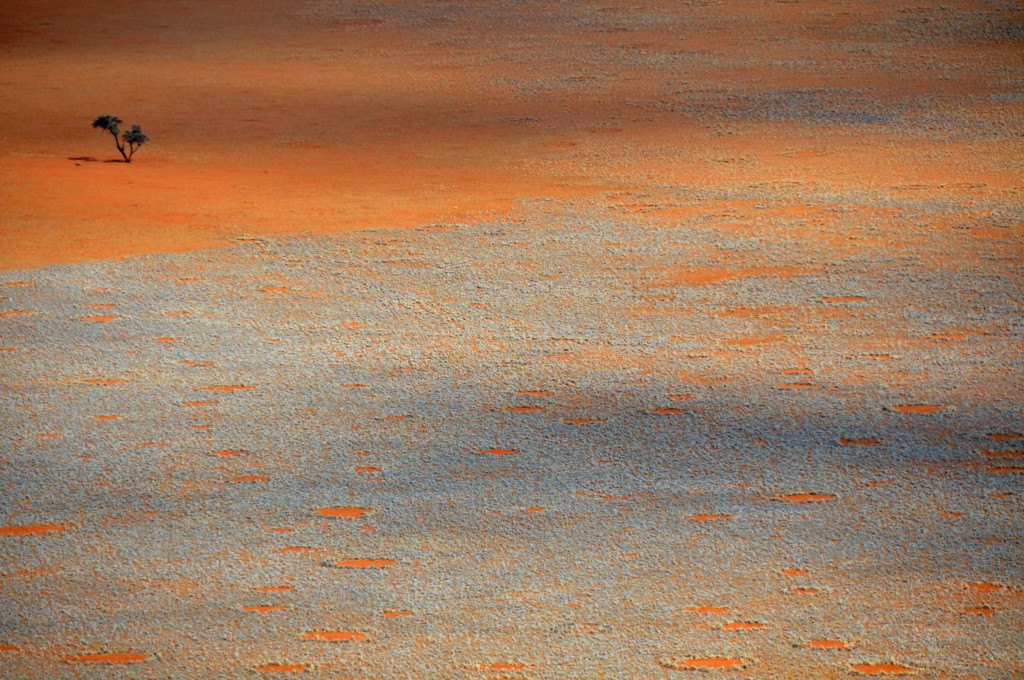
And no doubt part of the beauty is the sheer scale of the place, the vast emptiness and huge sky.
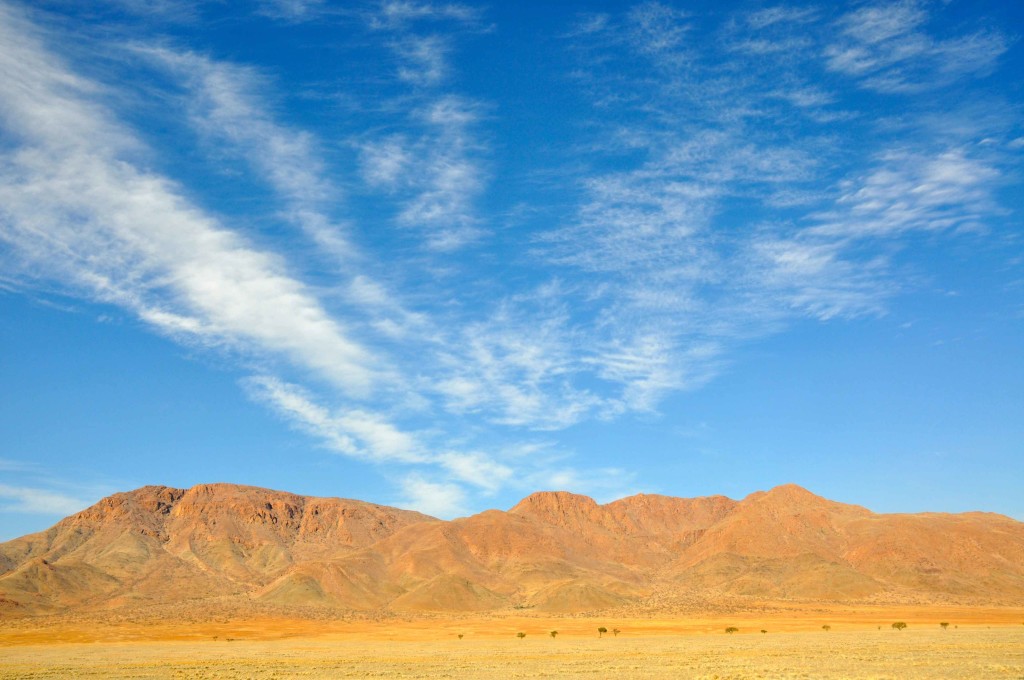
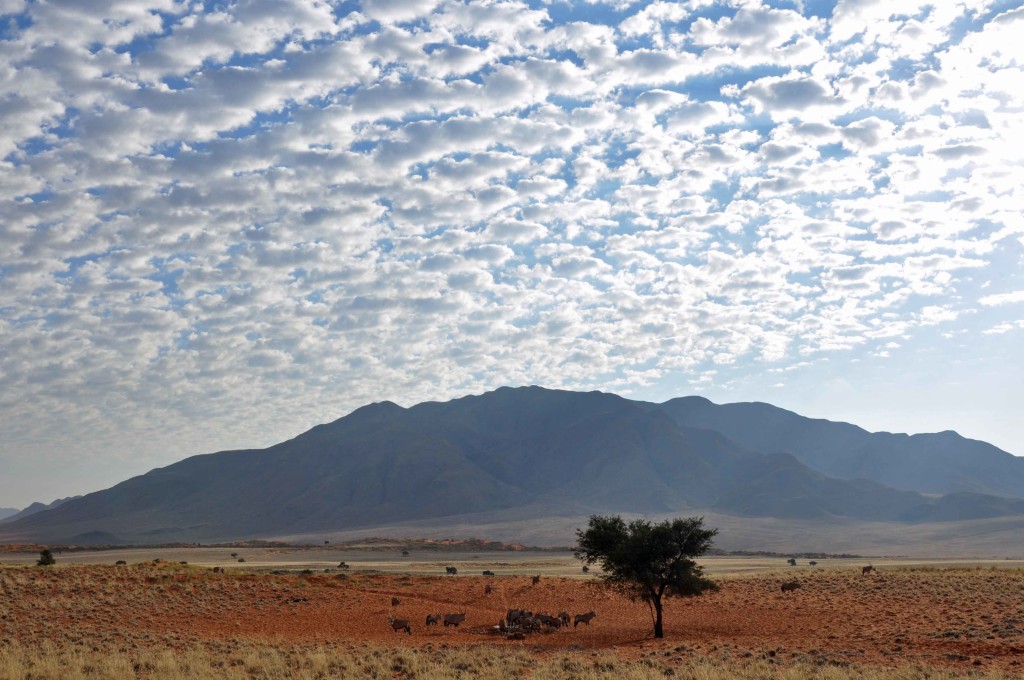
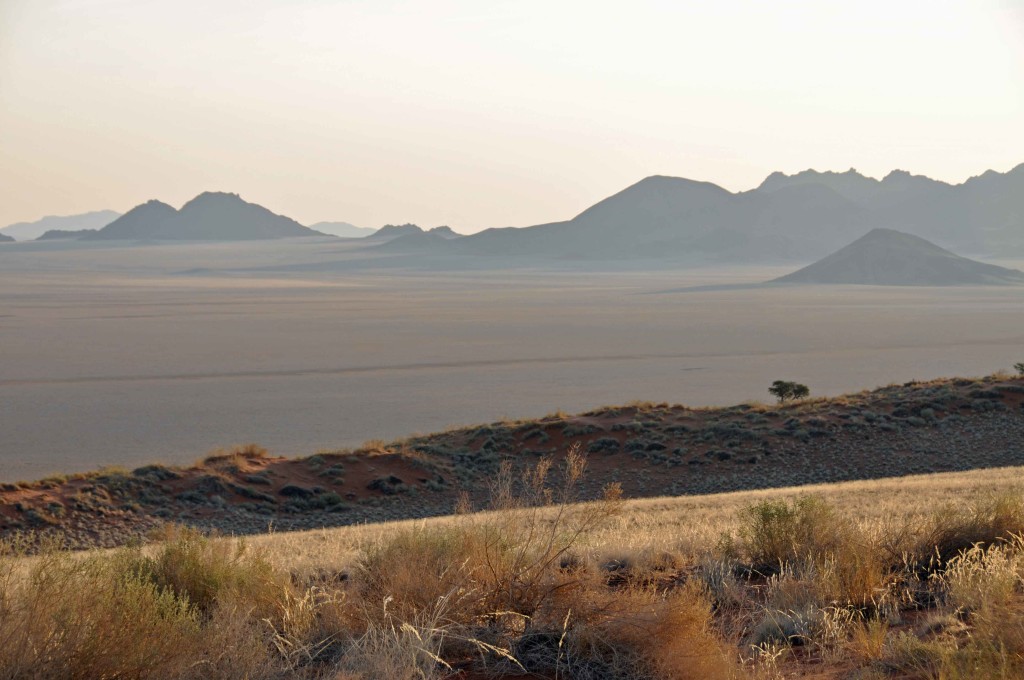 Driving through the dunes and immersing yourself into the landscape is just a unique experience.
Driving through the dunes and immersing yourself into the landscape is just a unique experience.
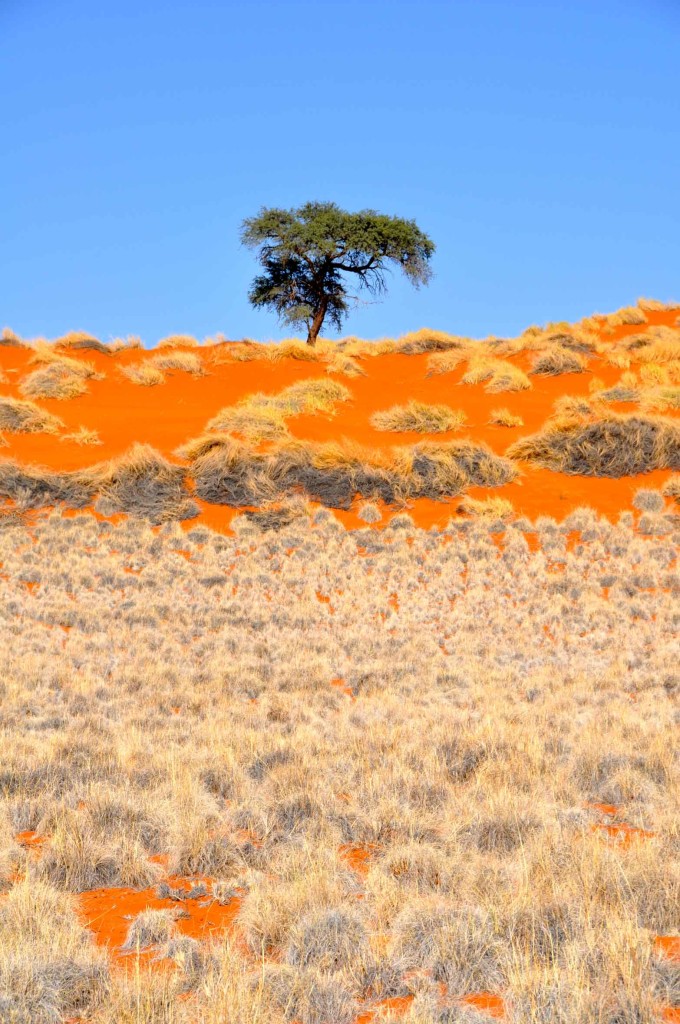
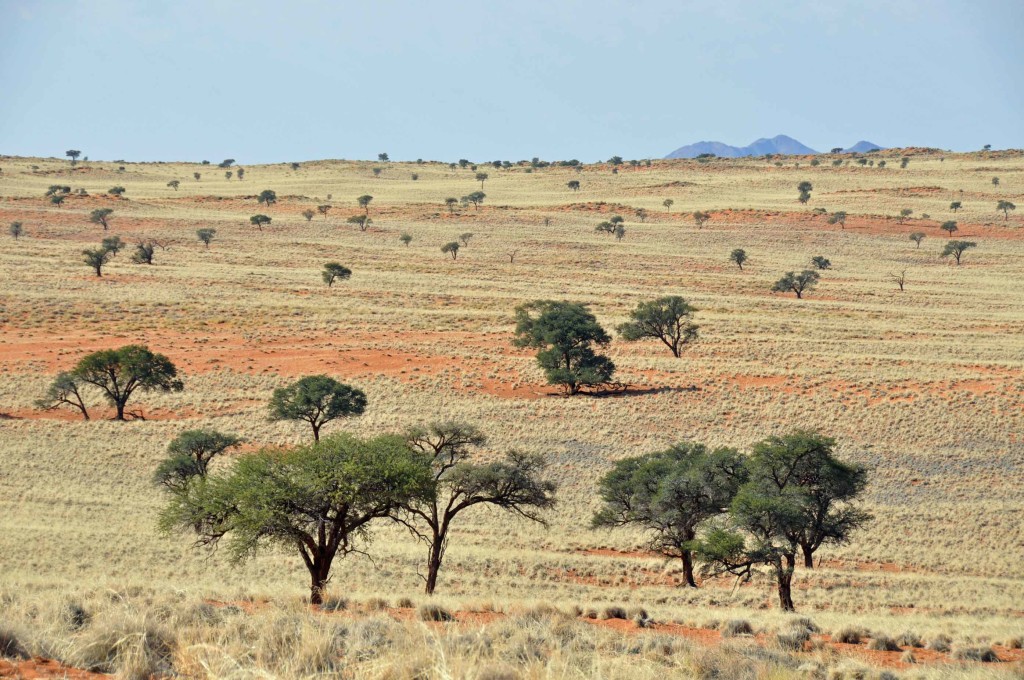
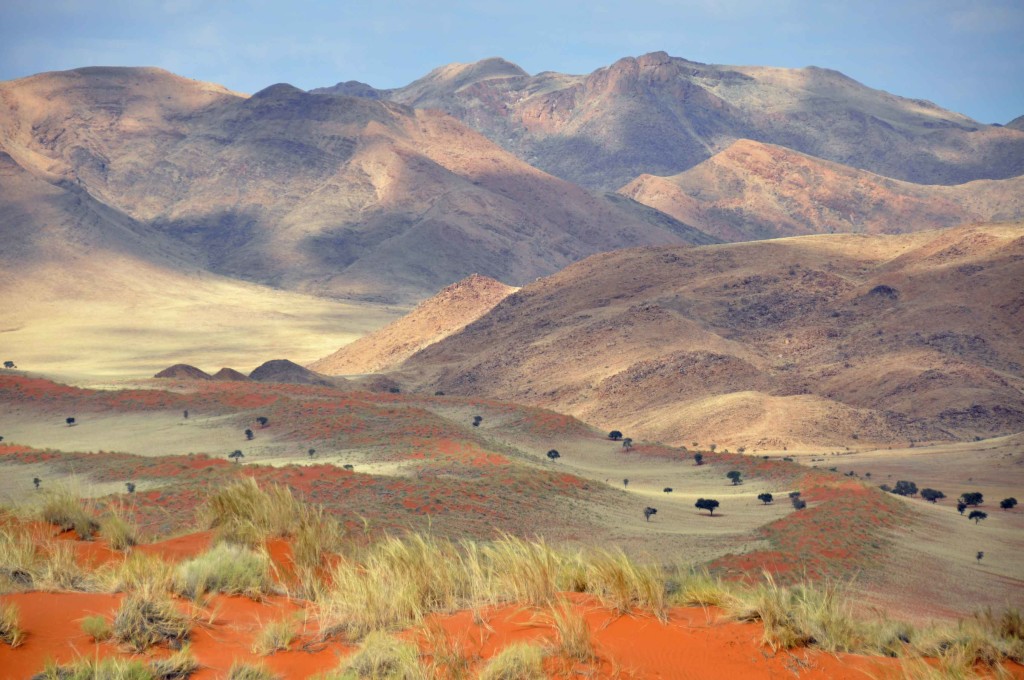
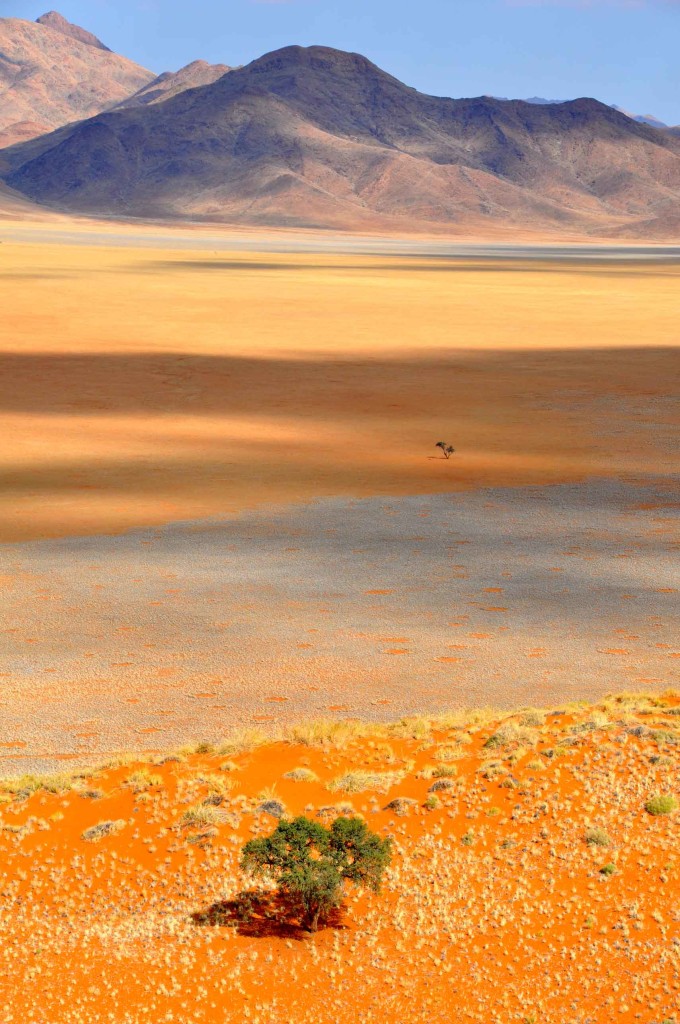
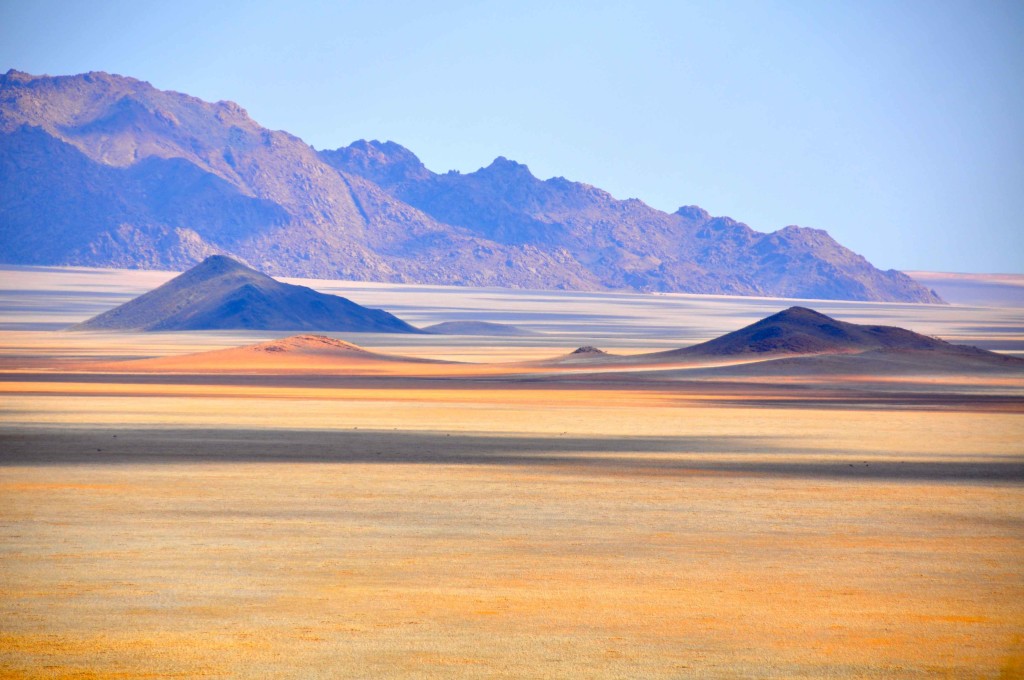
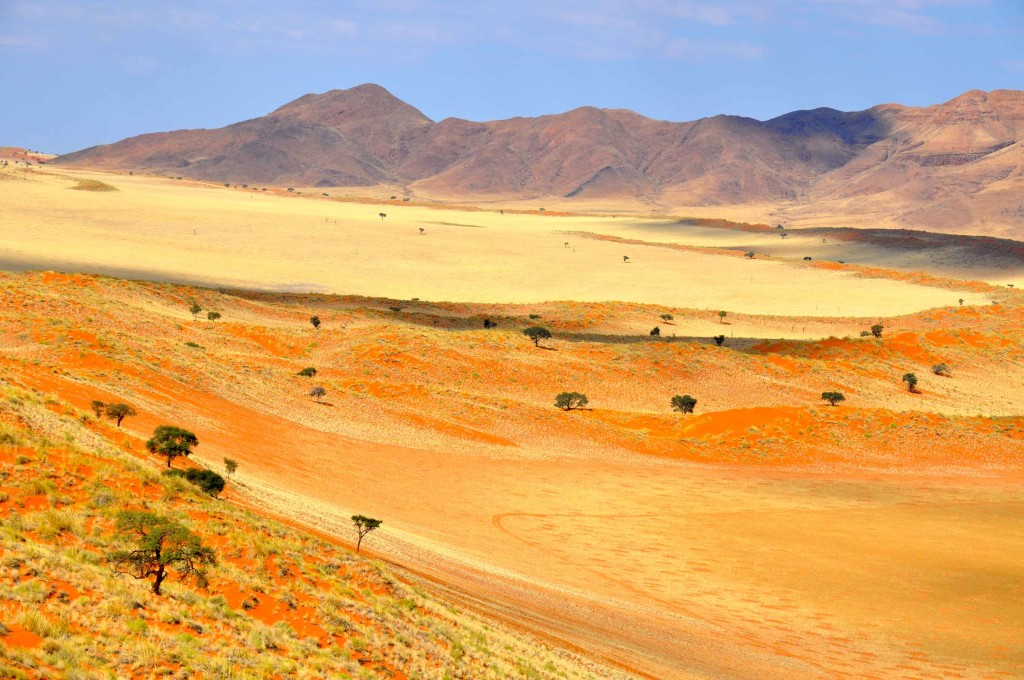
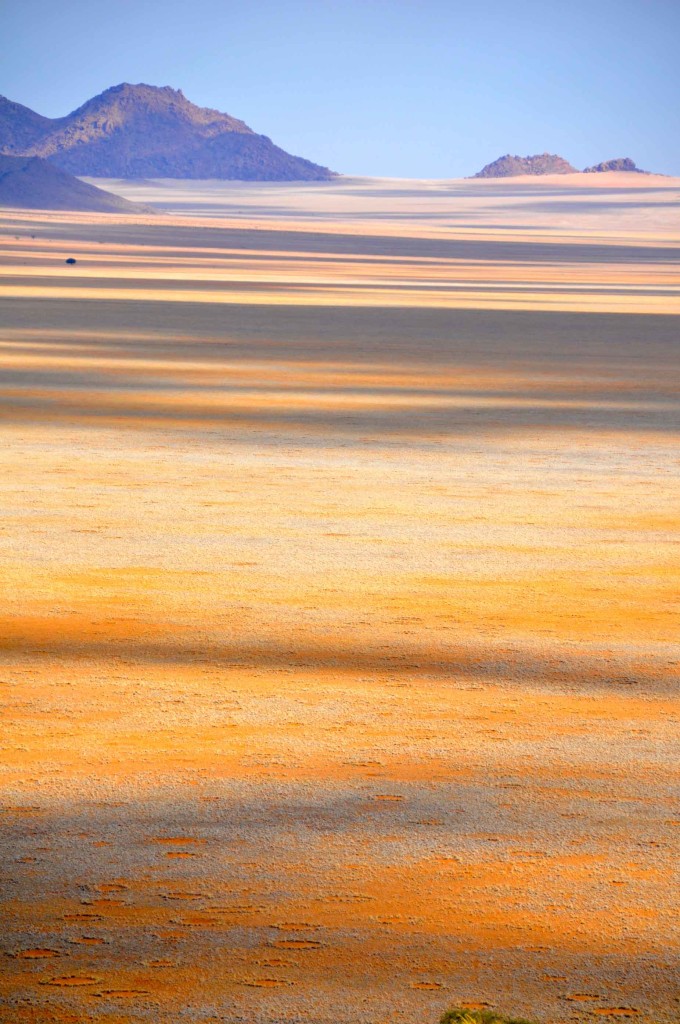
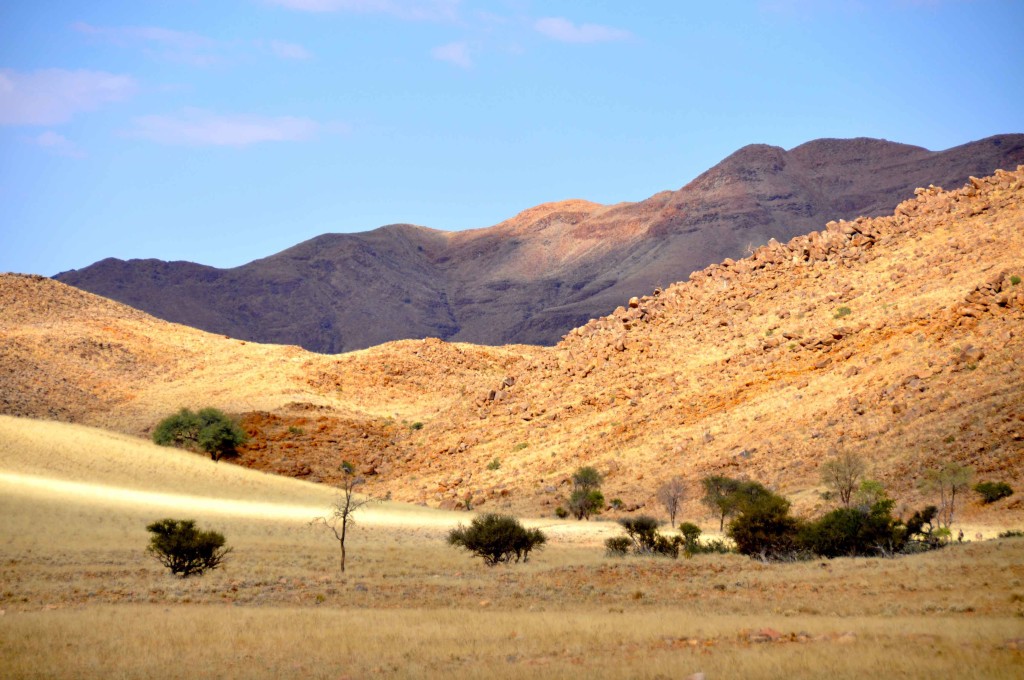

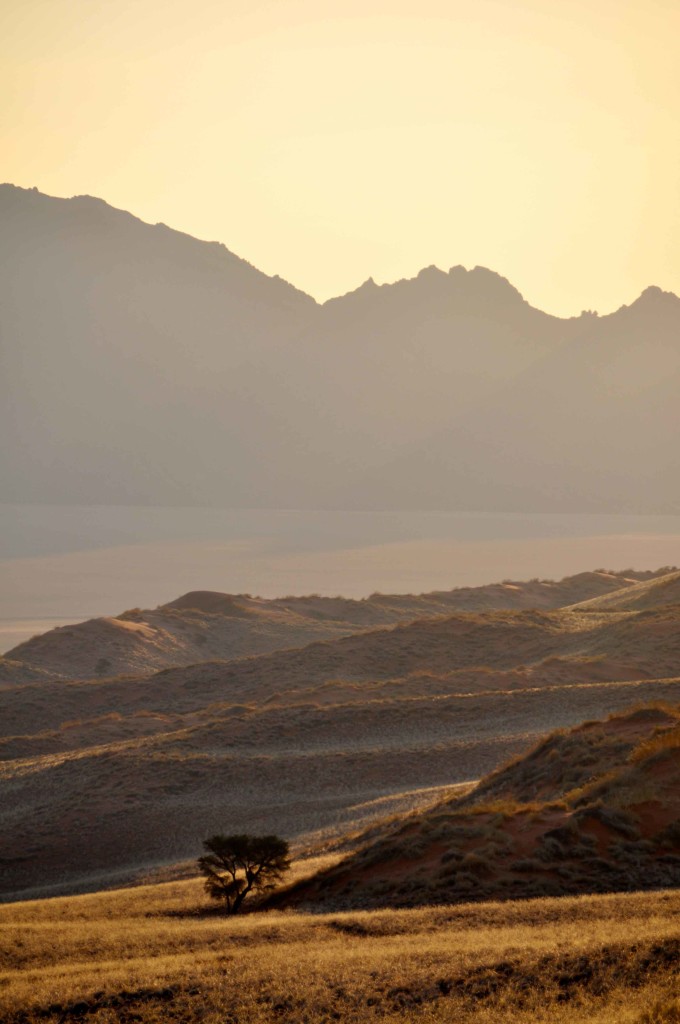
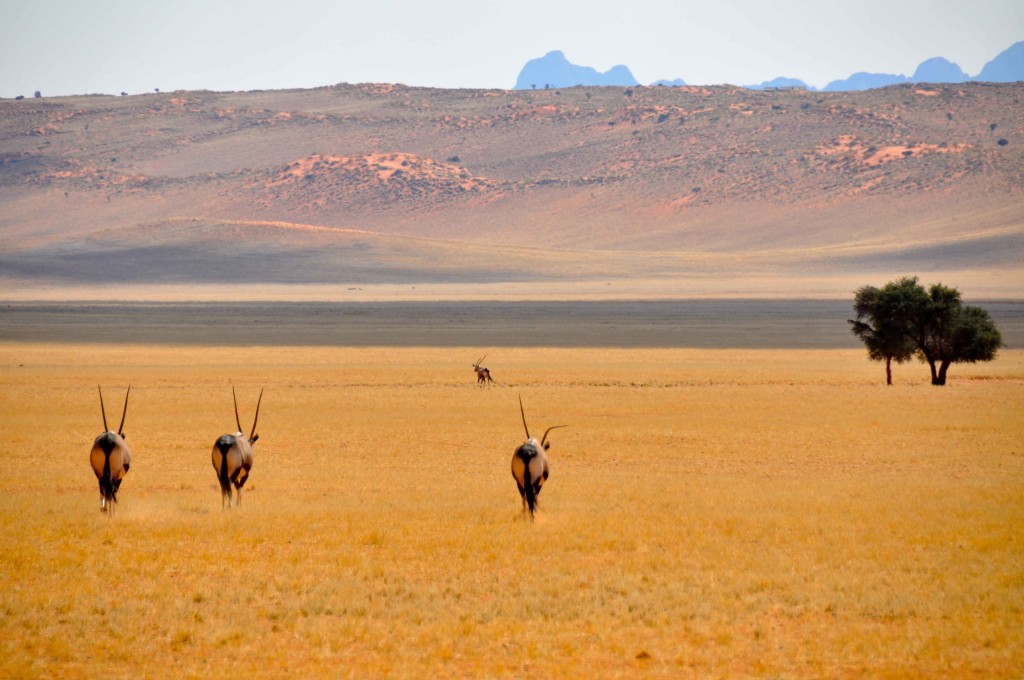
The whole of the sky lights up at sunset, to be followed by a sudden sharp and total black before the stars appear.
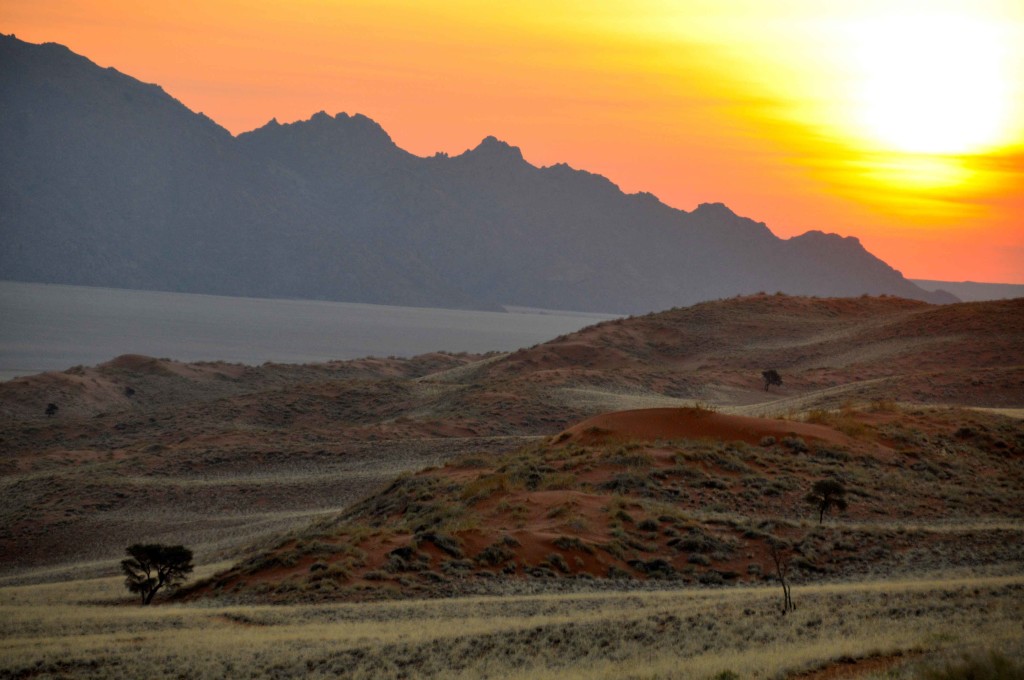
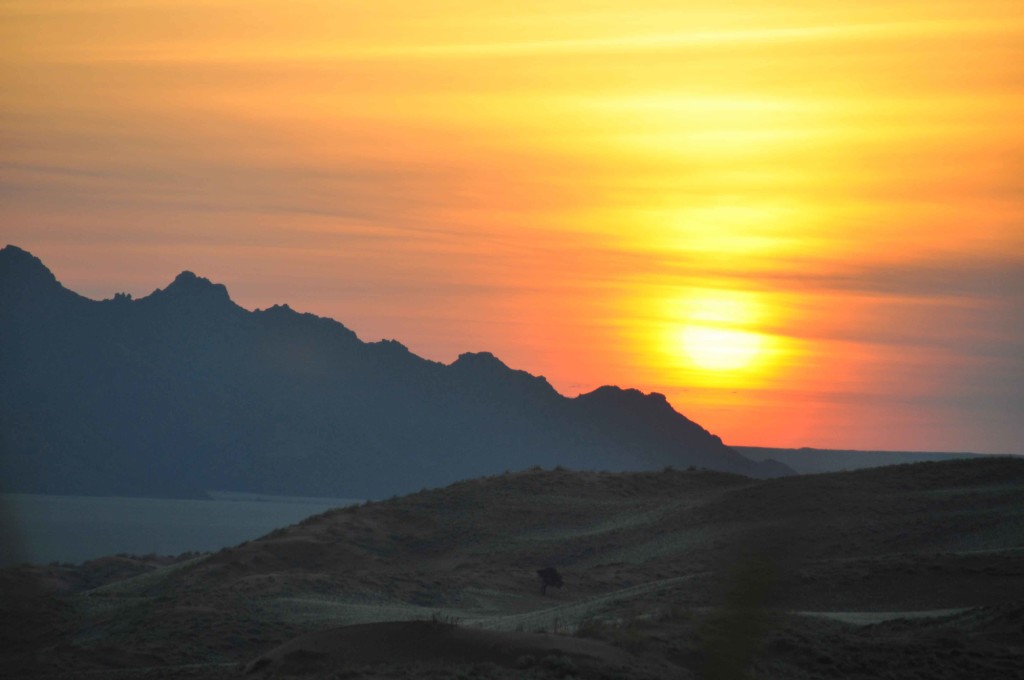
Throughout the day the colours around move through their palette from pale pastel to intense orange, yellow and red.
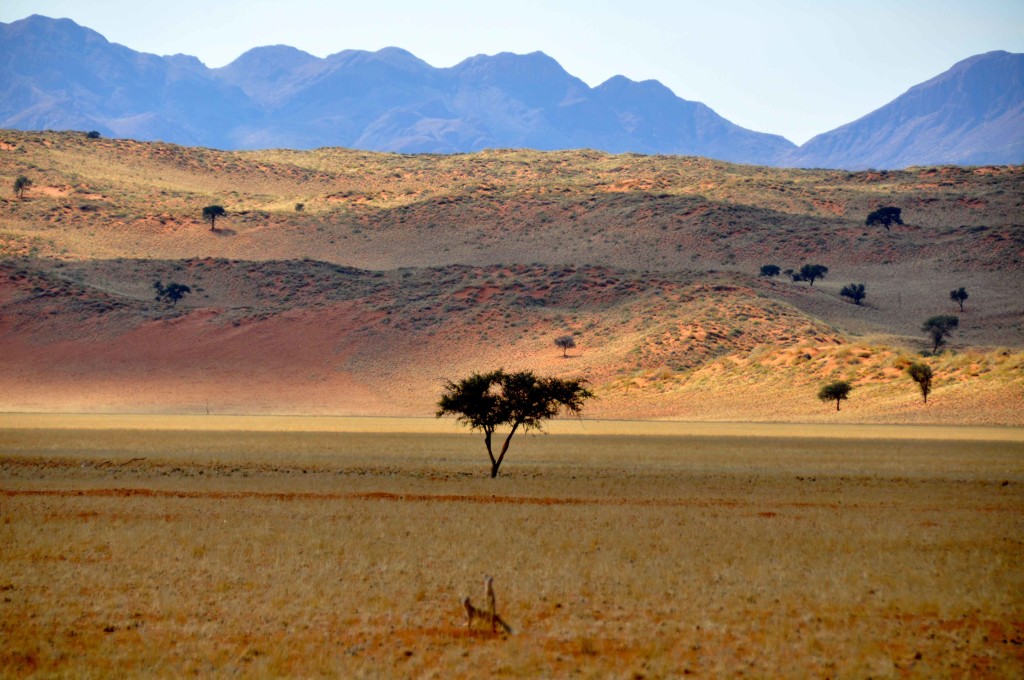

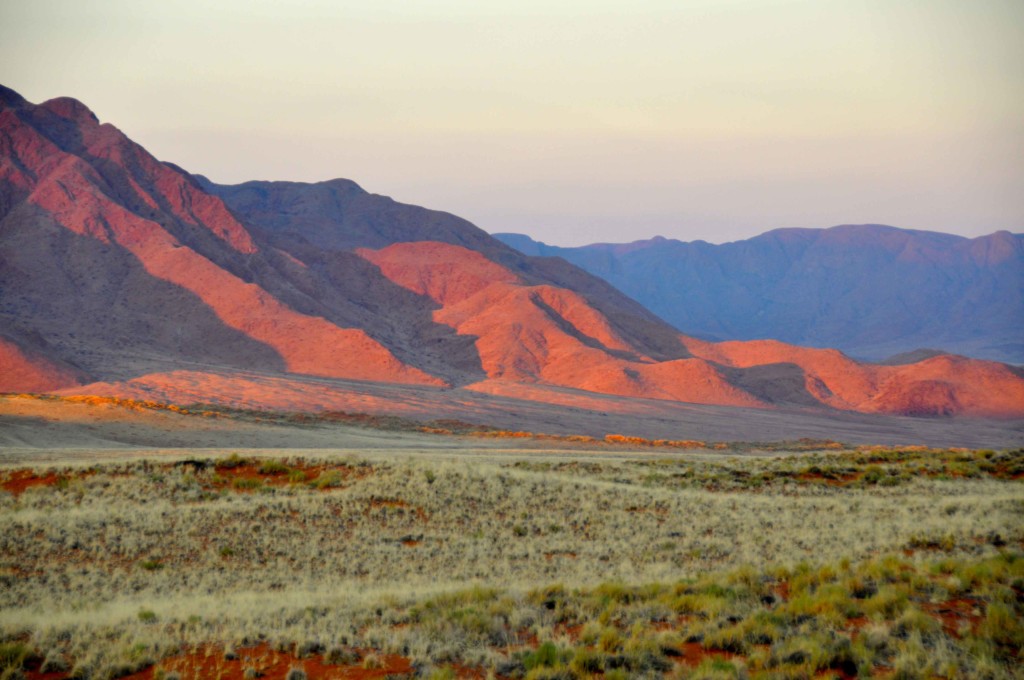
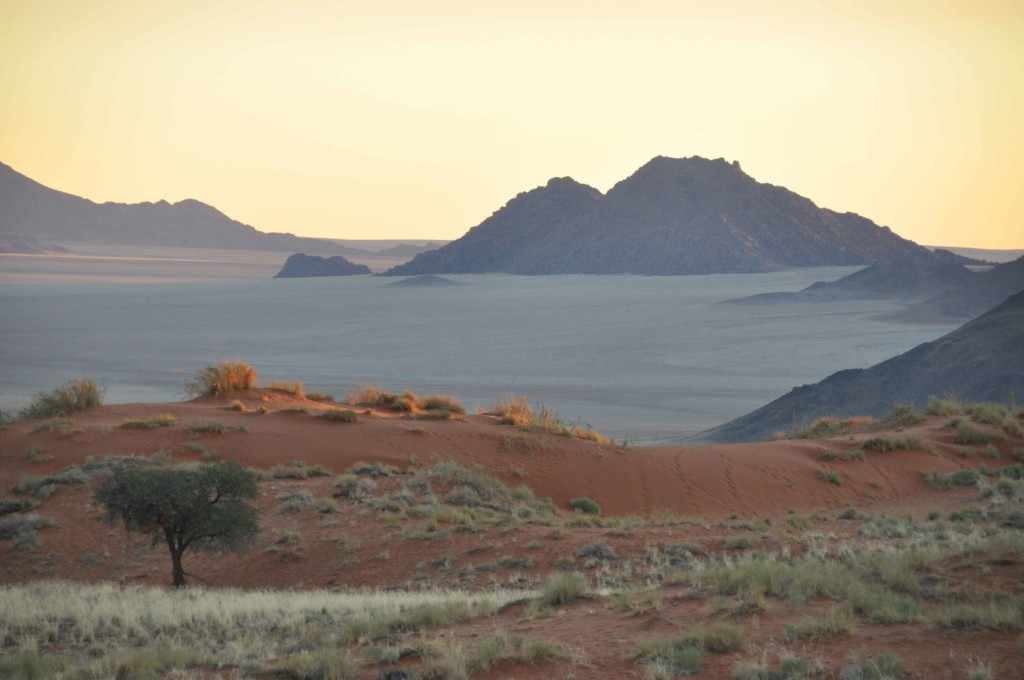
And flying home the utter strangeness of the place makes itself clear, with moonscapes and fairy rings.
